- You are here:
- Countries & Parks
- Namibia Travel Guide
- Best Time To Visit


Namibia Travel Guide Namibia
- Parks & Reserves
- Weather & Climate
- Popular Routes
- Getting There
- Malaria & Vaccinations
Best Time To Visit – Namibia

Anthony is a renowned Africa expert and author of many Lonely Planet guidebooks, including the 'Botswana & Namibia' guide.
Anthony is a renowned Africa expert and author of the 'Botswana & Namibia' Lonely Planet guide.
Anthony is the author of the 'Botswana & Namibia' Lonely Planet guide.
The best time to visit Namibia is in the Dry season from June to October, although it can be visited throughout the year. Wildlife viewing in all parks, but especially in Etosha, is best in the Dry season. The climate is generally dry and pleasant. Between December and March, some days will be humid and rain may follow, often in localized, afternoon thunderstorms. In the Wet season, animals move away from the waterholes and scatter around the park.
May to October – Dry Season – Winter
- Wildlife congregates around rivers and waterholes, making animals easier to spot – it is the best time to visit Etosha
- There are no clouds, it's sunny, and there is virtually no rain
- Even though most tourists visit during the Dry season, the parks still don't feel crowded, except for Etosha
- It gets cold at night and in the mornings – it's advisable to pack warm winter clothing during June, July and August for the cold morning game drives
Wildlife Photos

November to April – Wet Season – Summer
- After the rains, the scenery is greener and the rates are lower, because it's low season
- This is the time of the year you can see newborn animals – migratory birds are present, and birding is at its best
- Rains are mostly short showers in the afternoon and rarely have a negative impact on your trip
- It gets very hot from October to February
- It's more difficult to spot animals – this is especially true for Etosha

Best Time To Go by Major Park
If seeing wildlife is your main objective, the best time to visit all parks, especially Etosha, is in the Dry season from May to October. Namibia is a scenic country and can be visited throughout the year. The colors will be most vibrant during and after the Wet season. October to February can be unpleasantly hot.
- Etosha National Park Etosha National Park Poor "> Jan J Poor "> Feb F Poor "> Mar M Fair "> Apr A Fair "> May M Good "> Jun J Excellent "> Jul J Excellent "> Aug A Excellent "> Sep S Good "> Oct O Fair "> Nov N Poor "> Dec D
- Namib-Naukluft NP Namib-Naukluft National Park Good "> Jan J Good "> Feb F Good "> Mar M Good "> Apr A Excellent "> May M Excellent "> Jun J Excellent "> Jul J Excellent "> Aug A Excellent "> Sep S Good "> Oct O Good "> Nov N Good "> Dec D
- Skeleton Coast NP Skeleton Coast National Park Excellent "> Jan J Excellent "> Feb F Excellent "> Mar M Good "> Apr A Good "> May M Good "> Jun J Good "> Jul J Good "> Aug A Good "> Sep S Excellent "> Oct O Excellent "> Nov N Excellent "> Dec D
Want To Visit Namibia?
216 Namibia Safaris
- Namibia Family Safaris
- Namibia Camping Safaris
- Namibia Private Safaris
- Tour Operators for Namibia
Safari Tours to Namibia

19-Day Namibia Self Drive Adventure
$8,868 pp (USD)
Namibia: Self-drive Mid-range Lodge & Tented Camp
You Visit: Windhoek (Start) , Kalahari Region, Fish River Canyon (|Ai-|Ais/Richtersveld TP) , Aus (Town) , Namib-Naukluft NP (Namib Desert) , Swakopmund (City) , Damaraland, Etosha NP, Eastern Etosha NP, Erongo Mountains (Mountain Range) , Windhoek Airport (End)
Wayfairer Travel
4.9 /5 – 151 Reviews

3-Day Etosha Guided Camping Safari Experience
$663 pp (USD)
Namibia: Shared tour (max 6 people per vehicle) Budget Camping
You Visit: Windhoek (Start) , Etosha NP, Windhoek (End)
People Tours And Safari
4.9 /5 – 35 Reviews

11-Day Northern Namibia Self-Drive Adventure
$1,556 to $1,642 pp (USD)
You Visit: Windhoek (Start) , Sossusvlei (Sand Dunes) , Swakopmund (City) , Twyfelfontein (Rock Art) , Etosha NP, Okonjima NR, Windhoek Airport (End)
Indigo Safaris
4.8 /5 – 129 Reviews
Best time to visit Namibia
Book your individual trip , stress-free with local travel experts
Select Month
- roughguides.com
- Travel guide
- Itineraries
- Local Experts
- Travel Advice
- Accommodation
Plan your tailor-made trip with a local expert
Book securely with money-back guarantee
Travel stress-free with local assistance and 24/7 support
A semi-arid country possessing a climate generally characterized by low rainfall and low humidity , Namibia is a year-round destination, though the searing summer temperatures (October–February), which can exceed 40 degrees Celsius in some areas, deter many European visitors from holidaying at this time.
- When's the best time to visit Namibia
- What's the best month to visit Namibia?
Best time for a safari in Namibia
When is peak season in namibia, festivals and holidays in namibia, travel ideas for namibia, created by local experts.
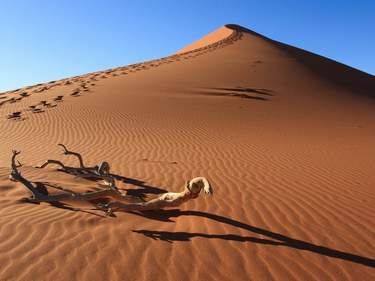
10 days / from 2600 USD
Ultimate Self Drive in Namibia
Explore Namibia on this epic, 10-day self drive trip. Highlights include the Namib, an ancient desert with towering dunes, dramatic mountains and colonial architecture at the waterfront. Additionally, you will visit the Himba people, discover Etosha National Park and more.

14 days / from 6616 USD
Epic Gondwana Adventure: Deserts, Ocean and Wilderness
Experience the best Namibia has to offer with a trip across the country, from the Kalahari to the Namib, the coast to Damaraland, ending off with an unforgettable time in the wildlife-mecca that is Etosha National Park.

8 days / from 16730 USD
Wilderness Safaris by Flight
Take convenient flights to explore the country's remote deserts, luxury lodges, safari camps, and iconic sights, from Sossusvlei's immense dunes to the rugged landscapes of Damaraland and the remote beauty of Kaokoveld.
When's the best time to visit Namibia
The peak tourist season in Namibia is in winter – June to September – which coincides with the dry season : there is virtually no rain and no clouds, so you’ll witness stunning night skies . It’s also easier to spot wildlife during these months as vegetation is sparse and animals are forced to congregate at established waterholes.
Days are sunny but average maximum daytime temperatures are more tolerable – 20–30 degrees, depending where you are – though they plummet at night: at the height of winter ( June–August ) they can drop to between 5 and 10 degrees, even dropping below zero in the desert and more mountainous areas.
The downside of visiting in the Namibian summer is that lodge prices and visitor numbers are often higher, although since the country is so vast, only Etosha , Swakopmund, and Sossusvlei get really crowded.
Start planning your trip to Namibia today! Simply get in touch with our local experts who will tailor a unique itinerary to suit all your wishes.

What's the best month to visit Namibia?
Namibia, a country known for its stunning landscapes and diverse wildlife, offers unique experiences throughout the year. However, choosing the best month to visit depends on what you want to see and do. Below, we take a look at seasonal changes, weather conditions, and different attractions to help you decide which time is right for you personally to travel to this breathtaking country in Southern Africa.
January: Best for green landscapes and bird watching
January in Namibia is characterized by a hot and humid climate, with temperatures typically ranging between 20°C and 35°C (68°F to 95°F). This time of year is characterized by high humidity and frequent afternoon thunderstorms, especially common in the northern regions. The landscape is lush and colourful, making this the best time to visit Namibia for birdwatching enthusiasts.
However, despite the attractive greenery, high temperatures and humidity can seem challenging, and rainfall can lead to mud and make some desert regions less accessible. Nevertheless, fewer tourists during this period can offer a more secluded vacation.
February: Best for landscape photography
February continues the theme of the wet season, featuring heavy rainfall and maintaining the high temperatures seen in January, ranging from 20 to 35°C (68 to 95°F). Continued rainfall contributes to lush landscapes and an abundance of wildlife, especially birds, making this an ideal time for nature lovers.
However, the climate remains challenging: significant humidity and heat can make travelling uncomfortable. In addition, mud can limit access to some areas and activities.
March: Best for off-peak travel
As March arrives, rainfall begins to decrease, although temperatures remain relatively warm, ranging from 18 to 32°C (64 to 90°F). The decrease in rainfall makes travelling easier than in previous months: the scenery is still lush but less crowded, providing a quieter experience.
Although the weather is generally improving, heavy rains can still occur from time to time, which can affect the accessibility of some regions and outdoor activities.

Lion cubs in Etosha National Park, Namibia
April: Best for hiking in Fish River Canyon
April marks the beginning of the dry season, with cooler temperatures and less rainfall, ranging from 15°C to 30°C (59°F to 86°F). This month is particularly favourable for wildlife watching as animals begin to congregate near dwindling water sources, and the more temperate climate makes travel and exploration more comfortable.
However, you should be aware that evenings can become significantly cooler, requiring extra layers of clothing to keep you warm.
May: Best for game viewing
May in Namibia is characterized by dry weather, clear skies, and moderate temperatures, usually between 10 and 28°C (50 and 82°F). This period is among the best times to visit Namibia for wildlife watching and landscape photography due to its good visibility and comfortable temperatures.
However, mornings and evenings can be quite cool, and as the tourist season begins, visitor numbers may increase in some areas.
June: Best for desert adventures and star gazing
June is characterized by cool temperatures, especially in the mornings and evenings, with daytime temperatures ranging from 7°C to 25°C (45°F to 77°F). The dry climate and clear skies create ideal conditions for outdoor activities and admire the rugged, beautiful desert scenery.
However, you should be prepared for very cold nights and realize that wildlife may be more scattered, as water is still relatively available outside of the central springs.

Waterberg Plateau, Namibia @ Shutterstock
July: Best for desert tours and cultural festivals
In July , at the height of Namibia's winter, mornings and nights can be cold and daytime temperatures range between 5 and 22°C (41 and 72°F).
This is also the best time to visit Namibia as it offers some of the best game-watching opportunities, as animals are more likely to be found near waterholes and the number of tourists is lower than during the peak season. However, the very cold conditions in the early morning and late evening require warm clothing.
August: Best for whale watching
In August , temperatures begin to rise, marking the end of winter. Daytime temperatures typically range between 10 and 28°C (50 and 82°F). The rise in temperature means that wildlife begins to gather more frequently at water sources, providing excellent viewing opportunities.
However, it also coincides with the start of the high tourist season, leading to more crowds and potentially reducing the sense of solitude in the wilderness.
September: Best for e xploring the Caprivi Strip
Namibia gets warmer in September , with temperatures typically ranging from 15 to 30°C (59 to 86°F), signifying the beginning of spring. This month is known for its peak conditions for wildlife watching and pleasant weather suitable for various outdoor activities.
However, it is also associated with a surge in the number of tourists, resulting in higher prices and potential crowding at popular tourist spots.

Trees and wooden boat reflected in water at sunset, Zambezi river, Namibia © EcoPrint/Shutterstock
October: Best for fishing expeditions on the Zambezi River
In October , temperatures rise significantly from 20 to 35°C (68 to 95°F), marking the onset of the hot season. Wildlife can still be seen during this period, especially near bodies of water, as the heat causes animals to congregate in search of water.
However, the intense heat, especially in desert areas, can be challenging, so early morning and late evening are the best times for outdoor activities.
November: Best for hot air balloon rides
November brings hot weather and the start of the wet season, with temperatures ranging from 18 to 33°C (64 to 91°F). The climate change revitalizes the scenery, with greener vistas and an increase in birdlife. However, the weather can be unpredictable and you may encounter both scorching heat and sudden downpours.
This month offers a unique perspective of Namibia as it transitions from dry to wet season, and is suitable for those looking for a combination of adventure and wildlife watching.
December: Best for a beach holiday
December in Namibia marks the full onset of the rainy season, bringing hot, humid conditions with temperatures ranging from 20 to 35°C (68 to 95°F). The rains transform the landscape, creating a lush, colourful environment and improving birdwatching conditions. However, increased humidity and the likelihood of heavy rainfall can affect travel and outdoor activity plans.
Despite these challenges, December offers less crowded vacations and the opportunity to see Namibia's rain-rejuvenated landscapes, appealing to those who prefer more secluded travel and enjoy the vibrancy of the wet season ecosystem.

Sunset in Etosha, Namibia © Lottie Gross
The best time to visit Namibia for a safari is during the dry season, from May to October, when wild animals congregate near water bodies, making them easier to spot. The weather during these months is mostly dry and cool, especially from June to August, providing comfortable conditions for game drives and outdoor activities.
Mornings and evenings can be cold, especially in desert areas, so warm clothing is recommended. The safari season peaks in September and October when temperatures begin to rise, but before the onset of the rainy season. This period offers excellent opportunities for game viewing, but it is also the time when the largest number of tourists are seen.
If you still want to avoid the crowds of tourists and also get good wildlife-watching opportunities, May and June are ideal, offering a balance between pleasant weather and animal visibility.
Want to give your kids an unforgettable safari experience? Read everything you need to know about travelling to Namibia with kids .
The peak tourist season in Namibia runs from July to October, coinciding with the dry winter months. During this period, the weather is mostly pleasant, with warm days and cool nights, making it ideal for wildlife watching and outdoor activities.
Tourist numbers peak, especially in popular destinations such as Etosha National Park and the Namib Desert, due to the excellent game-watching conditions and comfortable climate. Hotel accommodations and tours can be booked in advance, so if you are going to visit the country during these months, advance planning is recommended.

Oshanas, Namibia @ Shutterstock
Bank Windhoek Arts Festival
February–September. Windhoek . Annual festival of the visual and performing arts in venues across the capital, which climaxes in September. Includes the national Triennial Visual Arts competition, in which prize-winning works are exhibited.
Enjando Street Festival
March. Central Windhoek. Also known as Mbapira, this festival sees a two-day extravaganza of music, dance and colourful costumes, attracting groups from all over Namibia.
Sunday closest to Aug 23. Okahandja. Colourful Herero costumes, poetry and military parades remember those who died in the resistance against the German army.
Küste Karneval
August. Swakopmund. Annual German street carnival involving parades, food stalls and plenty of partying for adults and kids.
Lusata Festival
Last week of September. Chinchimani Village, 6km from Katima Mulilo. The annual traditional cultural celebration of the Mafwe people that takes place in the village of the tribal chief, Chinchimani Village, and attracts Mafwe from outside Namibia too.
Oruuano of Namibia Arts Festival
September & November. Soweto Market, Katutura. Organized by the Oruuano Namibian Artists’ Union, involving lots of dance and music.
Windhoek Show
First week of October. Windhoek. The country’s main agricultural and industrial trade fair, accompanied by funfair entertainment, live music and food stalls.
Oktoberfest
Last week of October. Windhoek. A German import, the Oktoberfest draws an international crowd, complete with beer-swilling, games, Lederhosen, Dimdl dresses and oompah bands.
The Rough Guides to Namibia and related travel guides
In-depth, easy-to-use travel guides filled with expert advice.
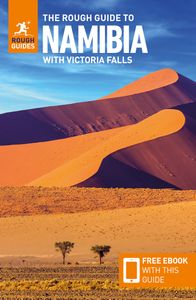
Travel advice for Namibia
From travel safety to visa requirements, discover the best tips for traveling to Namibia
- Eating and drinking in Namibia
- Getting around Namibia: Transportation Tips
- Going on safari
- Sports and Outdoor activities in Namibia
- How to get to Namibia
- Travel Health Namibia
- Travel Tips Namibia for planning and on the go
Find even more inspiration here

written by Rough Guides Editors
updated 22.05.2024
Ready to travel and discover Namibia?
Get support from our local experts for stress-free planning & worry-free travels.
- Where to stay
- Travel advice
Change location
- UK / International
- Call toll-free from 9am EDT
- 617-223-4521 617-223-4320 or
- REQUEST A QUOTE
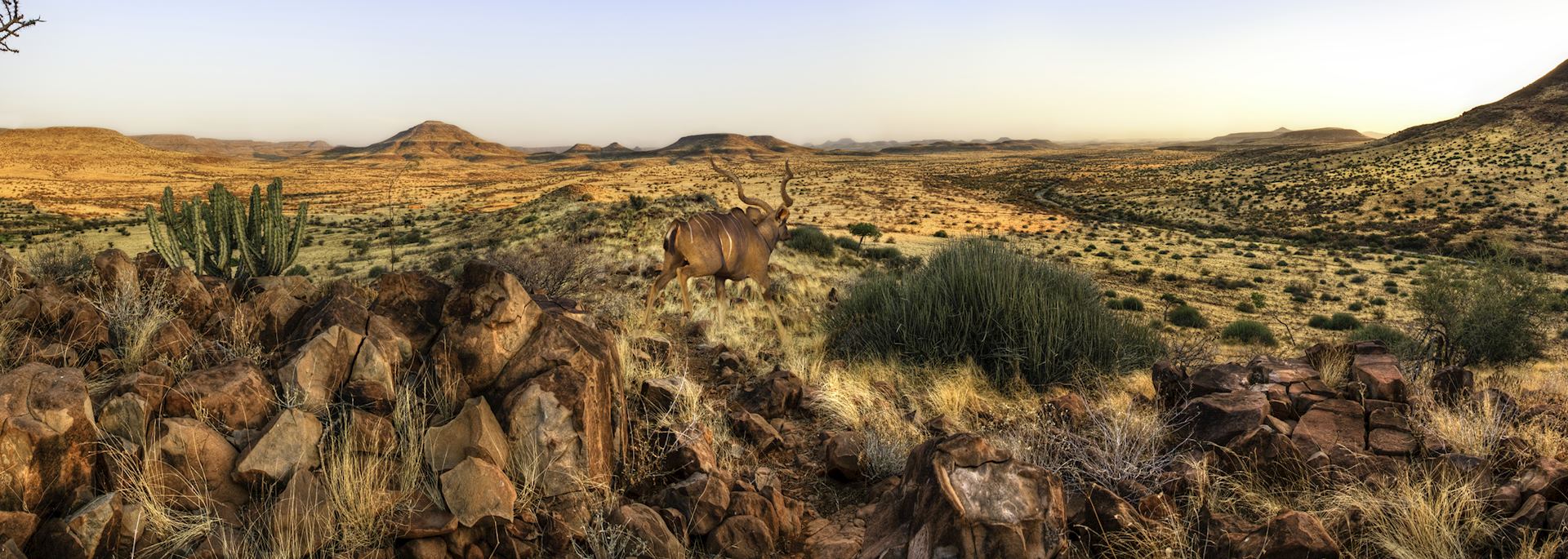
When is the best time to visit Namibia?
- Month-by-month
The best time to visit Namibia is from July to October, when the temperatures are just above 70°F and the chance of rain is low. This is also the best time for wildlife viewing, making it peak travel season — you will need to plan well in advance.
The Northern Hemisphere summer is warm and sunny, albeit with cold nights, while during the winter Namibia is hot with the chance of spectacular thunderstorms. However, it’s a predominantly dry country, where deep orange sand dunes contrast with cobalt skies.
- Make an inquiry
- Request a brochure
Month-by-month guide for traveling in Namibia
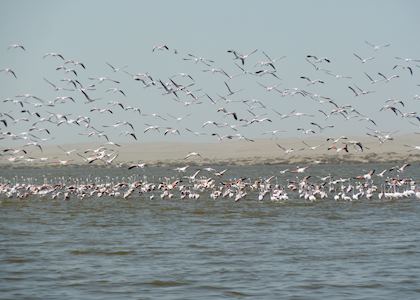
Visiting Namibia in January
This is mid-summer in Namibia. It tends to be hot and humid, with maximum temperatures hitting around 86°F to 95°F; reaching up to 104°F in the desert. There may be torrential downpours in the afternoon, but not every day. Mornings are usually clear, with the rain falling in the late afternoon.
Events & Festivals
- Birdwatching in the Caprivi Strip (November to February): The Caprivi Strip is at its best during the summer months, when there are fantastic birdwatching opportunities, with more than 450 species recorded in the area.
- Flamingos gather (November to February): The summer months are the best time to see a flamboyance of flamingos, where they gather on lagoons in their thousands in Swakopmund.
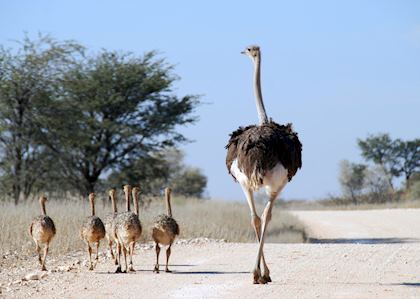
Visiting Namibia in February
Very similar to January, with hot, humid days and the chance of the occasional downpour in the afternoons.
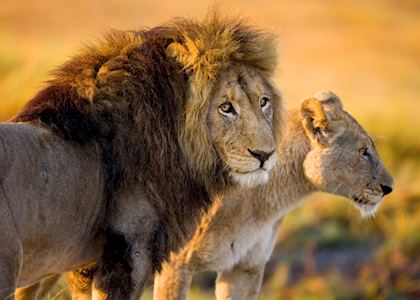
Visiting Namibia in March
Rainfall starts to decrease and temperatures lower after the rains. The nights start to get cooler again, with temperatures falling to around 59°F, although during the day this rises to around 86°F, making for pleasant conditions.
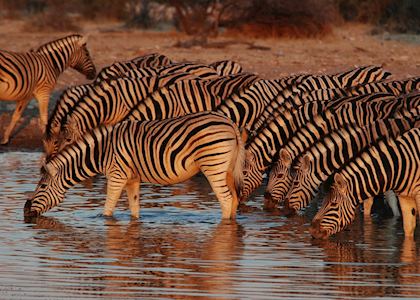
Visiting Namibia in April
The rain should have stopped by April and daytime temperatures should drop to around 77°F. Expect lows of around 55°F at night, although it can be cooler in the desert.
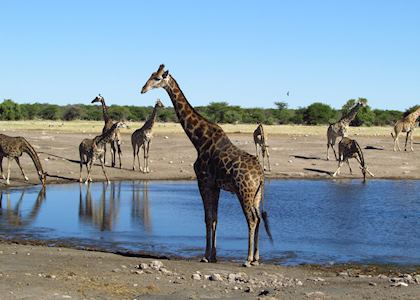
Visiting Namibia in May
May is the beginning of Namibia's winter. There is little to no rainfall during the winter and humidity is low. Wildlife will start to gather around the waterholes when rivers and other water sources dry up.

Visiting Namibia in June
The nights are getting cold and temperatures can drop to below 50°F, while in the desert areas it can get to freezing. Daytime temperatures are pleasant however, with blue skies and temperatures in the 70°Fs.
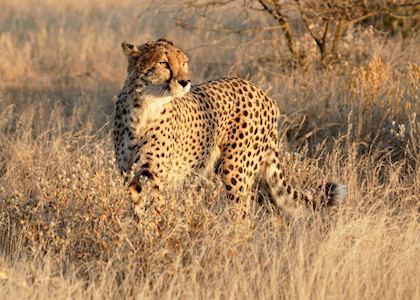
Visiting Namibia in July - August
July and August are the main winter months. Be sure to pack warm clothing because game drives in open vehicles can be chilly. The maximum temperature is around 70-77°F. At night it will be around 45°F, but it can drop to below freezing in the desert.
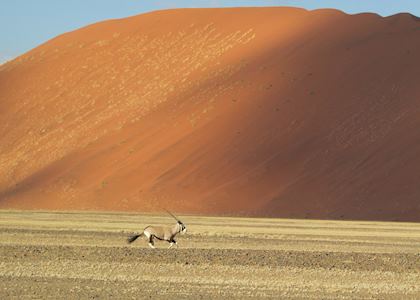
Visiting Namibia in September
September is a lovely month and considered the best time to travel to Namibia. It isn't yet too hot, but the humidity is still low, keeping it very pleasant. It is dry and the skies are clear.
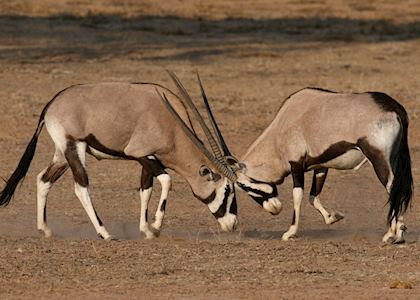
Visiting Namibia in October
During October the green vegetation is fading and the heat gradually builds up. This is a very good time for game viewing because the country is so dry. Temperatures during the day can reach 84°F and it gets even hotter in the desert.
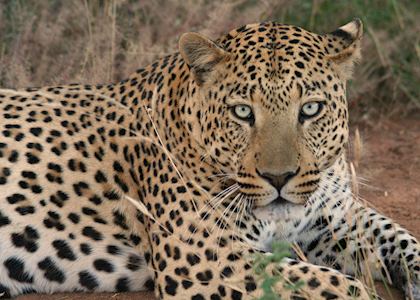
Visiting Namibia in November
The heat continues to rise by November and it will be very hot; although humidity is still low. On average, daytime temperatures are above 86°F. Clouds start to build in the afternoon, bringing a chance of rain.
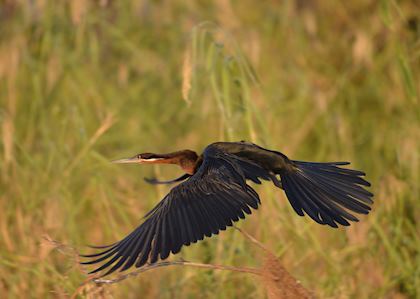
Visiting Namibia in December
The first rains usually arrive in December, and with it the temperature drops. The landscape changes after the first rains as everything comes to life, and the animals start to disperse as more water sources become available.
Namibia Climate Guide
More choice for your safari.
- Inspiration across all our African destinations
- Trip suggestions based on your interests
- Advice on where to safari, when
- Meet our team of safari experts

Travel advice
Practical tips for traveling to Namibia, from social protocols to guidance on money matters, with a link to the latest US State Department travel advice.

Request our brochure
Covering all seven continents, The World Your Way shows you how you can see the world with us. It features trip ideas from our specialists alongside hand-picked stays and experiences, and introduces our approach to creating meaningful travel experiences.
Trip ideas and travel guides for exploring Namibia
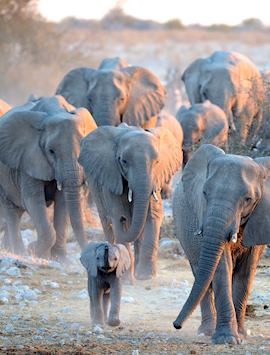
Northern Namibia self-drive safari to Victoria Falls
15 days from $7,630pp
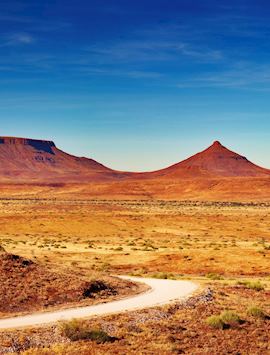
Namibia's highlights by private escorted tour (non self-drive)
13 days from $10,705pp

Namibia safaris
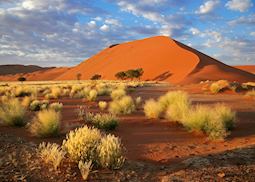
What to do in Namibia: our highlights guide
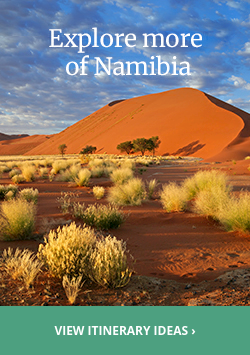
Best time to visit Namibia
When planning a trip to east Africa, choosing the best time to visit Namibia and its surroundings is important. Guests should be aware of the differences in climate, availability, activities and pricing when choosing between the various months and seasons.
Table of Contents
Best time to go to Namibia: Regions and months
Namibia is a beautiful country to visit, regardless of the season and popular with visitors arriving into Namibia from the U.S, U.K, Germany, Switzerland, Italy, South Africa and beyond. Some visitors may require a Namibia visa to secure their entry.
The country has a subtropical desert climate characterised by great differences in day and nighttime temperatures, low rainfall and overall low humidity.
Namibia also has desert along the coast and in the south, and arid, but with a rainy season from November to March, in inland north-central areas and in the north-east.
The country experiences winter and summer at opposite times as Europe and North America and they correspond to the Dry and Wet seasons.
The best time to visit Namibia is in the Dry season from June to October, although it can be visited throughout the year. Wildlife viewing in all parks, but especially in Etosha National Park is best in the Dry season.
Namibia wildlife viewing
Because of the arid environment, wildlife numbers are relatively low in Namibia, but animals are easy to spot. All of the big predators are present, and cheetahs are especially common throughout.
Huge herds of animals, elephants in particular, can be seen in the Dry season at Etosha pan.
Damaraland is home to a healthy population of desert-adapted elephants, a smaller population of black rhino can be tracked in a similar environment. The secretive brown hyena is sometimes seen lurking around seal colonies on the coast.
Other marine wildlife includes the rare heaviside’s dolphin and migrating southern right whale.
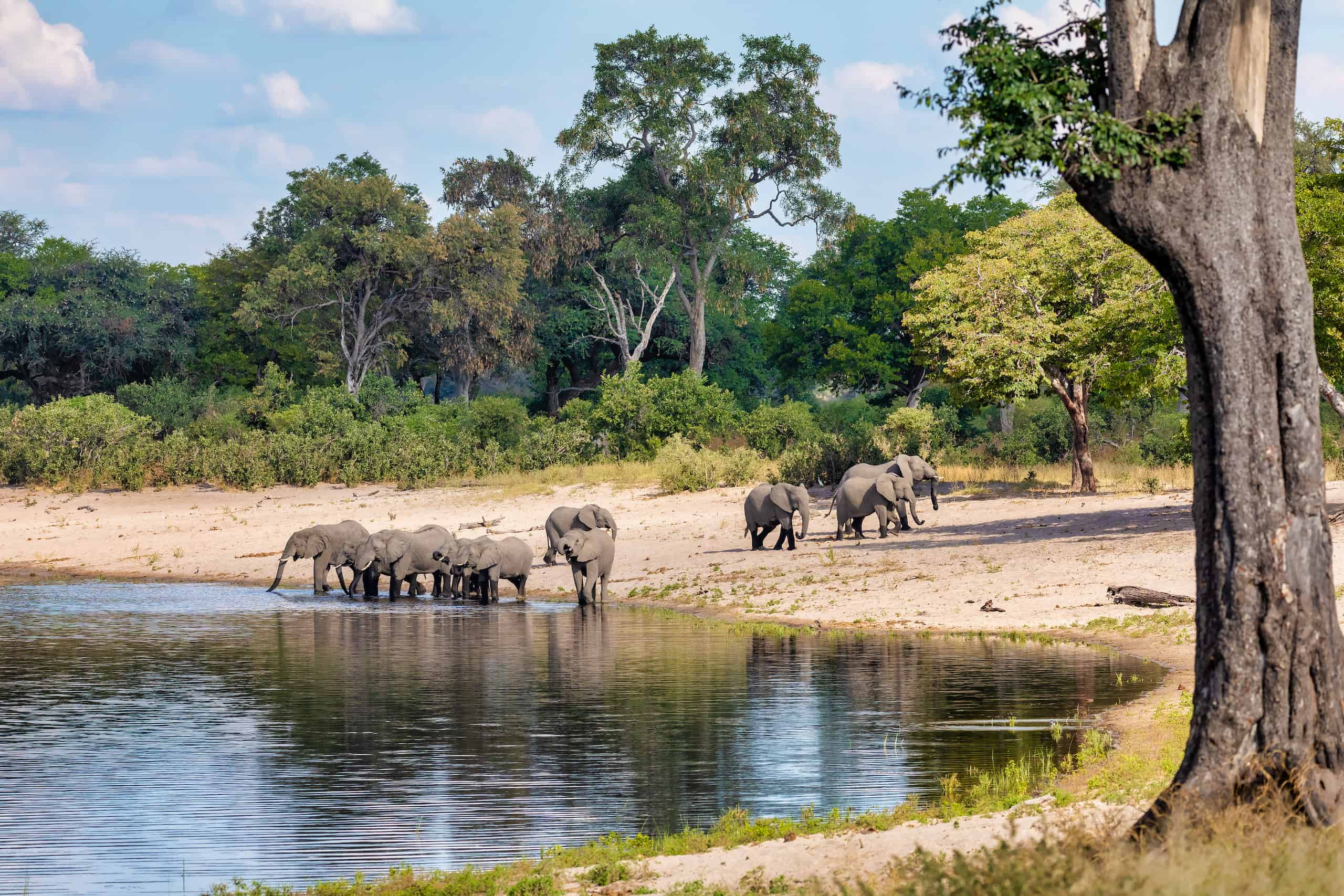
Weather and climate in Namibia
Seasons in namibia .
The climate is generally dry and pleasant. Between December and March, some days will be humid and rain may follow, often in localised, afternoon thunderstorms. In the Wet season, animals move away from the waterholes and scatter around the park.
Namibia is relatively dry throughout the year, but there are two rainy seasons. The little rains are from November to December and the main rainy season is from January to April.
During the rains, vegetation grows throughout the region and wildlife tends to scatter and is harder to find. The end of the Dry season (July-October) is the best time to see animals at the waterholes.
This coincides with the busiest tourist season and visitors are advised to be aware of Namibia vaccine requirements.
Temperatures in Namibia
Mean annual temperature for Namibia is 20.6°C, with average monthly temperatures ranging between 24°C (November to March) and 16°C (June, July). Mean annual precipitation is 269.2 mm.
Rainfall occurs from October to April, with minimal rainfall in May and September, across the latest climatology, 1991-2020.
The dry season in Namibia is from April to October, with the rains mainly falling from November to March. In April/early May, the grasses are still long and foliage quite thick after the rains, making game viewing more challenging.
Namibia’s Wet Season. The ‘rainy’ season is during the summer months, from November to April. The weather tends to be hot and humid with dramatic afternoon thunderstorms.
When to go to Namibia: Activities
The best time to visit Namibia is from July to October, when the temperatures are just above 20°C and the chance of rain is low. This is also the best time for wildlife viewing and so many other great things to do making it peak travel season — you will need to plan well in advance
Outdoor activities
Namibia has some of the most beautiful landscapes in Africa or perhaps even the world. It’s hard to explain what makes its vistas so inspiring and mesmerizing, but many would say that the country’s biggest asset is its wide-open spaces.
Climbing Dune 45 in Sossusvlei
Deep in the heart of the Namib desert are huge red dunes. At over 300m high, some of these are the tallest sand dunes in the world. The most photographed dunes are those surrounding famous pans, such as Sossusvlei and Dead vlei.
For climbing, however, dune 45 (45km along the road towards Sossusvlei) has the most ideal conditions. Walking along the crest and reaching the top of this sand formation is no easy feat, but more than worth the effort.
Etosha National Park
The Etosha National Park is centered around the vast Etosha salt pan. The pan itself is usually dry and only fills with water briefly in the summer, but is enough to stimulate the growth of a blue-green algae which lures thousands of flamingos.
Most of the wildlife, including herds of zebra, wildebeest and antelope, can be seen around the waterholes that border the pan. Etosha is served by three well established rest camps and offers a great self-drive safari experience.
Fish River Canyon
The Fish River Canyon is one of the best places to visit in Namibia. As one of the largest canyons in the world, it is always impressive, but early or late in the day the combination of soft light and playful shadows reveals its true beauty.
You’ll get a great photo from the main viewpoint, but avid hikers will get a better sense of the canyon’s proportion when tackling the 90km multi-day hike. For guided hikes, it’s recommended to carry a small amount of Namibian currency or USD dollars to tip your tour guide.
Located in the Namib Desert, Sossusvlei is an enormous clay pan surrounded by gigantic, red sand dunes. The Tsauchab River flows through the desert, and its rare flooding waters the vegetation that survives in the clay soil.
During sunrise and sunset, the colours of the sand dunes are constantly changing and provide an opportunity for photographers. The fierce desert winds continually alter the shape and texture of the dunes, providing an ever-changing desert landscape.
What is the best time to visit Namibia?
July to October is the best time to visit Namibia during the dry season for a safari.
What type of climate does Namibia have?
Namibia has a subtropical desert climate characterised by great differences in day and nighttime temperatures, low rainfall and overall low humidity with mean annual temperatures of 20C.

Best Time to Visit Namibia
It doesn’t matter what time of year you experience Namibia—its epic wildlife and breathtaking beauty is on display year-round. The cooler and drier winter season, from May to September, is the most popular time due to concentrated wildlife. The shoulder months of April and October can vary, but often offer the best of both summer and winter. The green season months, from November to March, are punctuated by short and spectacular afternoon showers. It’s during these warmer summer months that the plains game enter calving seasons, flocks of migratory species descend upon the verdant landscape, and dust-free skies allow for astonishing vistas. To take advantage of this quieter (and cheaper!) time, our special Green Season Safari captures the best of Namibia—with savings of more than $1,500 per person compared with safaris in the peak season.
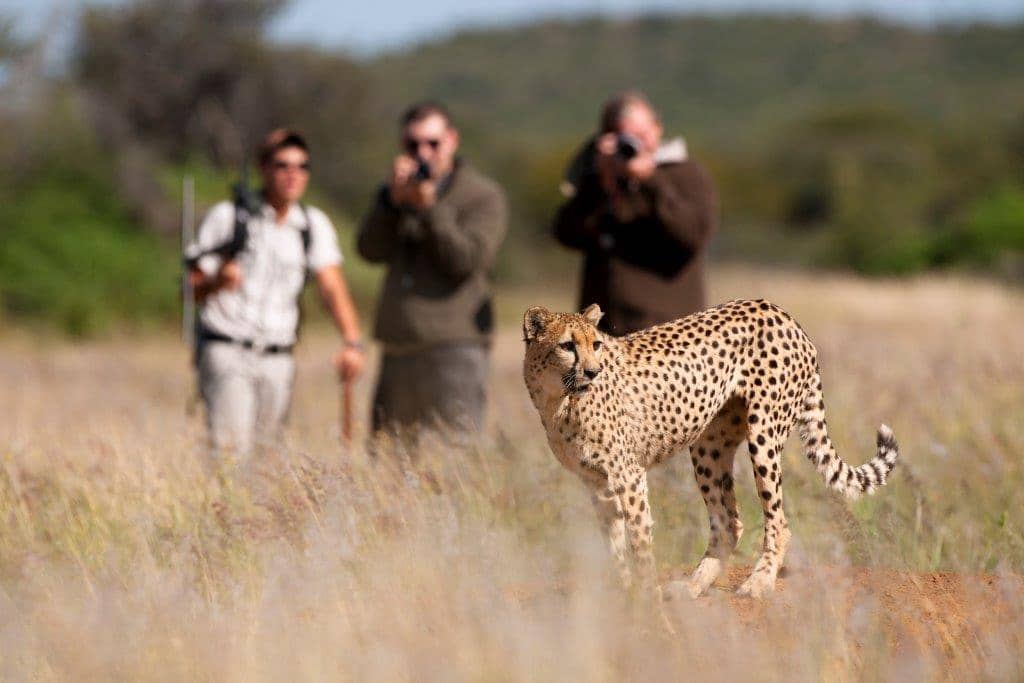
Visiting during the summer’s peak means higher temperatures and afternoon showers, which is a small price to pay for the highlights it affords: fewer crowds, prime birdwatching, and the deep hues of the Namib desert contrasted against lush greenery. Join us on our Green Season Safari —a great value at over $1,500 less per person than for a similar peak-season safari—to explore every corner of this otherworldly destination.
Similar to January, this month’s higher heat, humidity, and chance of rain can often feel like a blessing in disguise, with clear, dust-free air; warm morning game drives; and unique wildlife viewing (Baby animals! Flamingos!).
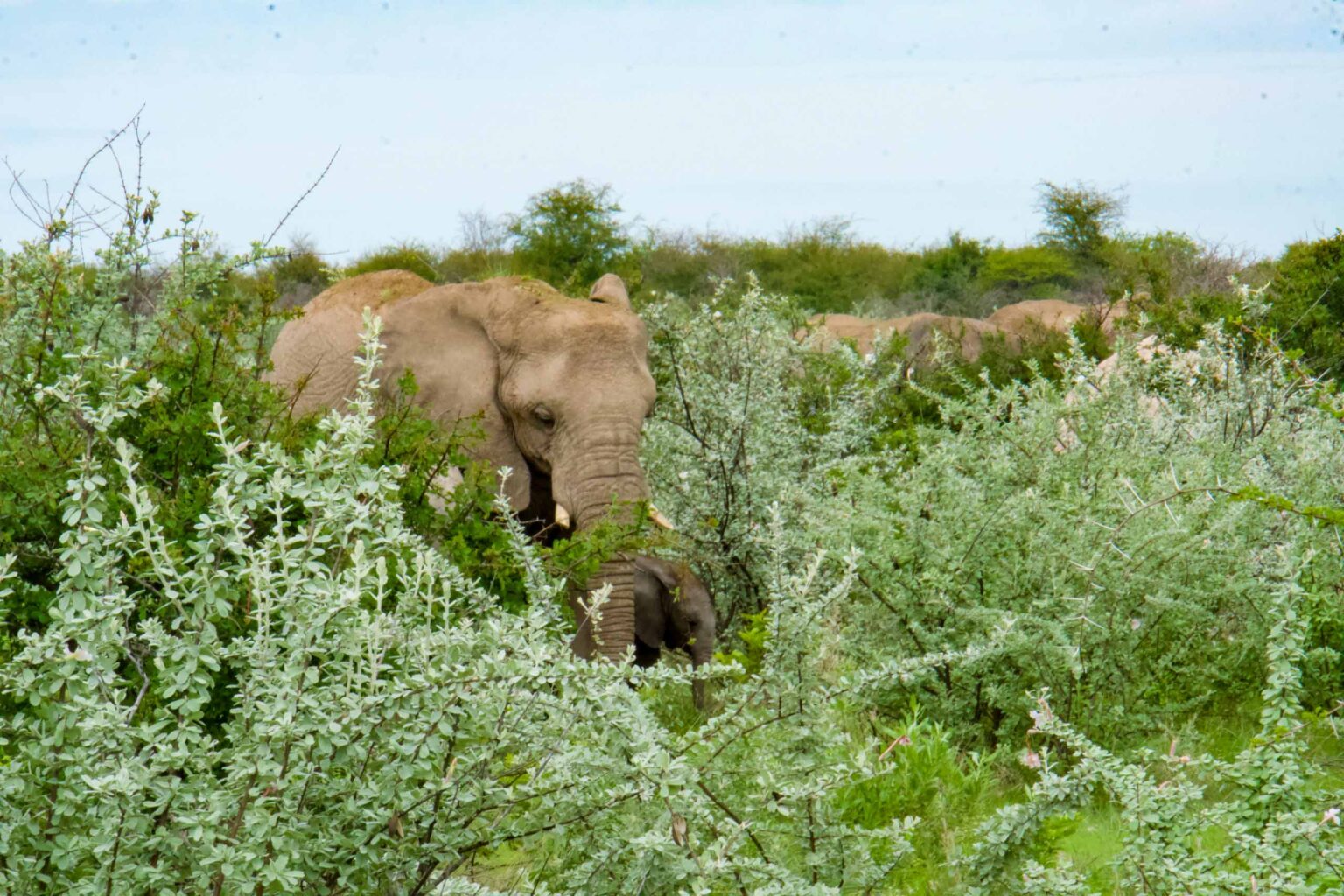
Offering a lovely balance between summer and winter’s unique draws: cooler air yet the chance to see spectacular thunderstorms; pleasant desert mornings and comfortable coastal afternoons. It’s an especially ideal time to visit the iconic Skeleton Coast, one stop on our thrilling two-week Green Season Safari , which comes with a savings of more than $1,500 per person compared with safaris in the busy season.
This month ushers in the end of the rainy season. It also marks the slow start to peak safari season. Our classic Namibia Expedition kicks off this month, and takes full advantage of the shoulder season, from tracking rhino on foot in Damaraland to sleeping beneath the stars in Africa’s first Dark Sky Reserve.
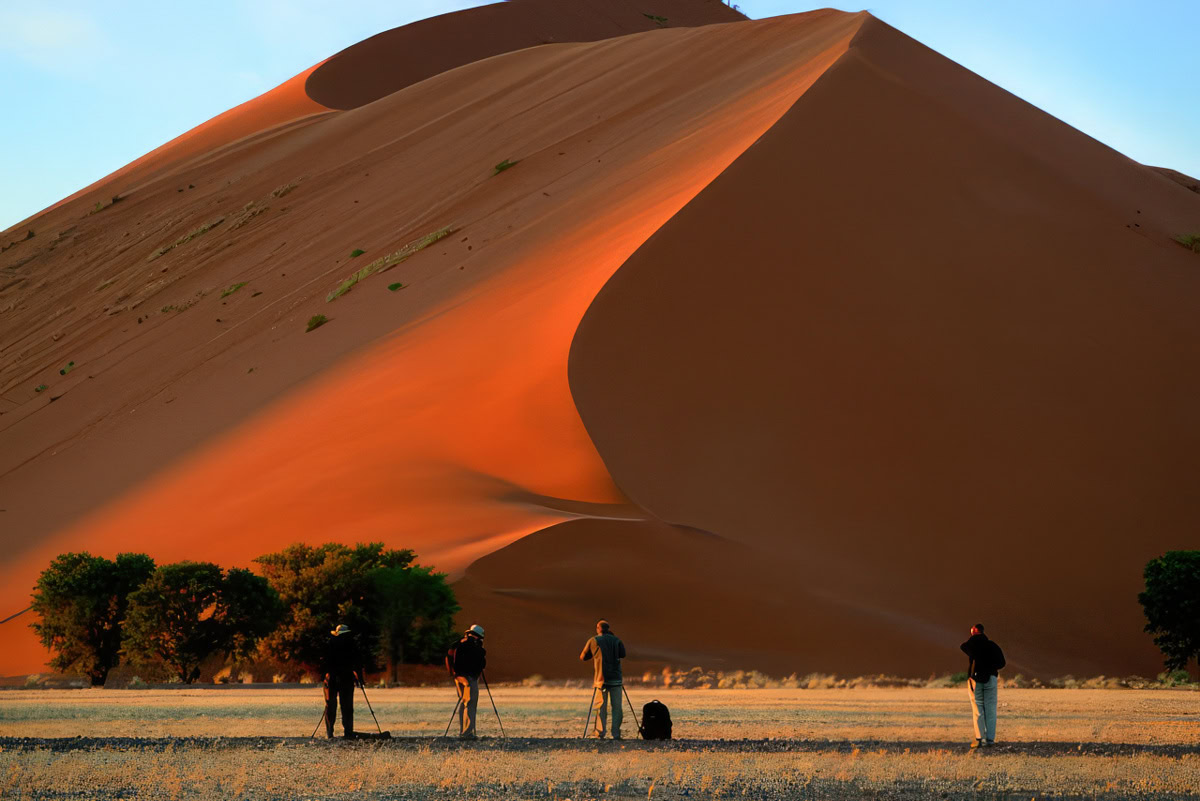
The official start to winter means less humidity and cooler temperatures. Plus, as vegetation dwindles and water sources dry up, Namibia’s unique wildlife (Desert-adapted elephants! Black rhino!) become easier to track and spot. Our Ultimate Namibia and Botswana adventures begin this month, highlighting the best of each destination.
We begin to enter peak wintertime, with chilly mornings and nights, and drier conditions making for excellent game-viewing, especially in the wildlife epicenter of Etosha National Park. Joining our Namibia Expedition and Ultimate Namibia and Botswana journeys is a world-class conservation itinerary: In the Realm of the Desert Lion . This exclusive safari, only offered every few years, takes WT travelers behind-the-scenes of the country’s efforts to protect this unique predator.
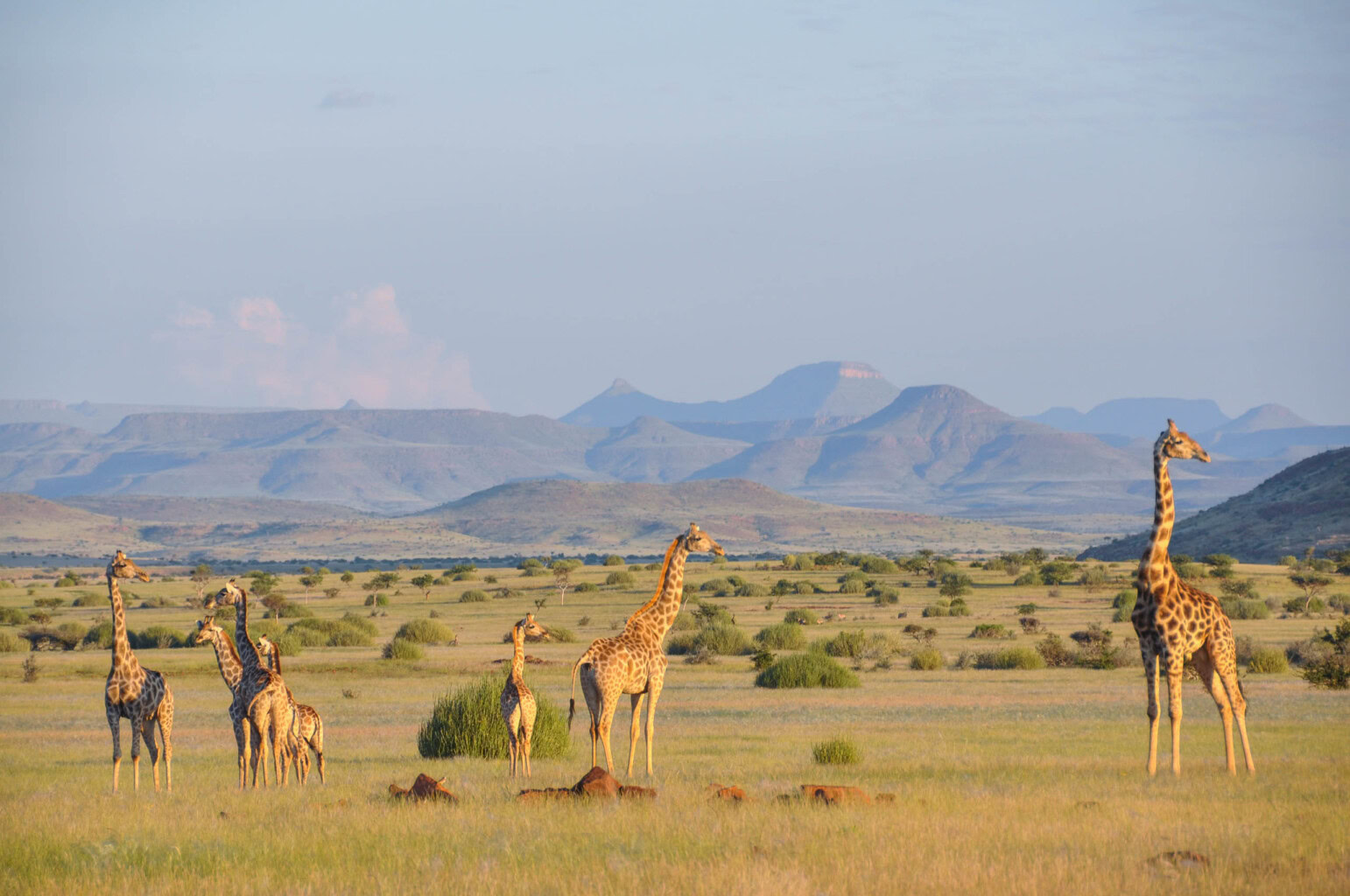
This is the coolest and driest time of the year, which for Namibia’s wildlife means journeying to find fewer water sources. Resulting in scenes straight out of a Disney movie—wildebeest, giraffes, elephants, and more congregating around the same watering hole. This month, join us for a very unique experience: Our Namibia Giraffe Conservation Safari where you’ll have the opportunity to work alongside a leading research team to track and tag giraffes in the wild.
Similar to July, this is an ideal time to explore much of the country, especially the country’s greatest wildlife source, Etosha National Park, and the magnificent Sossusvlei Dunes. While this is the busiest time of the year, our special access to private concessions and reserves means you’ll be far from the crowds.
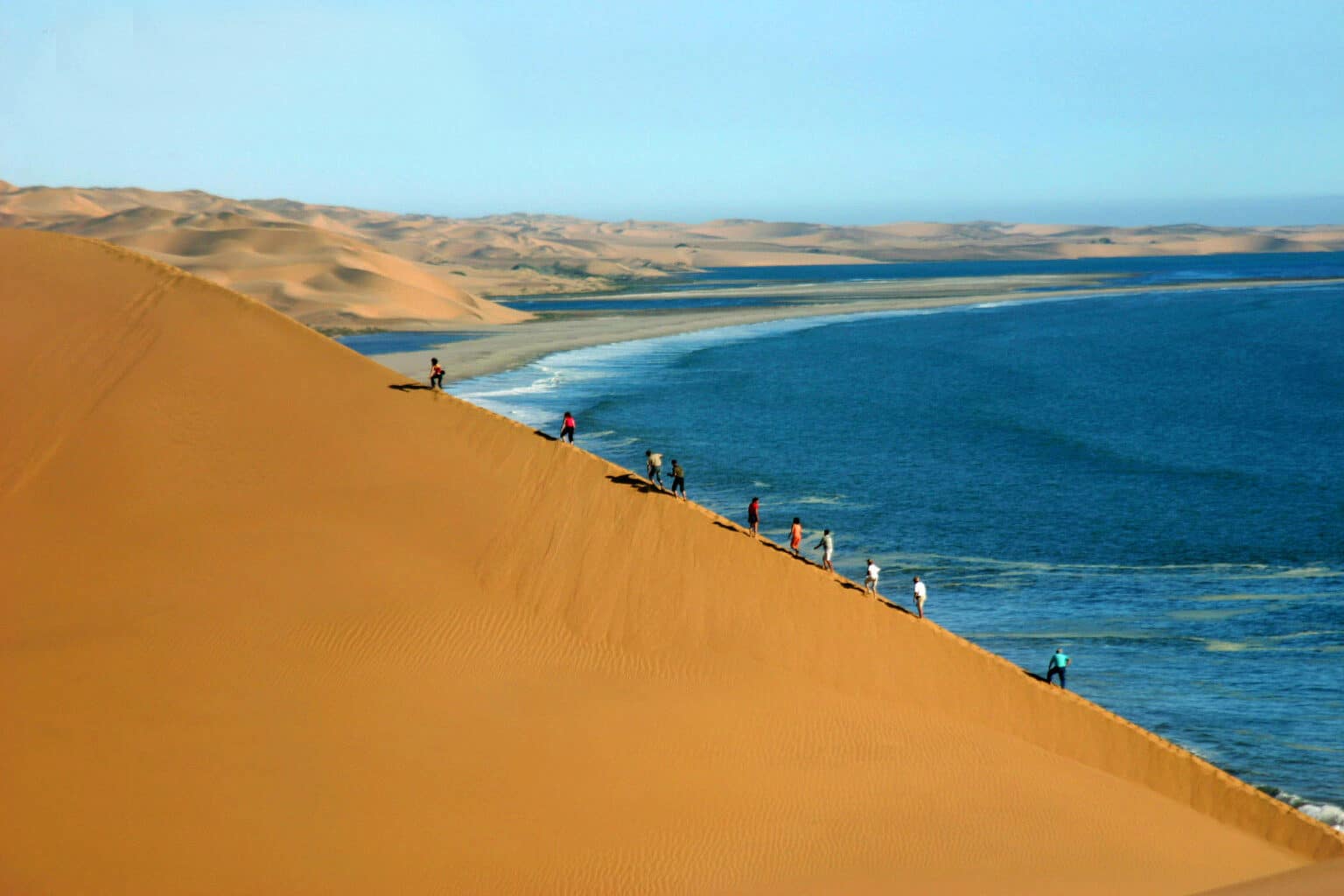
Considered one of the most pleasant times of year due to spring-like conditions, September is when temperatures start to rise but the rain remains at bay. In addition to our classic Namibia Expedition , which gets you off the typical visitor circuit, we offer a departure of In the Realm of the Desert Lion , a conservation safari that’s exclusive for WT travelers.
The end of winter means fewer crowds, though months of little rainfall can often result in dusty conditions and occasional sandstorms. A vestige of the country’s capital, Windhoek, being once a German colony is a lively Oktoberfest celebration. Join us on a Private Journey for an intimate adventure charting the best of Namibia.
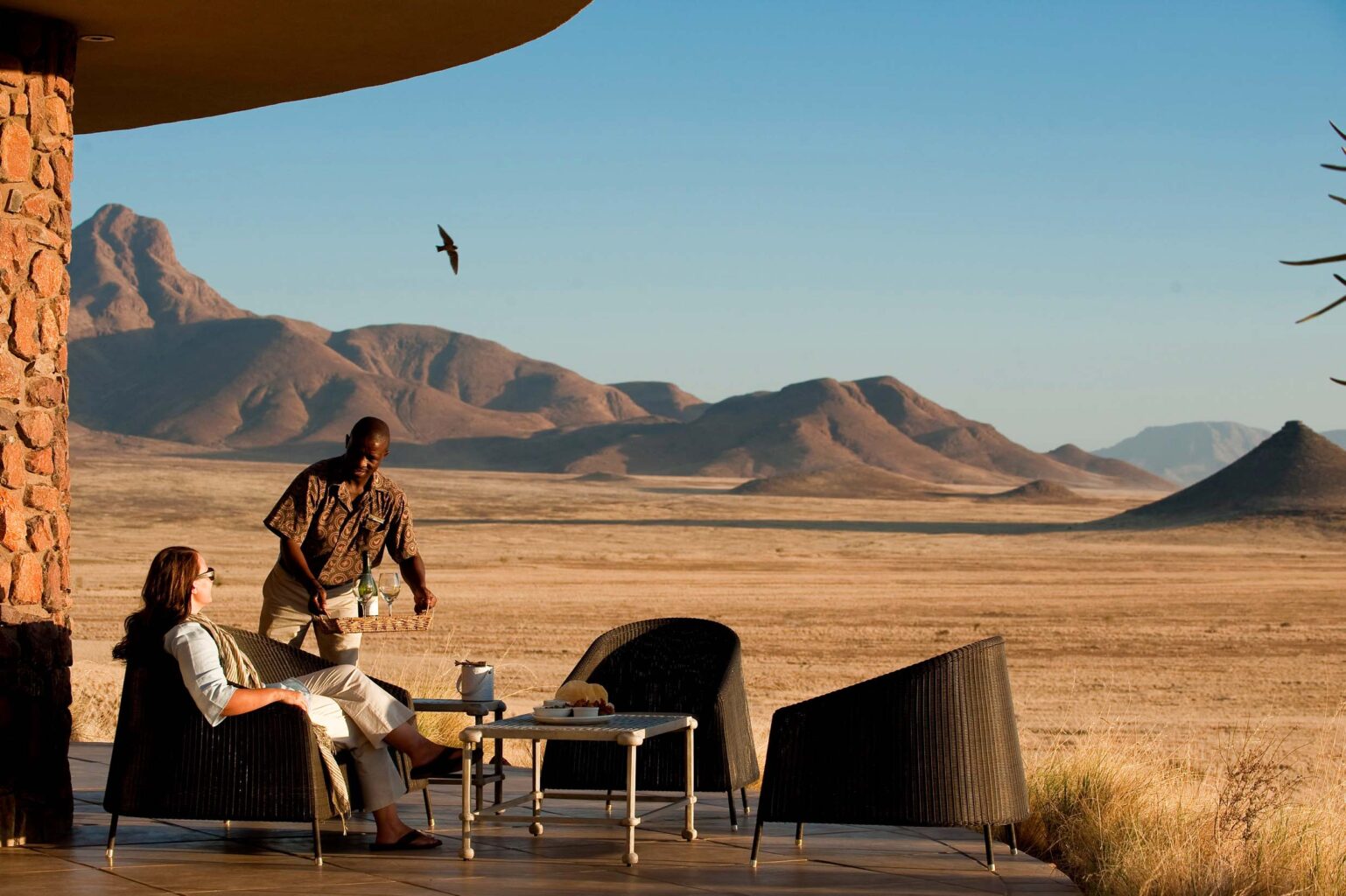
It can be difficult to predict weather conditions this month, when year-to-year variation can mean prevailing winter temperatures and little rainfall, or a strong start to the green season—the first thunderstorm of the year is always a celebration! Plus, it’s the start of prime bird-watching.
Summer is usually in full swing by now, with warmer and more humid days, and nights that are either crisp and clear from an afternoon rainstorm, or cloudy in preparation for rain the next day. The influx of migratory birds, including an abundance of flamingos that coat lagoons in pink, makes for excellent bird-watching.
Namibia’s Weather
We’ve planned our adventure for Namibia’s best season (April through September), when daytime temperatures are in the mid-70s and wildlife viewing is at its peak as waterholes attract a vast array of animals. Nighttime temperatures in the desert can drop to the 50s, so be sure to pack layers for early-morning game drives and our nights on the Tok Tokkie Trail. The coastal region, including Swakopmund and the Skeleton Coast, is cool and dry throughout the year.

All Trips to Namibia
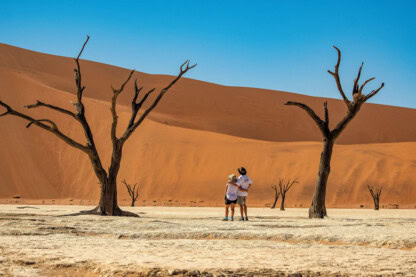
Small Group Adventure
Namibia Expedition
From $9,195
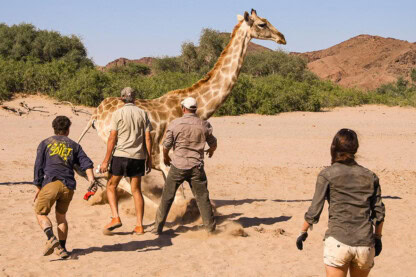
Namibia: Giraffe Conservation Safari
From $9,595
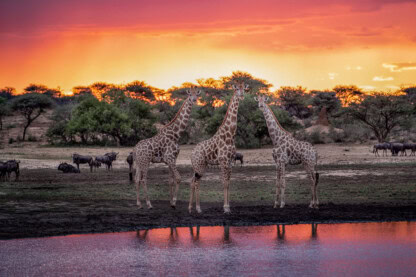
Namibia: Green Season Safari
From $9,795
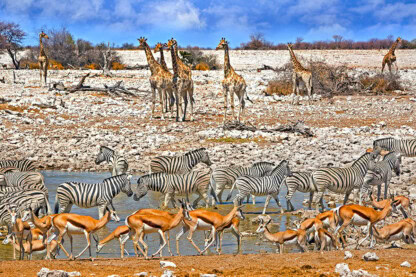
Ultimate Namibia and Botswana
Botswana, Zimbabwe, Namibia
From $11,595
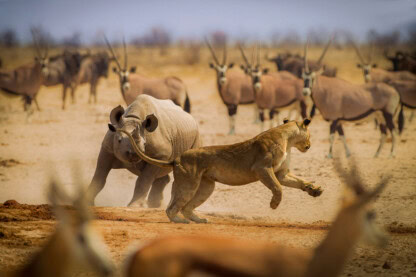
Namibia: Desert Lion Conservation Safari
From $8,795

Private Journey
Namibia Private Safari
Call for Pricing
Talk to an Expert
Our Africa Specialists know every detail about our Namibia safaris. They will be happy to answer any questions and help you choose the journey that’s right for you. Contact us to learn more or book your trip today!

- Travel Advice
- Best time to visit
Best time to visit Namibia
Namibia is a year-round destination, and you can visit Namibia any month of the year. The climate is generally dry and warm with little rainfall. Many regard the dry season between June to October as the best time to visit Namibia as temperatures are not too hot and wildlife viewing in Etosha National Park is at its best. The sand dunes of the Namib are worth a visit any month or the year, the only difference will be hotter temperatures during the low season. In the end, both dry as well as rainy season in Namibia have advantages and disadvantages depending on what you want to see and do and how much you want to spend.
- Different Seasons
- Different Regions

THE BEST TIME TO VISIT NAMIBIA - BY SEASON
When is the high season.
The high season in Namibia is between July and October. During these months, it is not too hot, daytime temperatures are usually moderate, while mornings and evenings can be chilly. The high season is also the dry season and in normal years you won’t see any big clouds or even rain fall. These months are best for wildlife viewing in Etosha National Park as animals congregate around the waterholes. Etosha is one of the few places that can feel a little crowded during the high season in Namibia. These cooler months are also the best time to travel if you want to explore Namibia on foot and include hikes during your trip . It is the most popular time to travel, therefore: If you have very specific requests or a bucket list lodge or camp you want to stay at, we advise to book in advance to avoid disappointment.
When is the low season?
Namibia’s low season is during the months of November until around February or March. It can get very hot and sometimes humid during these months. The low season coincides with the rainy season. Rains are usually localised and come in short and heavy bursts. Game viewing in Etosha is very difficult during the low and rainy season as wildlife is scattered across the park and vegetation is denser. The advantage of travelling Namibia during the low season is even fewer other tourists than during the high season and you may benefit from reduced rates and availability at popular camps and lodges.
When is the dry season?
The dry season in Namibia is between May and October. If you arrive in the early months of the dry season, you can still experience some green landscapes before they turn extremely dry towards September and October. Dry season in Namibia equals cooler temperatures and excellent game viewing in Etosha National Park from May onwards. As water sources in the park dry up, animals congregate around the last few remaining waterholes, and you can see many species at the same time.
When is the rainy season?
The rainy season in Namibia is towards the end and beginning of the year, between around November and March. In some years, it will rain very little, and you will hardly notice a difference to the dry season. In recent years, we have seen stronger rains though and you can experience a very different Namibia and even see green patches and small flowers on the sand dunes of the Namib. It is less dusty; the air is nice and clear and the rains are a welcome relief after the long dry season. These months are great for bird watching, but wildlife viewing especially in Etosha is very difficult.

During the green season, dunes are sometimes dotted with green bushels bringing the desert to life.
THE BEST TIME TO VISIT NAMIBIA - BY REGION
Caprivi strip / zambezi region.
The north-eastern Zambezi Region , formerly known as Caprivi Strip, has a tropical climate and is usually very lush and green. It is a great contrast to the dry desert landscape of much of the rest of the country. Caprivi is home to some exciting national parks and a great wildlife viewing destination. The best time for wildlife viewing in the Caprivi and Zambezi Region is during the dry months between June and October. No matter high or low season – this remote corner of Namibia never feels crowded.
Namibia’s Damaraland is an excellent travel destination all year-round. During the country’s low season between November and March, you may benefit from better rates at lodges and camps; and there will usually be fewer tourists at popular sites. However, wildlife viewing is best during the high season of May to October when wildlife congregates around the few remaining waterholes. No matter the time of the year, you can visit the Damaraland and have a fantastic experience.
Etosha National Park
Etosha is one of the few regions in Namibia where the time of travel really does make a difference. The best time to visit Etosha National Park is during the dry and high season between May and October. Dry season means less water available throughout the park and a very high chance of seeing many animals come to the few remaining waterholes. However, it also means that these waterholes can get quite busy with tourist vehicles during these months. If you visit Etosha during the rainy season between November and March, the animals are scattered around the park and vegetation is denser – this means, you need quite a bit of luck to spot wildlife. But it also means fewer tourists and reduced rates at lodges and camps.
Fish River Canyon
If you want to see the Fish River Canyon for its impressive size and expanse, you can visit any time of the year. If you want to go on the multi-day Fish River Canyon hike, you need to come in the dry months of May to mid-September. These are the only cooler months the hike is offered as temperatures during other months are too high. Night temperatures in the Canyon can get quite chilly, and you should definitely bring warm clothes on your hike.
Sossusvlei and Namib-Naukluft National Park
The desert landscapes of the Namib are impressive all year round; seasonal differences are not as noticeable as in other regions. Therefore, you can visit the highlights of Sossusvlei, Deadvlei and Sesriem Canyon any time of the year. Temperatures are slightly cooler during the winter months of May to October, but we would recommend going early in the morning any time of the year – not only to experience the stunning morning light, but also to avoid the hot midday sun. The winter months December to March bring hotter temperatures but since it is also the rainy season you may be able to see green patches and small flowers on the orange sand dunes of the Namib – a very special experience.
Temperatures in Swakopmund are moderate all year-round and the coastal town by the Atlantic Ocean is considered an all-year destination. There is hardly any rain in Swakopmund, but thick fog banks develop along the coast. Remember that the water temperatures of the Atlantic Ocean will be pretty chilly any time of the year and Swakopmund is known more for its desert adventure activities, boat and kayak trips rather than as a classic beach holiday destination.
Temperatures in Namibia
The coldest month is July (which falls in the dry season), while the hottest months are December and January (which fall in the rainy season). Temperatures differ depending on which region you travel to but can get up to 35 degrees Celsius (95 degrees Fahrenheit) or even higher during the hot winter months. Night-time during the winter months, especially in July and August can get chilly and even below freezing in the desert.
Winter and summer in the southern hemisphere are opposite to those in the northern hemisphere. Namibia has hot and (somewhat) rainy summers from November to March, and cold and dry winters from April to October.
DISCOVER EXCITING NAMIBIA TRIPS
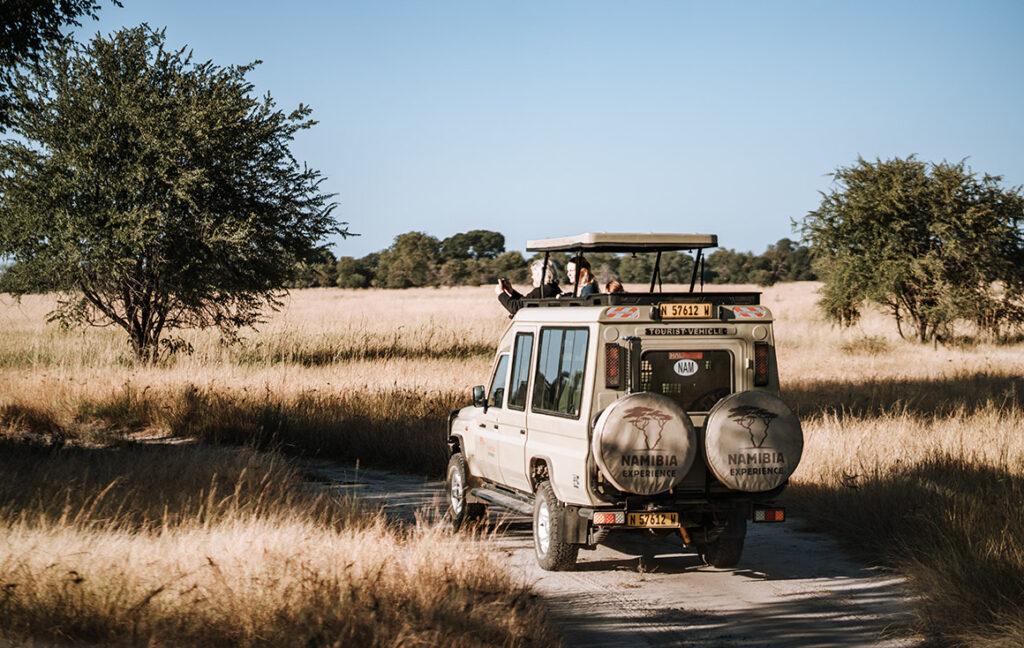
Guided Lodge Tours
Travel with your local guide and relax at guest houses and lodges.

Self-Drive Tours
The road trip experience: Travel independently in your rental car.
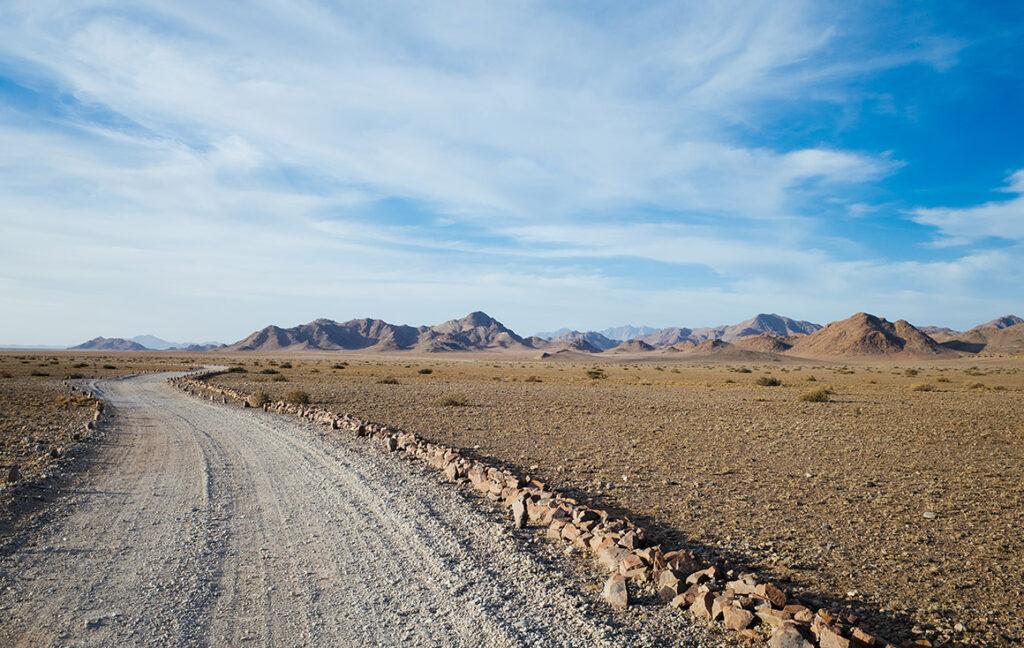
Tailor-Made Tours
Your personalised holiday: from the itinerary to the smallest detail.

OUR EXPERT ADVICE
Wildlife viewing will determine your best time to travel.
The decision when to travel to Namibia will largely depend on whether you want to focus on wildlife viewing and game drives. If you come to Namibia for its stunning landscapes and desert highlights, you are very flexible and can travel all year-round. If a visit to Etosha National Park is a priority for you, you are less flexible, and we recommend focusing on the months between June and October.

Experience Namibia with us
Speak to one of our local advisors, let's start planning your trip.
We will get back to you within 2 working days.
This website uses cookies to ensure you get the best experience on our website. Learn more
- Australian Dollars
- British Pounds
- Canadian Dollars
- New Zealand Dollars
- South African Rands
- Swiss Francs
- U.S. Dollars
Talk to an expert +44 203 405 6666 Lines open now
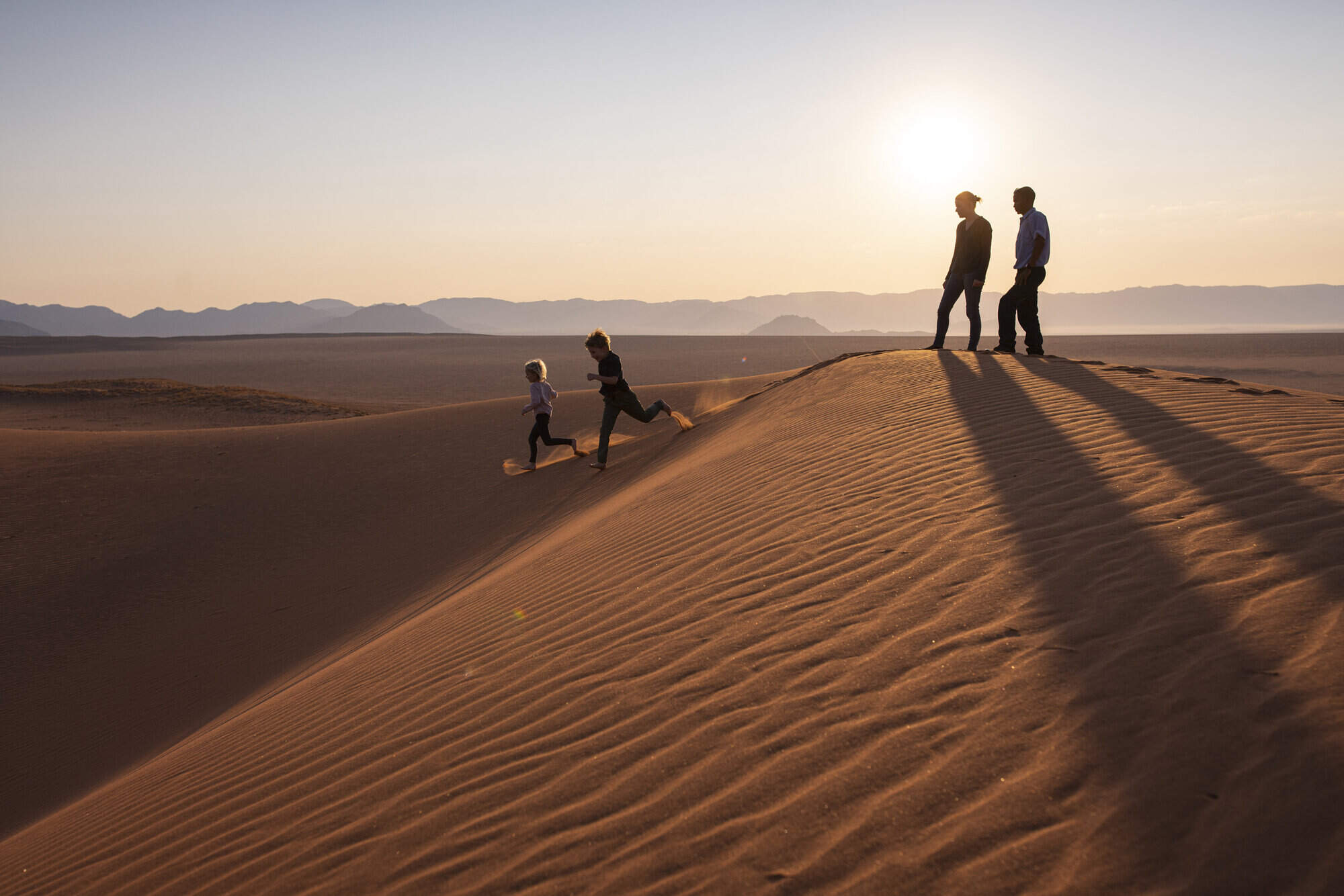
Weather & climate
Namibia: Weather & climate
The best time to visit namibia, weather in other african countries.
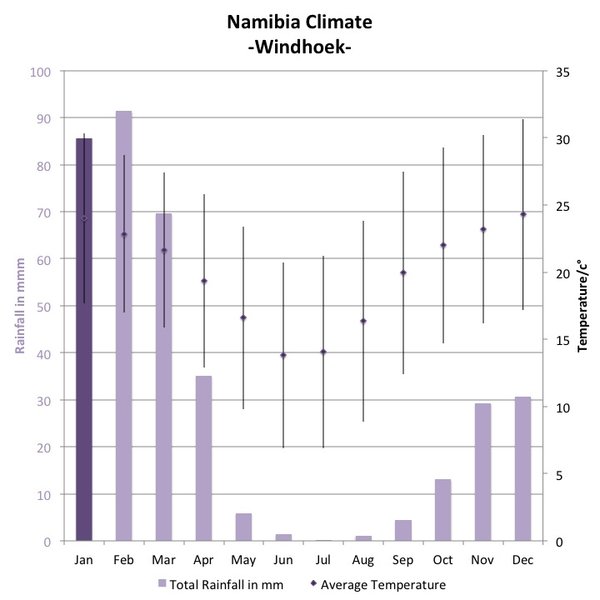
January : a rainy month with high humidity levels.
February : one of Namibia's wettest months of the year; great for bird-watching.
March : the third and last month of the rainy season is wet and humid.
April : a very fresh, green month; some rain but also lots of clear weather.
May : a favourite month: the landscape is usually beautiful and green, the air very clear.
June : a dry month with very little chance of rain. Warm days but cold nights.
July : nights can be cold, but the days are warm and clear.
August : a lovely and dry month, but temperatures can still plummet at night.
September : dry, warm days and cold nights gradually heat up as the month progresses.
October : one of the the hottest and driest months of the year.
November : very variable: maybe hot and dry, but with showers looming towards the end.
December : an unpredictable month during the transition from dry to rainy season.
Our top picks for holidays to Namibia
We'll always tailor-make your trip for you. Here are some of our favourites to inspire you.
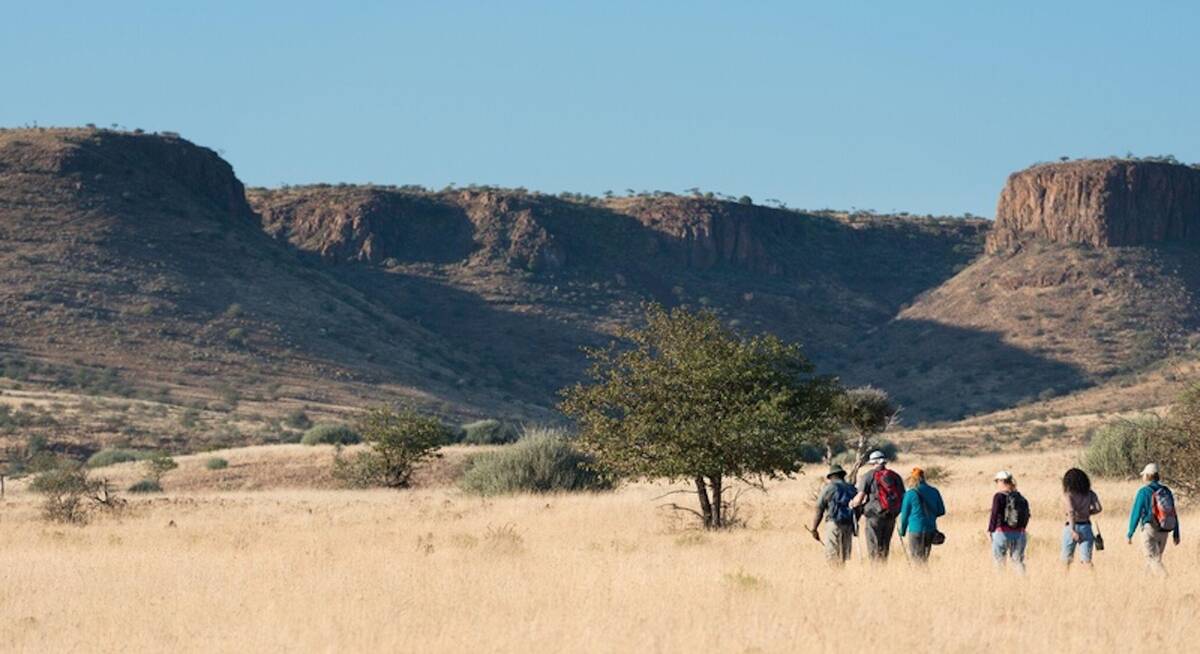
Chongololo Self-drive Safari
21 days • 11 locations WINDHOEK AIRPORT TO WINDHOEK AIRPORT
This self-drive safari focuses on the best walking experiences in Namibia. Get your boots ready for the apricot dunes of the Namib Desert and the ancient hills of Damaraland.
US$7,310 - US$9,840 per person
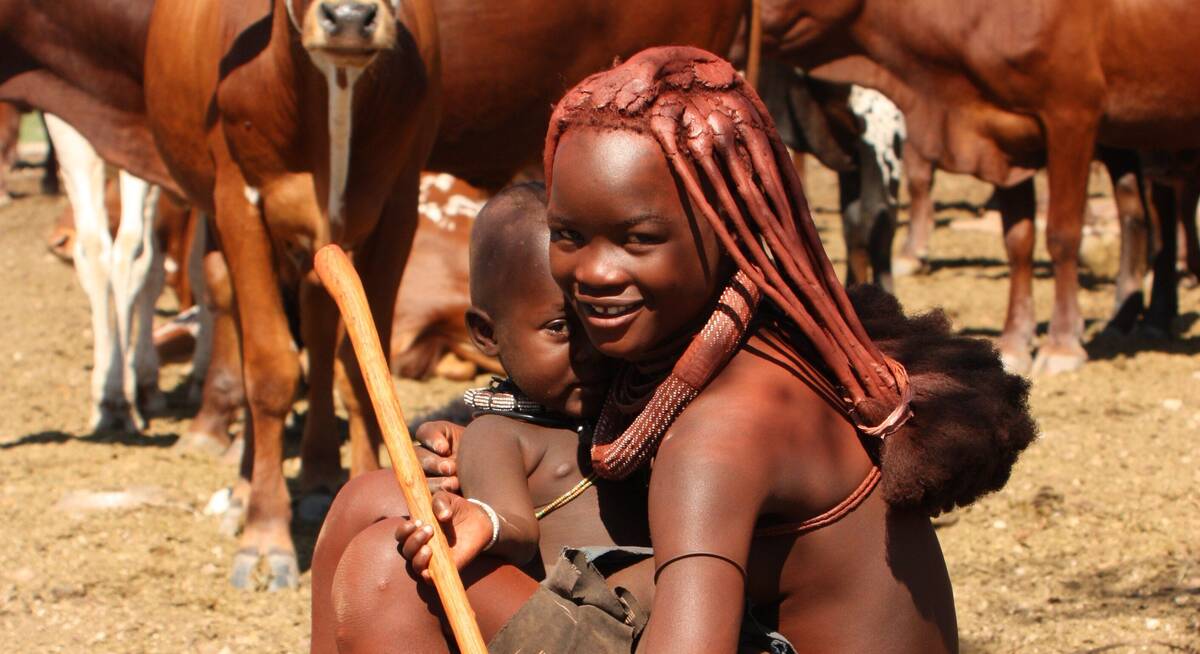
Hartebeest Self-drive Safari
16 days • 8 locations WINDHOEK AIRPORT TO WINDHOEK AIRPORT
This self-drive safari focuses on the best cultural experiences in Namibia. Visit a Himba village and enjoy three days living with the San Bushmen interspersed with some excellent wildlife watching.
US$3,500 - US$4,290 per person
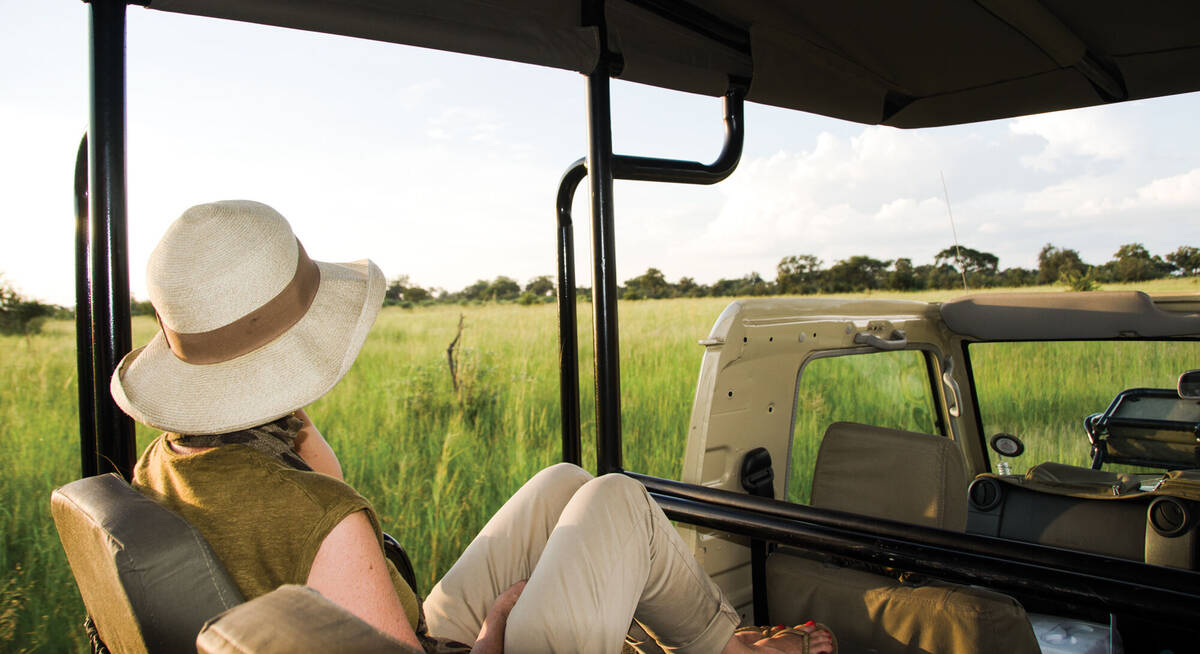
Rock Hare Self-drive Safari
20 days • 12 locations WINDHOEK AIRPORT TO VICTORIA FALLS AIRPORT
An in-depth look at Namibia from the Namib Desert to the Caprivi, with additional stops in Botswana and Victoria Falls. This three-week adventure includes an unrivalled mix of environments and is great value.
US$5,200 - US$7,400 per person
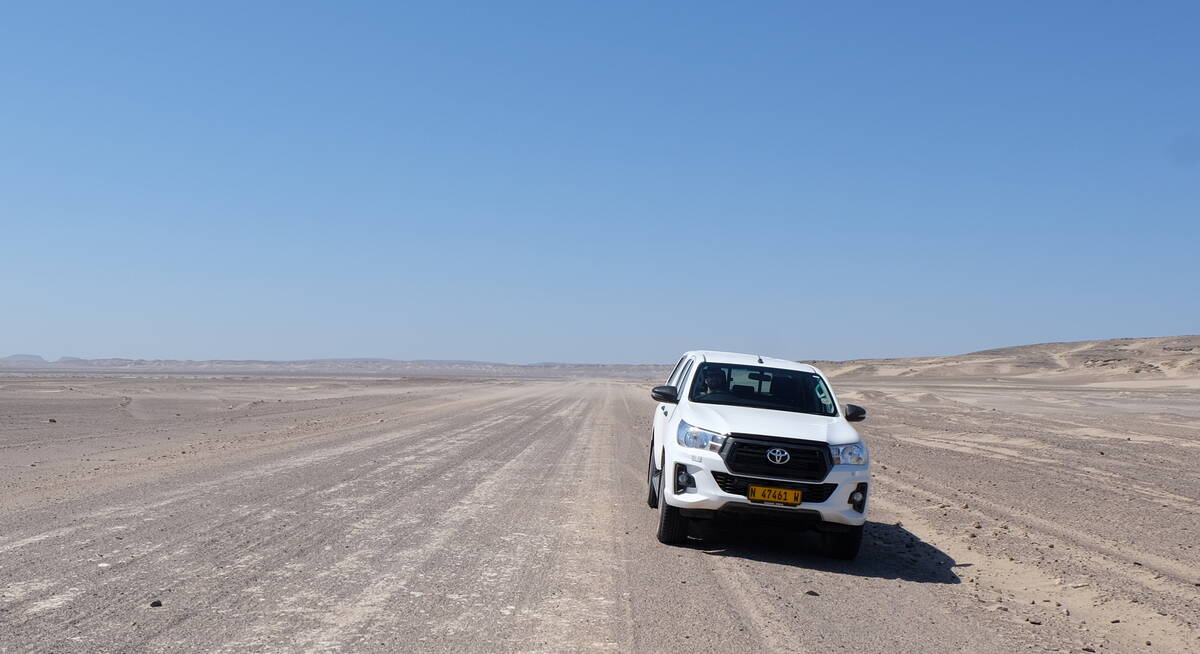
Caracal Self-drive Safari
14 days • 8 locations WINDHOEK AIRPORT TO WINDHOEK AIRPORT
The quintessential Namibian self-drive adventure exploring the highlights from Sossusvlei and the Namib Desert to Damaraland’s wilderness and a safari in Etosha. A great mix of accommodation and excellent value.
US$2,680 - US$4,100 per person
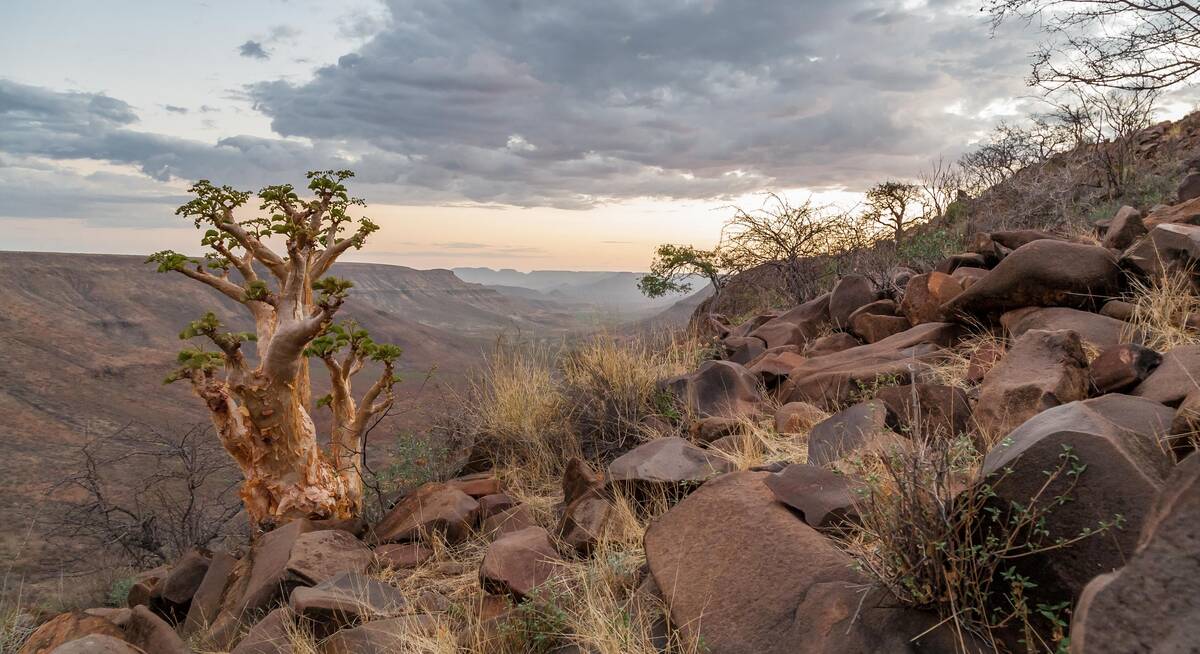
Dune Lark Fly & Drive Safari
A combination fly-in self-drive exploration of Namibia, with quick, easy and scenic flights in and out of Sossusvlei before a classic road trip adventure of the country’s rugged north.
US$4,680 - US$5,720 per person
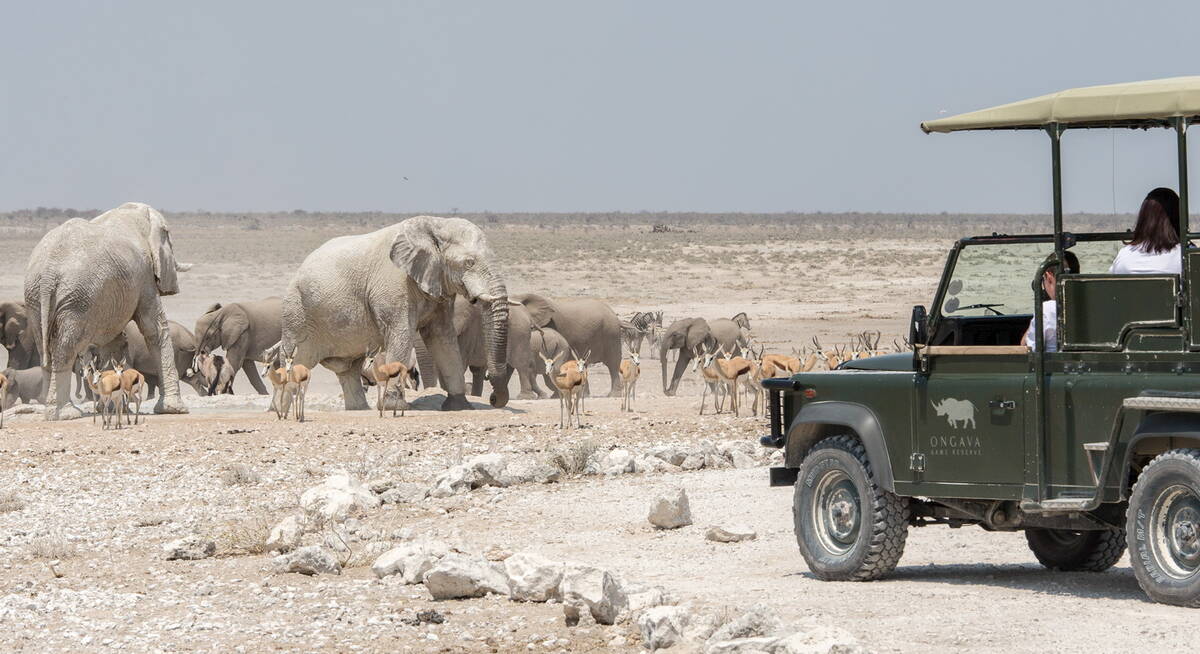
Brown Hyena Self-drive
The perfect trip for those who want to mix the adventure and freedom of a self-drive with some of our favourite luxury camps in Namibia and a great mix of activities.
US$7,780 - US$9,820 per person
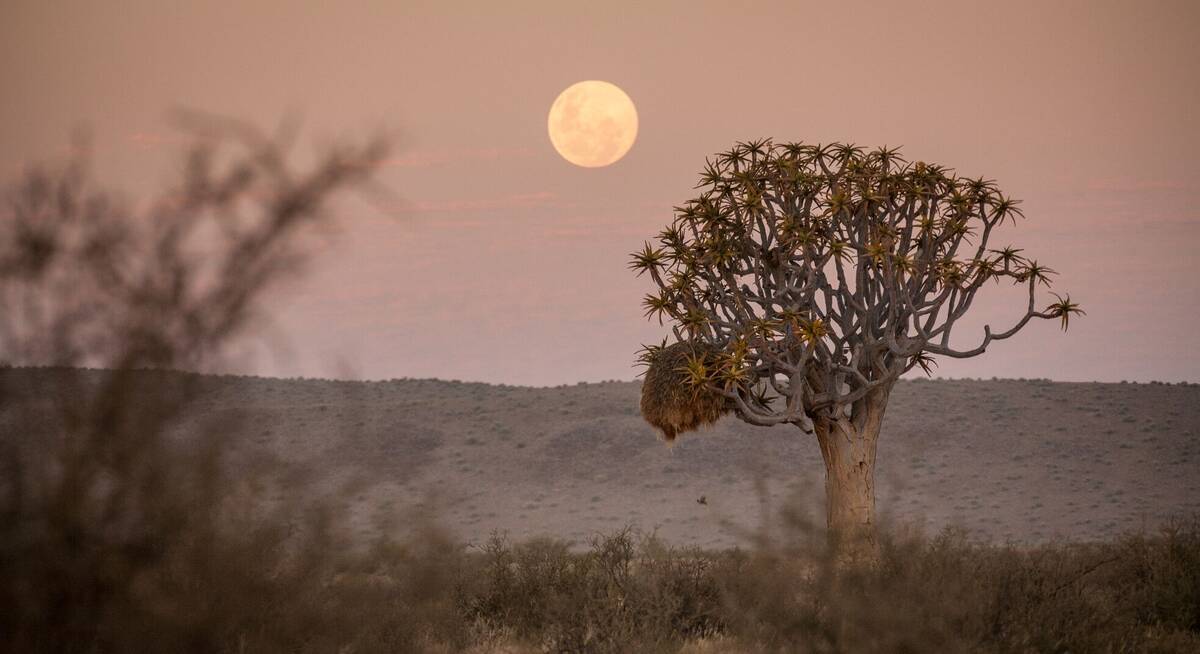
Quiver Tree Self-drive Safari
14 days • 7 locations WINDHOEK AIRPORT TO WINDHOEK AIRPORT
An offbeat Namibian self-drive adventure exploring the epic Fish River Canyon and fascinating Kolmanskop ghost town in the south, before turning north via the classic highlights of Sossusvlei, Swakopmund and Damaraland.
US$2,360 - US$3,260 per person
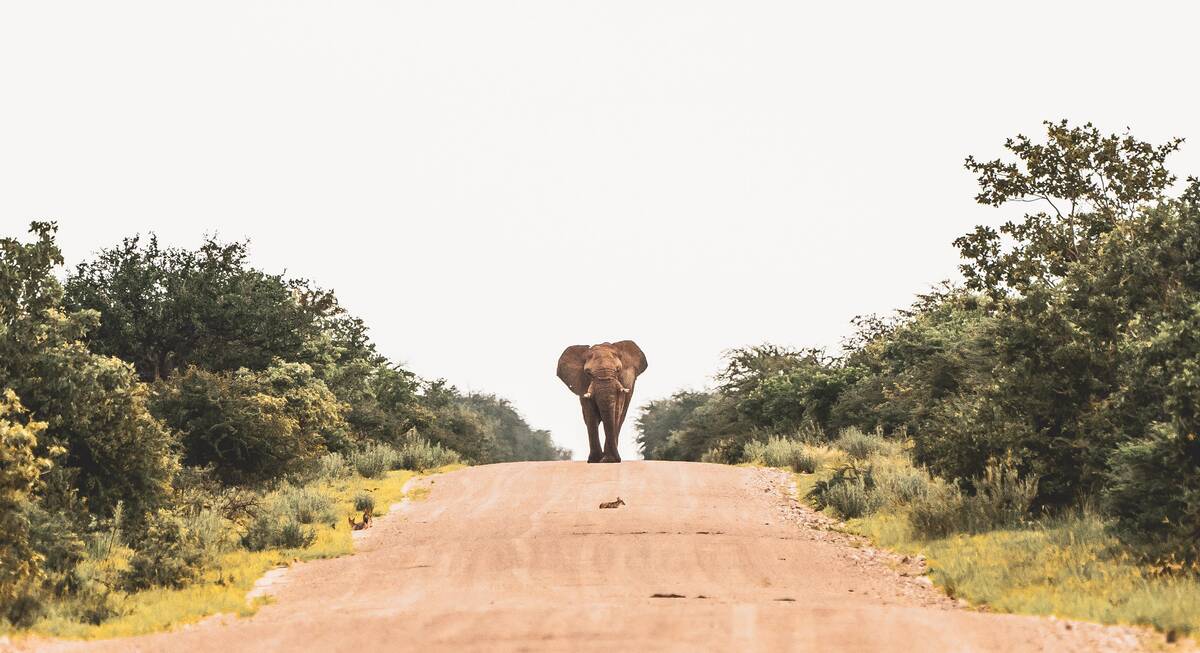
Black Wildebeest Self-drive Safari
19 days • 10 locations CAPE TOWN AIRPORT TO WINDHOEK AIRPORT
Journey from South Africa’s cosmopolitan Cape Town to central Namibia’s Okonjima Nature Reserve during this self-driven safari. The route passes through a stunning variety of landscapes, offering access to this beautiful continent’s rich diversity.
US$3,280 - US$3,770 per person
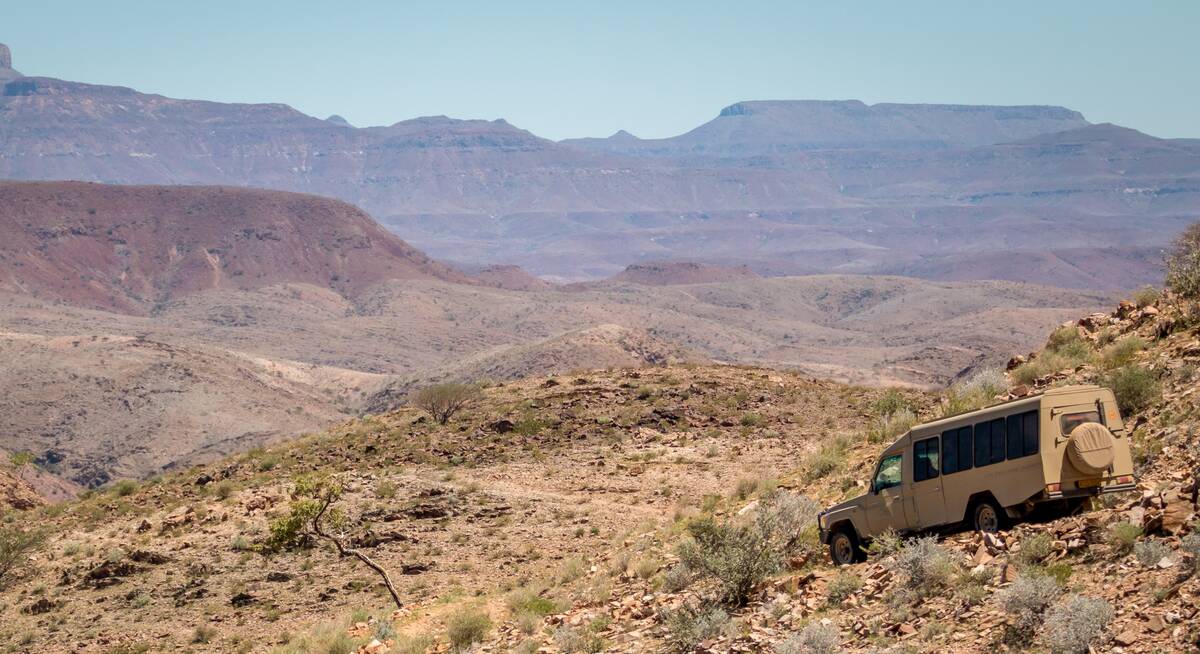

Cape Fox Guided Safari
13 days • 7 locations WINDHOEK AIRPORT TO WINDHOEK AIRPORT
A classic clockwise circuit around Namibia’s northern highlights with a private guide and vehicle. We can’t think of a better way to see more in this timeframe.
US$8,340 - US$10,630 per person
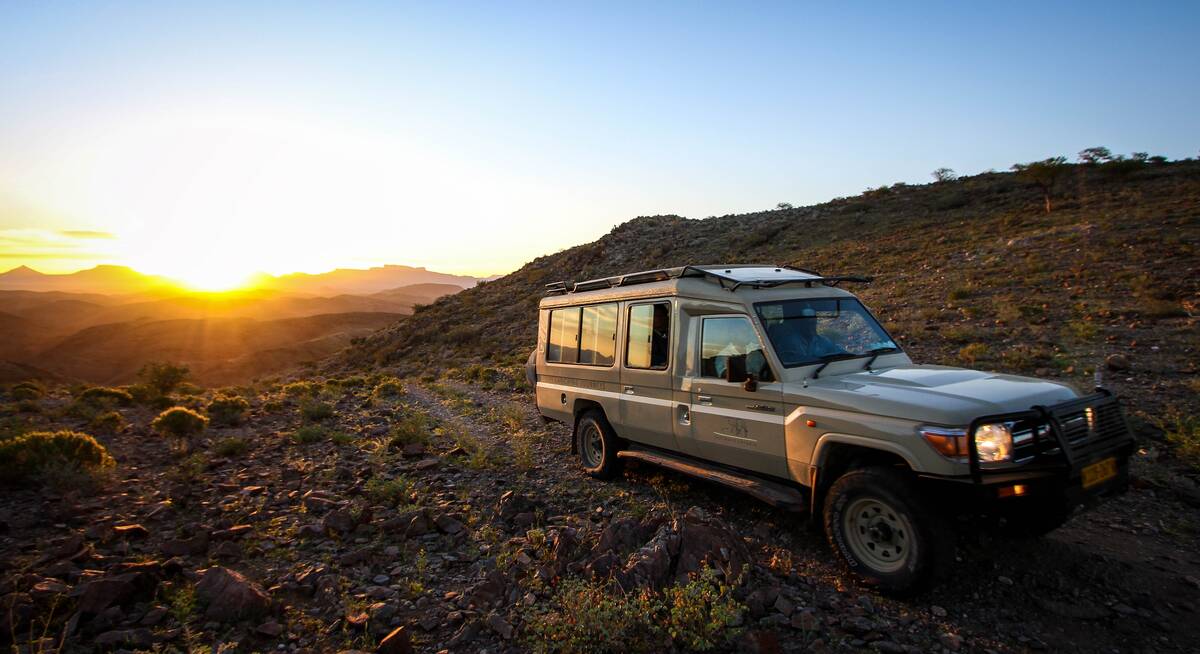
Black-faced Impala Guided Safari
13 days • 6 locations WINDHOEK AIRPORT TO WINDHOEK AIRPORT
A unique mix of luxury and adventure in our original, and perhaps most varied, destination on a privately guided Namibian overland safari. Perfect for families, friends or couples travelling together.
US$4,850 - US$6,390 per person
View all holidays in Namibia

Need inspiration?
Let our trip chooser narrow down the options for you
Login to Expert Africa
Sign in with password
Sign in with email link
New to Expert Africa? Create an account
Forgotten your details?
It's free & quick to set up
- Save your wish-list
- Send us an enquiry
- Pay online for your trip
- Subscribe to our newsletter
- Give us feedback on your trip
- Full site benefits of the site
Need some help? Talk to our team
Best Time To Visit Namibia
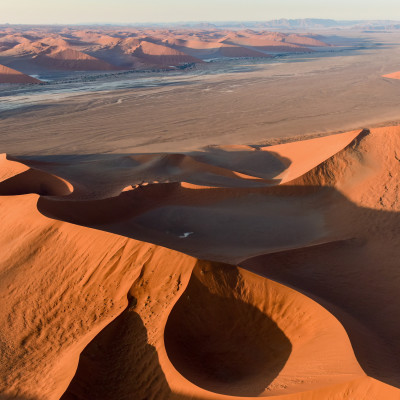
A guide to Namibia’s varied seasons
The climate in Namibia is distinguished separately within its vast landscapes – from the deserts in the west and east, to the fertile north. The Namib Desert is particularly dry, and in the Kalahari Desert, it rains a bit more. The daily temperatures vary from 77°F to 91°F. At night, on the other hand, it can be really cold, especially in winter between May and September. Within a few hours, temperatures drop by more than 68°F.
The Atlantic Coast, on the other hand, is cool in the summer due to the cold Atlantic Ocean and is often cold in winter. Fog gives the already surrealistic skeletal coast a ghostly flair. The Caprivi Strip is the most precipitous area in Namibia and is a location where you can visit jungle areas during your Namibia vacation. In Central Namibia, on the other hand, it is warm during the day and cool at night. The weather here is determined by the altitude (1,000-1,600m). In general, the winter months offer the best conditions for visiting the top Namibia attractions and museums in cities such as Windhoek.
Below is an overview on the weather across the country, and highlights by month, to help you plan the perfect Namibia tours .
Best Time To Visit
We recommend.
- Escape the heat and head to the milder coastal regions with a trip to the Skeleton Coast, considered the largest ship cemetery in the world and one of the oldest landscape formations on earth
- Head to the harbor town of Luderitz with its distinctive architecture, pristine landscapes and varied wild and marine life
- With rain covering most of Namibia, head to the slightly drier Kunene region in Namibia’s remote northwest and explore its cultural heritage by spending time with the Himba people
- Head to the Namib Sand Sea, a UNESCO World Heritage site, and marvel at the sand dunes and the barren beauty of this coastal desert
- A trip to the imposing and starkly arid Kalahari Desert with its sand and rock formations, created over 60 million years of erosion, is a must-do at this time of the year
- Dry conditions make it a good time to head to the Mudumu Park in Namibia
- Explore the palm-lined promenades, generous gardens and resorts in Swakopmund, a former German colony turned green oasis in Namibia’s desert landscape
- Marvel at over 100 species of mammals and the famous Etosha Salt Pans on your safari through Etosha National Park
- Explore the Gondwana Sperrgebiet Rand Park near Aus with its wide diversity of landscapes
- Discover Erongo, an extinct ancient volcano complex ago with incredible views of rock formations, giant granite rocks and thousands of ancient Bushman paintings
- Head to the Waterberg Plateau for a safari where you will encounter rhinos, giraffes, antelopes, jackals, cheetahs and leopards and over 200 bird species
- Visit the town of Rundu in the northeast of the country for dynamic cultural encounters, warm and friendly locals, and delicious local cuisine
- Hike through the Fish River Canyon, the second largest canyon in the world
- Explore curious rock formations and dry valleys of Palmwag or go wildlife tracking for a chance to witness rare desert elephants and rhinos
- Weather wise, this is a good time to head to the Caprivi Strip in the northwest of the country for fantastic game drives and mokoro or dugout canoe rides
- This is the best time to spot humpback, minke and southern right whale off the coast and a catamaran cruise around Walvis Bay is the perfect opportunity to so
- Discover the NamibRand Reserve in the southern part of the country, created by former farm owners to protect the unique and diverse ecosystem of this region
- Savor remnants of a German colonial past in the architecture and even the food in Namibia’s tranquil capital Windhoek
- Watch the sun rise over 300-meter-high dunes at Sossusvlei, a mudflat in the Namib Desert
Best time to visit Namibia by season
April -May/June: This is a great time to travel in Namibia. Expect crisp, fresh air, green landscapes and increasingly dry weather conditions. June/July – August: The Namibian “Winter” season is a comfortable time to travel with cool and dry conditions. Rivers and water sources recede creating good game viewing opportunities as wildlife congregates around waterholes. Temperatures can drop below freezing point in some areas. August is a very dusty month in Namibia. September – October: Expect warm temperatures with great game-viewing opportunities. However, there’s often a lot of dust all around. Wildlife are gathered around watering holes so if you don’t mind the rising temperatures, this time is ideal for game viewing. November: Sometimes the hot, dry weather will continue, but at other times the sky will fill with clouds and threaten to rain. December – March (Rainy Season): This is the Namibian “Summer” – expect warm to very hot temperatures with occasional heavy, wet conditions. It’s the best time for birding in Namibia.
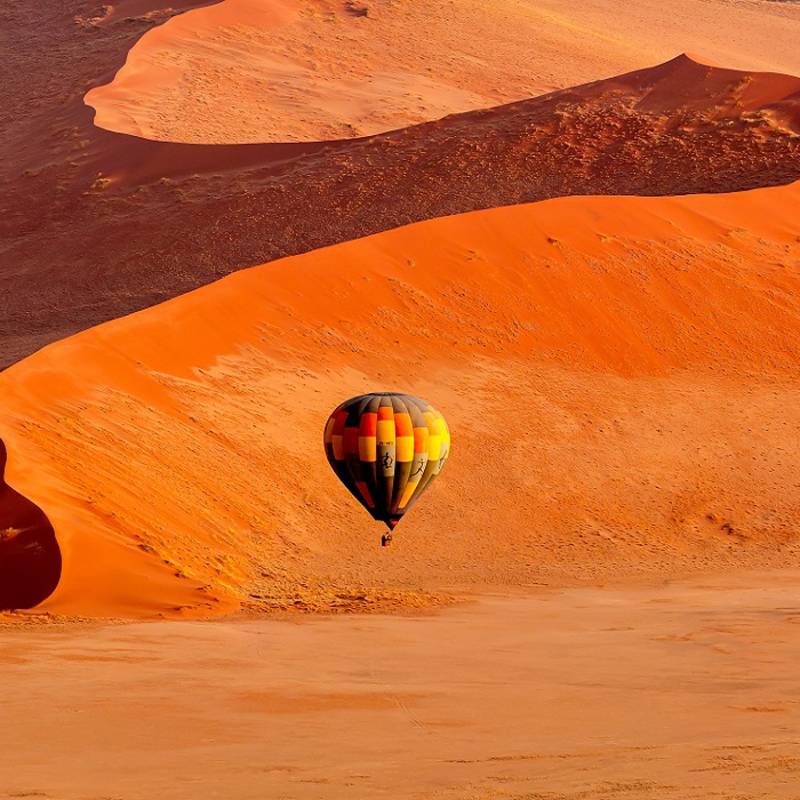
What to Pack
Pack things that you would normally wear in a warm climate. In the parks and resorts clothing is generally casual. A few suggested items include good quality sunglasses – preferably polarized, a flashlight, if you wear contact lenses, we recommend that you bring along a pair of glasses in case you get irritation from the dust, a southern African bird guide if you are a keen bird watcher, personal toiletries (basic amenities are supplied by most establishments), malaria tablets (if applicable), moisturising cream and suntan lotion – SPF 20 or higher recommended, basic medical kit (aspirin, plasters, Imodium, antiseptic cream, Antihistamine cream etc), camera equipment and plenty of film/memory sticks, waterproof/dustproof bag/cover for your camera, and binoculars. Please bear in mind that scheduled airlines in southern Africa generally impose a weight restriction of 20 kg per economy class traveller, and 30 kg for business class. Please check with your Trip Coordinator about the specific luggage restrictions for your flights.

Popular Trips to Namibia

Road Trip: Desert Adventure, Waterfalls and Safari Magic
Are you ready for bushwalks in the wild, unreal landscapes, incredible animal sightings, captivating cruises, and more? Buckle up, for you are in for an adventure of a lifetime! Kalahari’s mesmerizes with its endless stretches of browns. Familiarize yourself with the ethereal landscape of Sossusvlei on quad drives and safari excursions. Learn about incredible adaptations…
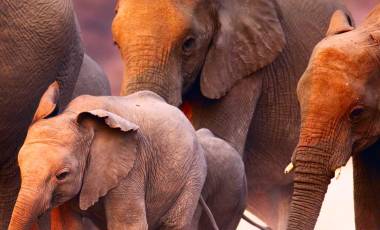
Wings Over Namibia and South Africa
Be introduced to some of the most spectacular sights in southern Africa on this private Namibia and South Africa tour. See the spectacular sand dunes of Sossusvlei and ancient rock art of Damaraland in Namibia, and explore the Table Mountains and Winelands in South Africa. From desert-adapted wildlife to the Big Five Animals in Kruger,…
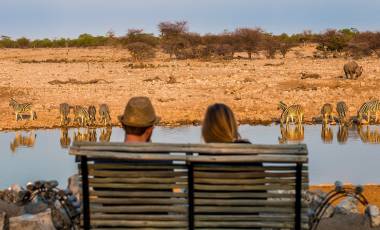
Classic Namibia
Discover classic Namibia, from its dramatic landscapes such as the red dunes of Sossusvlei andancient mountains and rock formations of Damaraland, to its incredible wildlife at Etosha. Embrace adventure on safaris, bushwalks and rhino tracking, uncover Namibia’s unique culture and heritage, and enjoy some downtime too with stargazing, nature walks and scenic drives.

Namibia's Northern Gems
Discover the highlights of northern Namibia on this luxury tour, from the spectacular red dunes of Sossusvlei and a beautiful oasis at Swakopmund to mountainous terrains of Damaraland where ancient rock formations date back to 3,000 BC! Also discover the unique desert-adapted wildlife and birds of Namibia while you safari in Etosha.
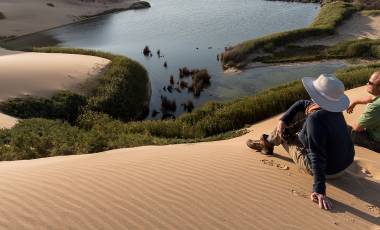
Namibia: The Luxury Explorer
Become an explorer with this authentic yet luxurious tour of Namibia! By day you can gain unforgettable insights into this surreal desert world, explore the ghostly Skeleton Coast and meet the Himba ethnic peoples. By night, you can dream peacefully in luxurious accommodation.
Best Places To Visit
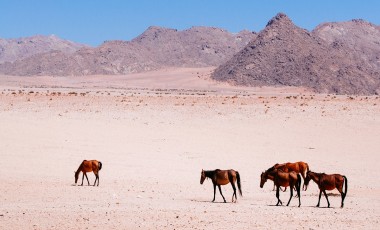
See wild horses and a desert wonderland! After the gentle rain washes the vast expanses of the southern Namib, Karoo transforms into a colorful sea of flowers! The Gondwana Sperrgebiet Rand Park near Aus, is perhaps the only desert in the world with such a wide diversity of landscapes! Granite mountains, dry river beds and vast plains dominate the scenery.
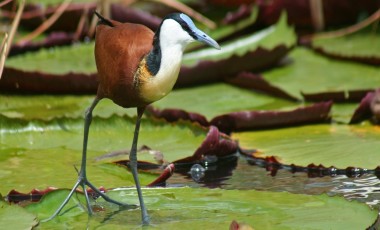
Visit the liveliest open market in Northern Namibia! On the northeast of the country, at the border with Angola, lies the Kavango River and the town of Rundu – the capital of the Kavango-East area and a seat of government.
Caprivi Rundu
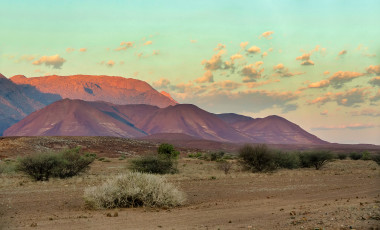
Damaraland brings to mind images of hauntingly beautiful rock formations contrasted against the semi-arid landscape. Patches of greenery sprout up amid the sprawling spaces where signs of habitation are few and far in between.
Damaraland (Brandberg and Spitzkoppe)
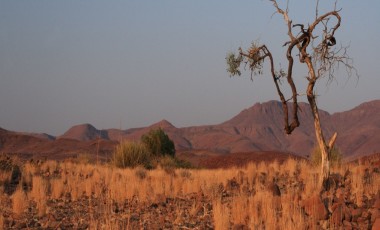
Damaraland (Palmwag)
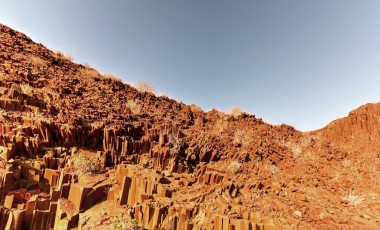
Damaraland is one Namibia’s most scenic areas with its huge and ruggedly beauty, ideal for adventurous guests.
Damaraland (Twyfelfontein)
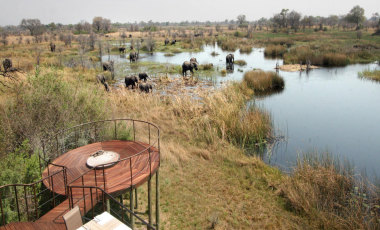
Namibia’s Caprivi region is one of Southern Africa’s emerging wildlife spots, just waiting to be explored. A little off the beaten track, Eastern Caprivi is largely a river country, enclosed by the Zambezi, Kwando, Linyanti, and Chobe rivers.
Eastern Caprivi
Things to do.
There are so many things to do in Namibia, ranging from stunning wildlife safaris to incredible sand dunes and salt pans, and a lovely coastal oasis and a tranquil capital. Plan your vacation around the top highlights with tips from our experts.
Is Namibia travel safe? Our destination experts are often asked this question. Here is the good news: Namibia is one of the safest travel destinations in Africa. Here are some general safety measures to follow in Namibia to ensure that your vacation is completely stress-free.
Travel Guide
Before you set out to explore Namibia, it’s a good idea to acquaint yourself with some basic facts and information to navigate this vast land. Our destination experts have put together all the essentials for you in our Namibia travel guide.
From the Blog
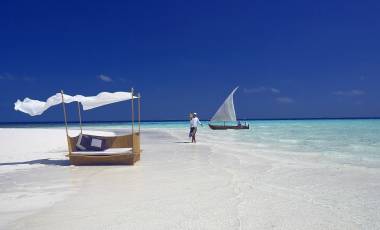
Winter Travel: Best Destinations For A Warm Escape
Put on your traveling shoes and go exploring this winter because we have a list of warm and sunny destinations that are begging to be explored!
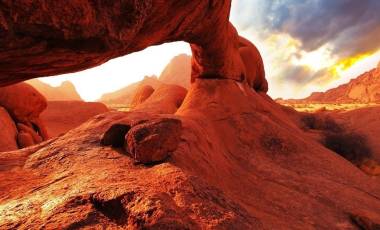
10 Exciting Reasons Why You Should Visit Namibia Now
Few countries, if any, can claim limitless horizons, stark landscapes, harsh environs and untamed wilderness, complemented by rare beauty, great scenery, a pleasant climate, few people, a beautiful coastline, one of Africa’s greatest game parks and, the world’s oldest desert…Welcome to Namibia!
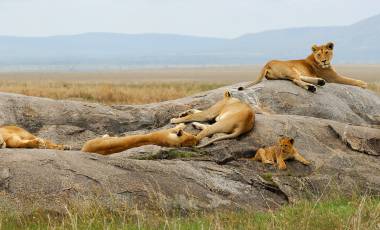
Best Places to Visit in 2019: Dream Destinations for Next Vacation
Inspired by Travel+Leisure’s masterlist of the best places to visit in 2019, let’s whisk you away on your magical journey of a lifetime.
What Our Guests Say
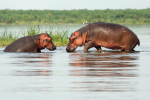
The Enchanting Difference
Authentic & unique.
Our award-winning, licensed local guides provide incredible insights and exclusive experiences for you.
Personalized & Private
Our experts completely customize your private tour to match your interests and preferences.
High-Quality Experiences
All our accommodations and services are personally tested by our team.
Fully Supported Travel
You’ll have a personal and dedicated trip coordinator, backed by 24/7 support in case of emergencies while you’re traveling.
Financial Protection & Flexibility
Your booking is flexible and completely secure with us.
Safe & Secure
Your safety and well-being are our top priorities.
Do you have a vacation in mind? Personalize your itinerary with our Trip Builder.
Best time to visit Namibia

The best time to visit Namibia is from May to September. This is the country's dry season. Known for its mild daytime temperatures and clear, sunny skies, it's the perfect time for long days spent out on an African safari . During these dry, or 'winter' months, it will be slightly cooler than the humid summer season, with nights getting a little chilly – so we’d recommend bringing a jacket.
The shoulder months of April, October and November are also great options for mild weather, with the bonus of off-peak crowds.
The best time to visit Namibia for a safari is during the dry season, from May to September, especially the months of July and August. With little rainfall, big-name animals such as elephants, giraffes, lions and rhinos will congregate around the permanent sources of water. And because it's the dry season, there won't be as much vegetation for animals to hide in. This provides great visibility for checking Namibia's must-see animals off your list.
While the lush foliage during the summer months (November to April) may pose a challenge in spotting wildlife, this time of year is also the birthing season of zebra and springbok, creating an amazing opportunity to visit. Typically, new births take place in January and February, with chances of sightings extending into March.
The rainy season in Namibia, also the summer season, falls from November to April. With much of Namibia being desert, the rainy season can especially impact the northeast and north-central regions of the country. Rainfall can be inconsistent and random in Namibia, but generally, the rainiest time is February. Daily rainfall is also variable but is often seen around late afternoons and evenings. The wet season can also bring intense afternoon thunderstorms, which can make travelling the dirt rounds difficult at times. As the rainy season is also the summer season, high temperatures and humidity will also be present during these months.
Best for: newborn wildlife and coastal adventures
January is mid-summer. Highs average 30-35°C (though it can top 40°C in the Namib Desert), and afternoon thunderstorms are common in central and northern Namibia. Wildlife watching can be more challenging due to thick vegetation, but you may have the opportunity to see adorable babies. January is a busy month with locals travelling domestically for the school holidays, particularly along the coast, which offers a reprieve from the heat.
Best for: flamingoes, lush landscapes and newborn animals
Despite being one of the hottest, stickiest months, Namibia's national parks and reserves are super lush (and photogenic!) in February, thanks to the rains. While it can be hard to see game, it's a great time for birdwatching at the saltpans and coastal wetlands which are awash with pink flamingoes, pelicans and plovers.
Best for: coastal adventures, Enjando Street Festival, Independence Day celebrations
The rains ease towards the end of March, but it can still be quite hot with average temperatures of 29°C in Windhoek. Wildlife may be dispersed in the plains and bushland instead of hanging out around waterholes, but there are enough clearings to allow for sightings.
March is a good time to explore the eery Skeleton Coast and see the huge swells and the shipwrecks these stormy seas have caused. Or, go to Windhoek to experience Namibian culture at the Enjando Street Festival or Independence Day celebrations.
Best for: photography, comfortable temperatures and Windhoek Karneval
The rains stop in April, the humidity subsides and temperatures drop to a more comfortable 27°C. It's a stunning time to take photos in Etosha National Park, as everything is lush and green thanks to the recent rains. It's also easier to spot animals as they retreat to permanent waterholes. The Windhoek Karneval also takes place in early April — this cultural festival combines German and Namibian traditions with music, parades, performances, and, of course, delicious food!
Best for: dry weather, safaris and sunsets
May marks the beginning of the dry season and much-welcomed cooler temperatures. The animals in Etosha NP continue to make their way toward permanent water sources as the ground dries out, making them easier to see. The clear skies make for great sunsets in Damaraland in the Kunene Region; this part of Namibia is the ancestral homeland of the Damara people.
Best for: safaris, desert adventures and relaxing by the coast
With the dry season in full swing and a low chance of rainfall, June is one of the best months to see wildlife. The cooler temperatures also make it an ideal time to explore Fish River Canyon or climb to the top of Dune 45 in the Namib Desert. Nights and early mornings can be chilly (especially in the desert, where it can drop to below freezing), so warm layers are essential. The weather is balmy along the coast and there's a happening vibe in the beachside town of Swakopmund.
Best for: safaris and birdwatching in Fish River Canyon
The safari season peaks in July. The dry conditions are fantastic for catching a glimpse of Hartmann's mountain zebra, black-faced impala, roan antelope and the tiny Damara dik-dik. The comfortable temps are ideal for venturing into Fish River Canyon and capturing the beauty of this massive gorge on camera — keep watch for plovers, wagtails, hammerkops and herons while you're there.
Best for: safaris, stargazing, exploring the dunes and the Damaraland region
August is the coolest month, with average temperatures of 21-25°C during the day and 6-9°C at night (and even colder in the desert). The weather is perfect for experiencing the best of Namibia — whether it's canoeing down the Orange River beneath the Richtersveld Mountains, exploring Damaraland's ancient rock paintings and petrified forests, or looking for black rhinos in Etosha's grasslands. The clear skies are also excellent for stargazing. August is one of the busiest months, so booking ahead is advisable.
Best for: safaris and exploring Sesriem
September is the last cool month before the temperatures climb, but there's little to no rain and game is easy to see. The dry ground can make the roads a little dusty, so remember to wrap a scarf around your face. The temperatures are still comfortable for exploring the sweeping sand dunes of the Sossusvlei or the picturesque Deadvlei Salt Pans.
Best for: safaris and whale watching
Temperatures rise in October. There may be an odd shower, but the skies are mostly clear. Wildlife viewing is excellent in Etosha NP, thanks to the sparse vegetation. You could also head to Walvis Bay to see southern right, humpback and minke whales on their annual Atlantic migration.
Best for: safaris, smaller crowds and whale watching
November is the beginning of the "little rainy season", which is welcomed after a long dry period. Daytime temperatures continue to climb and the weather can be unpredictable, ranging from clear to overcast skies and the occasional thunderstorm. The ground is still parched, so it's easy to spot large game around waterholes.
Best for: seeing newborn wildlife and smaller crowds
The monsoon arrives in December. The skies are usually clear in the morning, with heavy, albeit brief, showers or thunderstorms in the afternoon. The birthing season begins when vegetation starts thriving again (i.e. when there's plenty of food), so there's a chance you'll see newborns in Etosha.
Let's create an exclusive trip for your group.
I’m an extroverted introvert who travelled with strangers for a month. Here’s how that went.
The top 7 destinations for travel in April 2024
Why a visit to a ‘living museum’ was the highlight of my Namibia trip
I visited 7 African countries on 1 Intrepid trip; here’s why Namibia stood out
7 things you need to know about an adventure in Namibia, according to a local leader
How a discarded bicycle changed a community in Namibia
Planning your first trip to Africa? Here’s why you should start with Namibia
10 facts you probably don’t know about Namibia
Seasons And Their Months in Namibia
What is a Season?
A season is a division of the year based on changes in weather, ecology, and the number of daylight hours in a given region. On Earth, seasons are the result of Earth’s orbit around the Sun and Earth’s axial tilt relative to the ecliptic plane
2022 Intakes in Namibia [Universities, Colleges, VTC Intake]
Overview of seasons in namibia.
Namibia’s climate can generally be divided into three main seasons. The first part of summer is from October to December , with a hot and dry season. Then, from January to April, comes the second part of the summer, a warm and wet season, also known as the ‘rainy season’.
Summer is long, running from October to March (6 months).
This is followed by a short Autumn from April to May (2 months) , although most leaves drop from deciduous trees only from late May.
Winter is relatively short, beginning in earnest in June, and usually ending in August (3 months).
Frequently Asked Questions (FAQ’s)
What is the coldest month in Namibia?
The coldest month is July with an average maximum temperature of 20°C (68°F). February is the most wet month. This month should be avoided if you are not a big fan of rain. August is the driest month.
Is Namibia hot or cold?
The climate is generally arid which means that the potential evaporation is higher than the precipitation, which again results in a very low humidity. In general Namibia’s climate can be described as hot and dry, substantial fluctuations during the seasons or even within one day are typical.
What is high season in Namibia?
The best time to visit Namibia is from July to October, when the temperatures are just above 20°C and the chance of rain is low. This is also the best time for wildlife viewing, making it peak travel season — you will need to plan well in advance.
How is the climate in Namibia?
Namibia is a land of sunshine, with an average of 300 sunny days a year. Winter (our summer) days are generally cloudless, with clear blue skies. In summer, clouds build up in late afternoon. Many travelers assume that because they are traveling to Africa, it must always be warm.
What are the seasons in the Namib Desert?
Dry season –May to October – Winter
- May – It is the end of summer. The rains have stopped, but the scenery is still lovely and green. …
- June – The nights are getting cold and can drop below 10°C/50°F. …
- July & August – The average maximum temperature is 21-25°C/70-77°F. …
- September & October – September is a lovely month.
Does Namibia get snow?
Actually it does snow in Namibia from time to time (the last snowfall was in 2006), but this is a rare event. … Namibia has a subtropical climate with two seasons; a short, hot, wet season, and a longer, cooler, dry season. The wet season is to hot for snow, and the cool season far to dry (and as a rule, still to warm).
What is the best time of year to go to Namibia?
The best time to visit Namibia is from July to October , when the temperatures are just above 70°F and the chance of rain is low. This is also the best time for wildlife viewing, making it peak travel season — you will need to plan well in advance.
Which season is windy in Namibia?
Wind in Namibia is usually calm. The windiest month is November, followed by September and January.
Does it rain in Namibia?
The rainiest area of Namibia is the north-east, where rainfall ranges from 500 to 600 millimeters (20 to 23.5 inches) per year. Winter is dry everywhere, while in non-desert regions (north and east) it rains in summer, from November to March, usually in the form of showers or thunderstorms in the afternoon.
What season is December in Namibia?
Namibia has two seasons, summer (November to April) also known as the rainy season and winter (May to October) also known as the dry season
How hot is Namibia in December?
December Weather in Windhoek Namibia. Daily high temperatures are around 88°F , rarely falling below 81°F or exceeding 94°F. The highest daily average high temperature is 89°F on December 22. Daily low temperatures are around 64°F, rarely falling below 57°F or exceeding 71°F
How hot does it get in Namibia?
Namibia is truly a sunny place, with 300 days of sunshine on average per year. Summer runs from October to April and temperatures can reach 40 degrees Celsius (104º Fahrenheit) which fall at night to cool levels. Average monthly nighttime temperatures range from 20ºC to 34º C (68-93° Fahrenheit) in summer.
Why Namibia is a dry country?
Firstly, the easterly trade winds emerging over the Indian Ocean lose most of their humidity when rising over the eastern escarpment of the Drakensberg Mountains in South Africa. On their way over the continent, they lose further moisture and reach the western escarpment of Namibia warm and dry.
What months have the highest temperature ranges in Namibia?
The warmest months (with the highest average high temperature) are October and November (29.5°C). The month with the lowest average high temperature is July (19.8°C).
Which months are spring in Namibia?
Springtime in Namibia is from September to November and is a wonderful time to travel. The temperatures start to climb but it rarely gets too too hot. The land begins to slowly stir and there is a buzz in the air as everyone and everything waits in restless anticipation of the coming rains.

Namibia Through the Seasons: The Best Time to Visit
Last updated on June 8th, 2023 at 07:59 pm
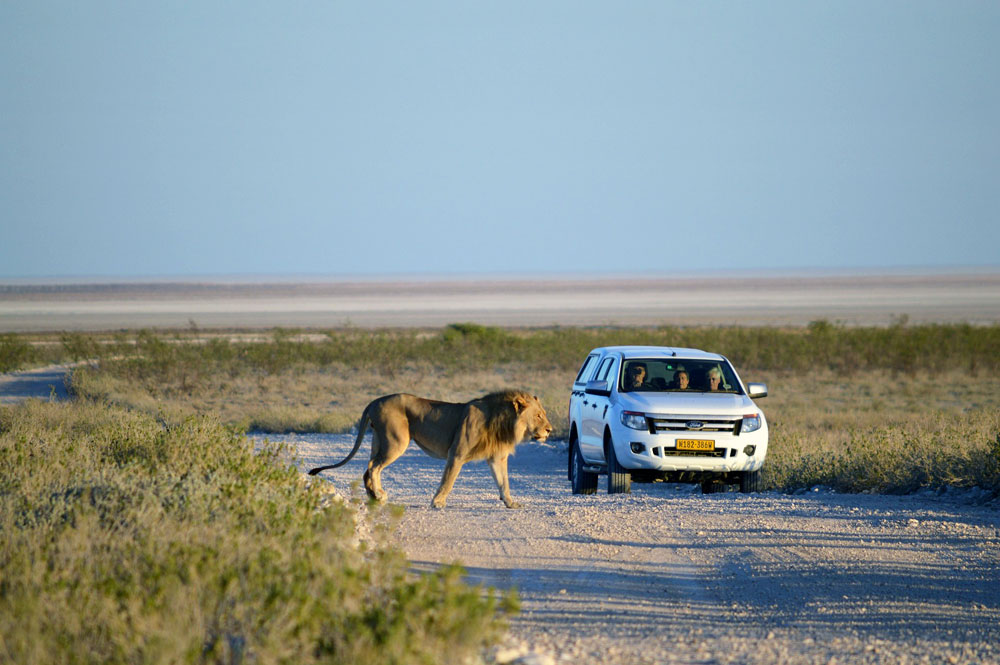
Welcome to the vibrant land of Namibia, where natural beauty and diverse landscapes await you throughout the year. Namibia is a land of contrasts, from the red sand dunes of Sossusvlei to the wildlife-rich Etosha National Park, and the rugged coastline of the Skeleton Coast.
But when is the best time to visit Namibia? The answer lies in the seasons. Namibia experiences two main seasons – the wet and the dry seasons. Each season offers a unique experience, from the lush greenery and abundance of wildlife in the wet season to the clear skies and comfortable temperatures in the dry season.
In this article, I will take you on a journey through the seasons in Namibia and help you choose the perfect time to visit based on your interests and preferences. Let’s explore the wonders of Namibia through the seasons together!
Namibia’s climate and weather patterns
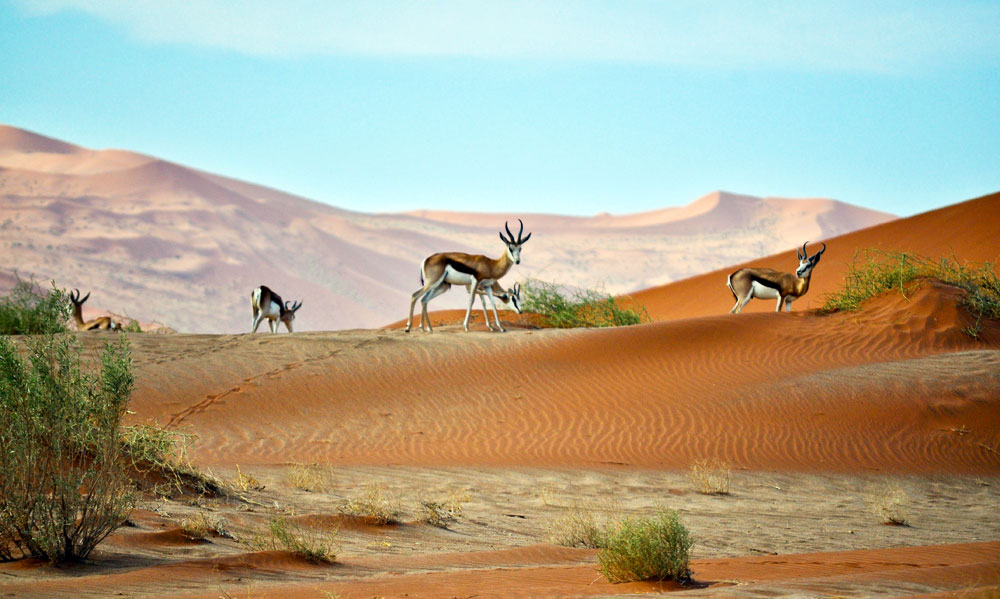
Navigating Namibia’s weather patterns can be the key to your perfect adventure. This desert gem, known for its breathtaking landscapes and vibrant wildlife, has a climate that’s predominantly dry, making it a year-round destination. However, understanding the seasons in Namibia can help you optimize your visit.
The rainy season, spanning from November to April, transforms much of the country into a lush, green oasis. Notably, this is the best time for birding in Namibia, as the rain fills the waterholes, attracting an incredible array of bird species. However, be prepared for the occasional thunderstorm and higher humidity levels during these months.
The dry season runs from May to October. This is often considered the best time to visit Namibia for wildlife viewing. The scarce water sources cause the wildlife, particularly in Etosha National Park, to congregate around waterholes, making them easier to spot during your game drives. However, keep in mind that the dry landscape can kick up dust, so consider bringing a scarf or bandana.
During this time, the daytime temperatures are generally pleasant, especially in Windhoek, the country’s capital. However, the temperature can drop significantly at night, especially in the desert regions around Sossusvlei, home to the iconic red dunes of Namibia.
July and August mark the peak travel months and are an excellent time to explore Namibia’s diverse landscapes, from the Skeleton Coast to Walvis Bay. The blue skies and comfortable daytime temperatures create a perfect backdrop for sightseeing.
Planning your trip to Namibia around these climate patterns can enhance your experience, whether you’re on a safari in Etosha, exploring the dunes of Sossusvlei, or soaking in the culture in Windhoek.
Best time to visit for wildlife sightings
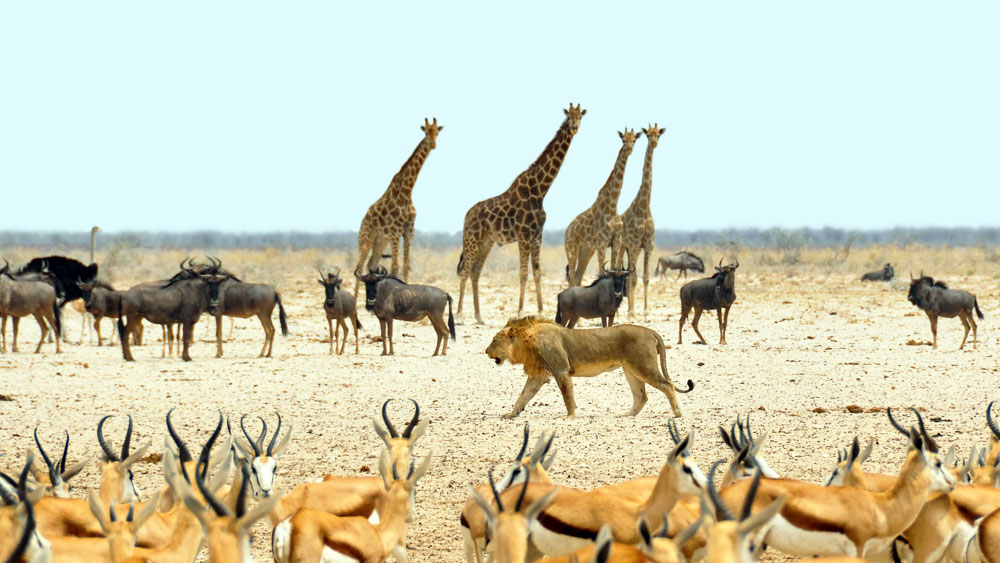
Namibia, with its diverse wildlife and stunning landscapes, is a dream destination for nature enthusiasts. However, knowing the best time to visit Namibia for wildlife sightings can truly enhance your safari experience.
From May to October, the dry season sweeps across the country, offering optimal wildlife viewing conditions. The vegetation thins out during this time, making it easier to spot animals such as lions, elephants, giraffes, and zebras. Moreover, the scarcity of water sources leads the wildlife to congregate around waterholes and rivers, providing unique opportunities to observe them up close.
Among the most rewarding destinations for wildlife viewing is Etosha National Park. Especially during the dry season, this park becomes a hub for a variety of animals like elephants, lions, and rhinos, all gathering around the watering holes. Another gem is the Caprivi Strip, known for its population of hippos, crocodiles, and a diverse array of bird species.
Despite the sparse rainfall and lower humidity levels in these months, daytime temperatures remain pleasant, although the temperature can drop significantly at night, especially in the desert landscapes around Sossusvlei and Skeleton Coast. So remember to pack for cool evenings alongside your safari gear.
July and August, the peak travel months in Namibia, offer clear blue skies and comfortable weather for game drives and exploration. However, if you’re looking for the cheapest time to visit Namibia without compromising on the experience, consider the shoulder months when the destinations are less crowded.
Best time to visit for birdwatching
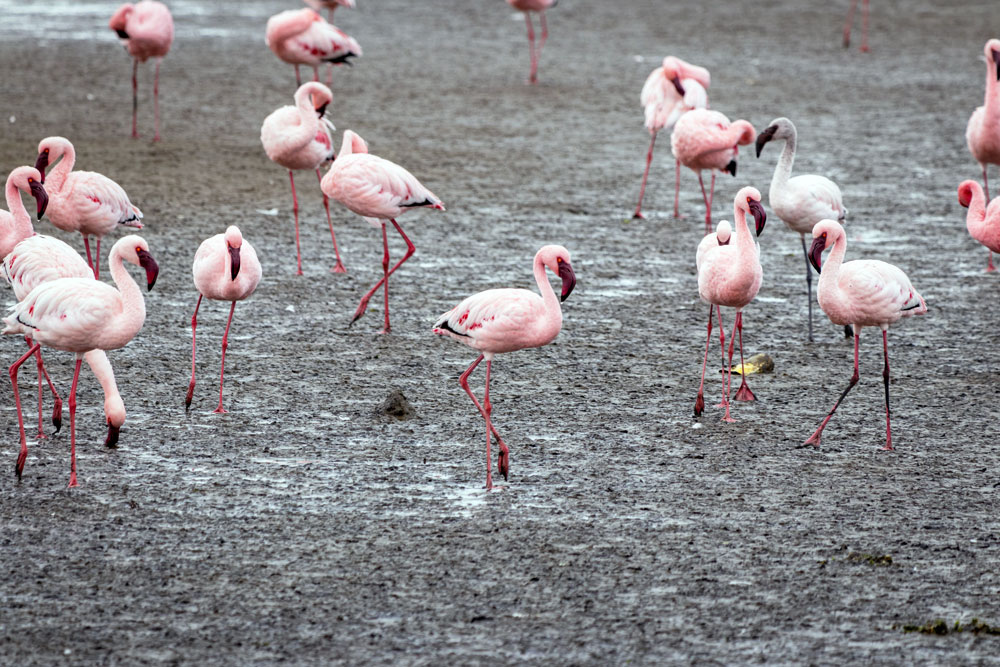
Bird enthusiasts are sure to find Namibia a haven, boasting a catalog of over 630 bird species. If birdwatching is on your list of things to do in Namibia, the wet season from November to April is the prime time for this activity. The country’s water sources brim with life, hosting a plethora of migratory birds during these months.
Caprivi Strip is a hotspot for bird lovers, teeming with a variety of waterbirds including storks, herons, and pelicans. Further enhancing Namibia’s bird-watching experience is the Kunene River, a sanctuary for over 250 bird species. Additionally, the wetlands around Walvis Bay offer a spectacular birding spectacle, with flamingos, pelicans, and other waterbirds gathering in substantial numbers.
While the rainfall during this season can lead to occasional thunderstorms, it also enhances the lushness of the landscapes, providing a vibrant backdrop for your birdwatching excursions. The daytime temperatures are usually pleasant, although they can drop considerably after sunset, particularly in the desert areas around Sossusvlei.
A Namibia vacation isn’t just about wildlife viewing or exploring the red dunes of Sossusvlei; it’s also about immersing oneself in the country’s unique birdlife. So, if you’re planning a trip to Namibia during the wet season, gear up for an incredible birdwatching adventure alongside the many other wonders that this African gem has to offer.
Best time to visit for outdoor activities
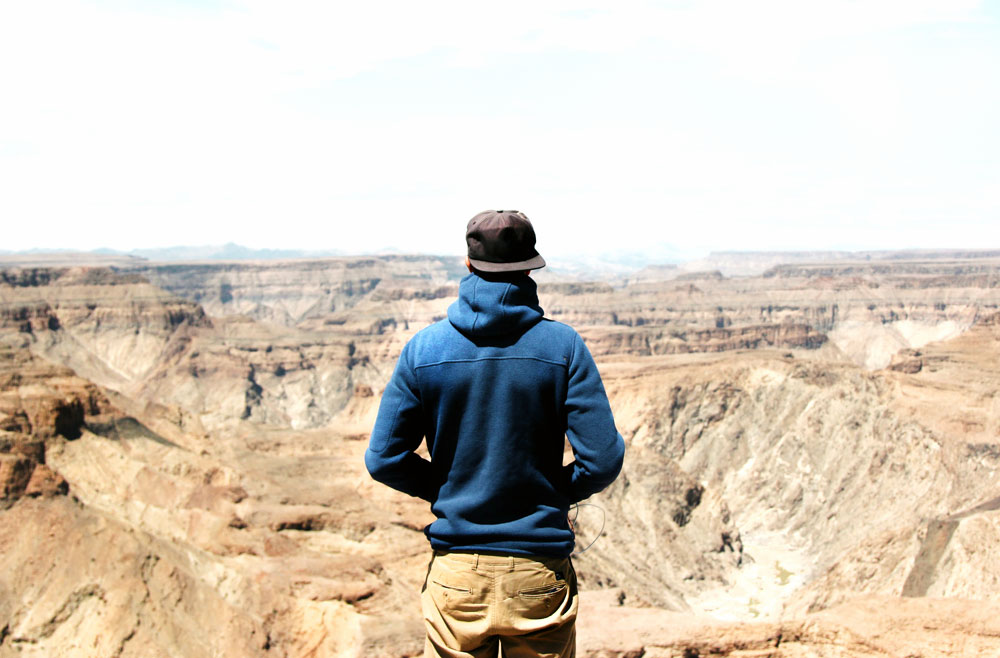
Namibia, a playground for adventurers, offers a broad spectrum of outdoor activities, catering to various interests and expertise levels. If your Namibia vacation involves outdoor pursuits like hiking, camping, or photography, then the best time to visit Namibia is during the dry season, spanning from May to October. During these months, the weather in Namibia is agreeable, complemented by clear blue skies, perfect for outdoor adventures.
Among the top things to do in Namibia, hiking in the Fish River Canyon is an exceptional experience. One of the world’s largest canyons, it offers breathtaking views, especially in the dry season when temperatures are pleasant and the landscapes aren’t as harsh as in the wet season.
Another must-try activity is camping under the starlit sky in the Namib Desert. Amid the desert landscapes, particularly around Sossusvlei, the temperatures can drop considerably at night, but the spectacle of the dunes under the stars is worth the chill.
For photography enthusiasts, wildlife viewing during game drives in places like Etosha National Park or around waterholes in the northern part of Namibia presents outstanding opportunities, with wildlife easier to spot in the sparse vegetation of the dry season.
Best time to visit for cultural experiences
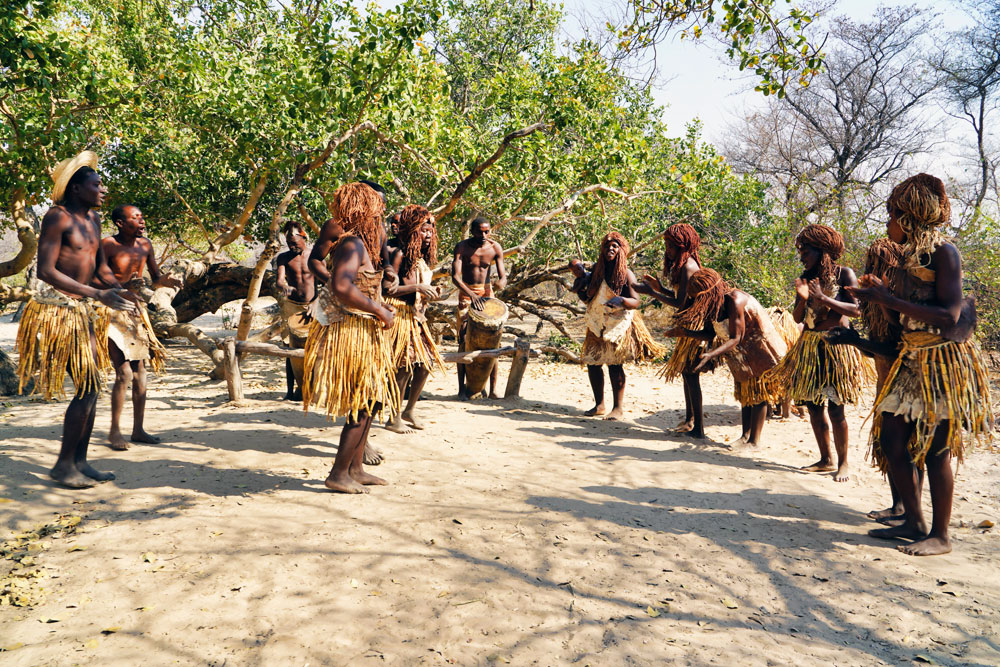
Namibia, a nation steeped in history and rich with diverse cultures, offers visitors an unforgettable cultural journey. If immersing yourself in Namibia’s cultural tapestry is your desire, then the dry season from May to October is the best time to visit Namibia. This time of year is when most of the vibrant cultural festivals and events are held across the country.
One cultural highlight during your Namibia vacation is the renowned Himba Tribe Festival, a popular time in the Kunene Region, usually held in August. This festival is a grand celebration of Himba culture, featuring traditional dances, music, and food. If you’re there during this month, it’s an excellent time to revel in the festivities and experience the Himba way of life.
For a more intimate cultural encounter, consider visiting a traditional Himba village. Here, you can learn about the tribe’s customs, with daytime temperatures providing a pleasant backdrop for exploration.
Namibia is not only about wildlife viewing or safari in places like Etosha National Park. It’s also a destination where you can connect with the local culture and traditions, adding another dimension to your trip to Namibia.
Off-season travel to Namibia
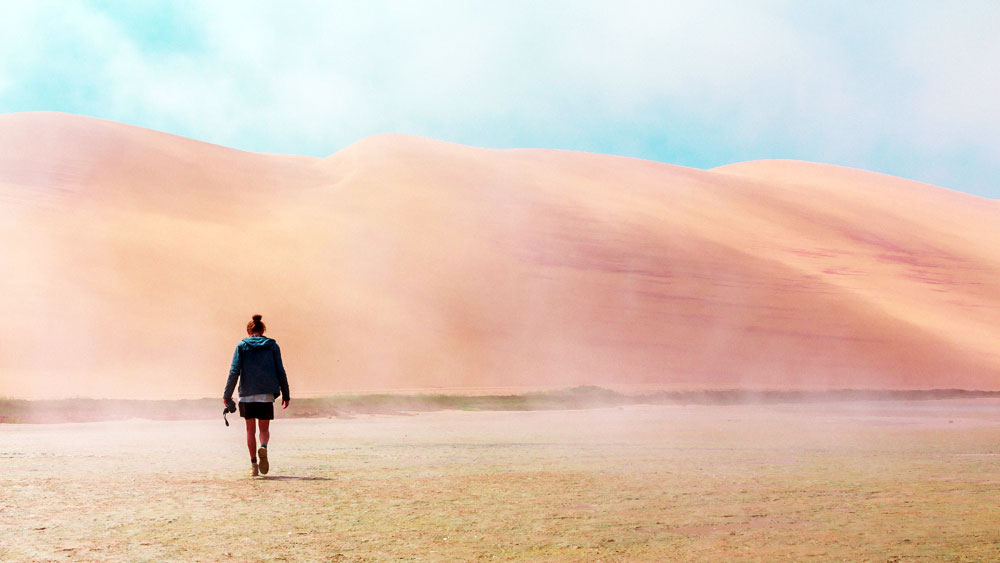
If you’re drawn to the idea of avoiding the peak travel months and prefer a more relaxed pace, visiting Namibia during the off-season presents its unique charm. Namibia’s off-season corresponds to its wet season, which spans from November to April. This time of year might be the cheapest time to visit Namibia, and it certainly doesn’t lack fascinating things to do in Namibia.
During the rainy season, the landscapes of Namibia transform. The usually arid desert landscapes burst into a verdant spectacle, making it an excellent time to experience Namibia’s natural beauty in a different light. The temperatures during the day are comfortable, and the occasional thunderstorm brings a sense of drama to the expansive blue skies.
A trip to Namibia during this time offers you the opportunity to witness the spectacular Epupa Falls in the remote Kunene Region. Rainfall during this time means the falls are at their most impressive, cascading amidst lush greenery.
Also, the infamous Skeleton Coast provides a unique experience during the wet season. The rugged coastline reveals shipwrecks’ remnants, a stark contrast to the lushness brought about by the rain. A Namibia vacation during the off-season also means you’ll encounter fewer crowds on your game drives in Etosha National Park. The wildlife viewing remains exciting, as animals are easier to spot around water sources.
To sum it up, while the best time to visit Namibia is typically during the dry season, an off-season visit allows you to enjoy a different facet of this fascinating country. The choice depends on your interests and what you hope to get out of your Namibian adventure.
Planning your Namibia trip based on the seasons
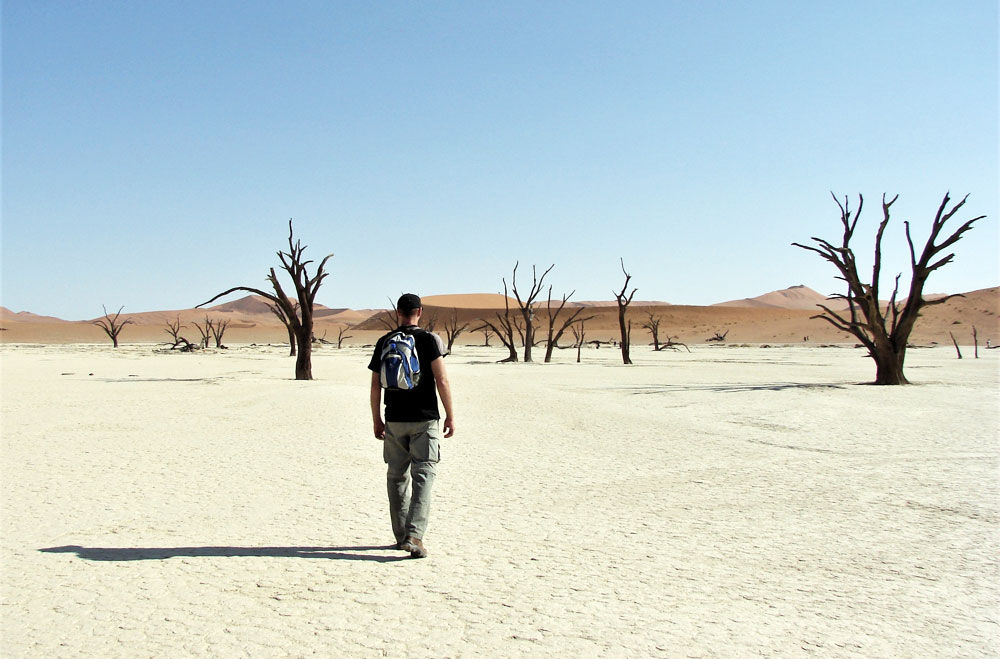
As you map out your Namibia vacation, it’s vital to align your travel plans with the country’s climate and the season in Namibia that suits your interests best. The best time to visit Namibia largely hinges on what you’re hoping to experience.
For those who have wildlife viewing high on their list of things to do in Namibia, the dry season, typically from May to October, comes highly recommended. During this time, wildlife congregates around waterholes, making them easier to spot, especially in Etosha National Park. Daytime temperatures are pleasant, and the clear blue skies make for excellent game drives. Plus, if you’re interested in exploring the red dunes of Sossusvlei or the haunting beauty of the Skeleton Coast, the dry season offers the perfect conditions.
On the other hand, if you’re an avid bird watcher planning to go to Namibia for bird watching, the wet season from November to April is your best bet. This period is also the wettest time, when the landscape transforms, and Namibia’s weather is characterized by rainfall, thunderstorms, and increased humidity. The increase in water sources during this time attracts a variety of bird species, making it an excellent time for birding.
The wet season is also a popular time for cultural experiences, with many traditional events and festivals happening across much of the country, from Windhoek to northern Namibia. Plus, the temperatures in the desert drop, offering a different perspective of the desert landscapes and dune formations, like those in Sossusvlei.
If you’re drawn to the lure of quieter trails and fewer crowds, consider visiting during the off-season, which might also be the cheapest time to visit Namibia. The country’s waterfalls, such as those in the Kunene region, are at their most spectacular during this time, and the lush greenery presents a different side of Namibia’s usually arid landscape.
Remember, though, that the weather in Namibia can vary, with temperatures during the day generally being warm and temperatures dropping at night. So, regardless of the time you choose to travel in Namibia, packing layers is always a good idea.
Top Destinations to Visit in Namibia
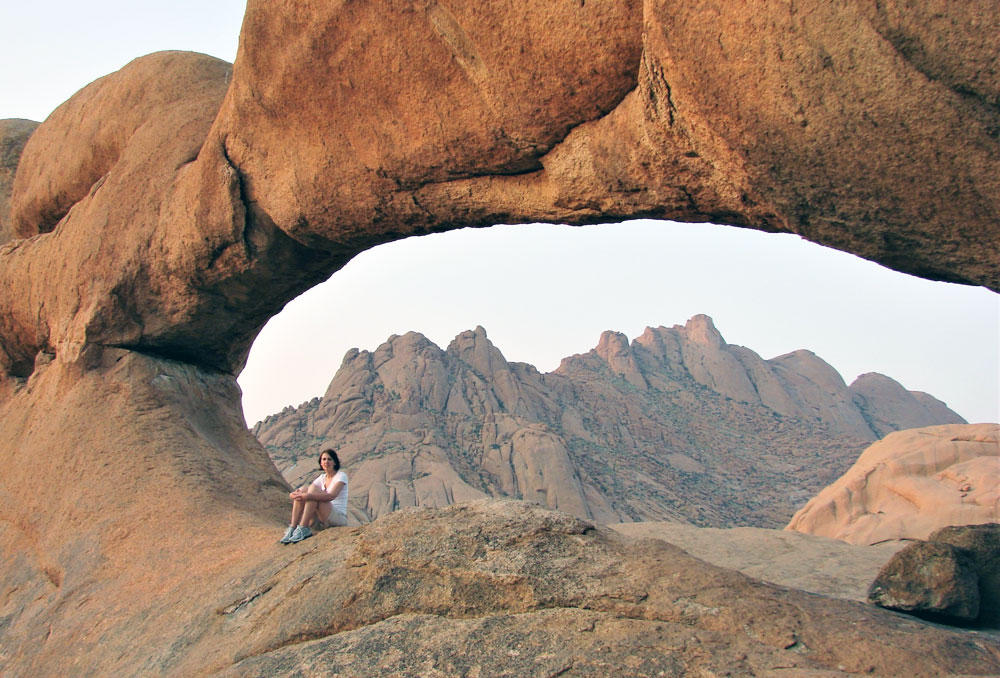
Namibia is a vast country with a wide range of destinations to explore. Some of the top destinations to visit include:
- Sossusvlei: home to the iconic red sand dunes and stunning landscapes.
- Etosha National Park: a wildlife-rich park where you can see lions, elephants, and other animals up close.
- Swakopmund: a charming coastal town with German colonial architecture and a variety of outdoor activities.
- Fish River Canyon: one of the largest canyons in the world, perfect for hiking and camping.
- Damaraland: a rugged and remote region with stunning landscapes and ancient rock art.
To wrap up, Namibia is a land of remarkable contrasts. Its diverse landscapes vary from the red dunes of Sossusvlei to the rugged Skeleton Coast and the abundant wildlife of Etosha National Park. It’s a country rich in culture and history, all adding to the beauty of a Namibia vacation.
The best time to visit Namibia depends on what you’re looking to experience. For wildlife enthusiasts, game drives during the dry season, between May and October, promise exceptional sightings as animals cluster around water holes, making wildlife easier to spot, especially in Etosha. The pleasant daytime temperatures and clear blue skies enhance this experience.
Bird watchers might prefer to go to Namibia for bird watching during the rainy season, from November to April. During this wettest time, the increase in water sources and rainfall attracts a diverse array of birds. The climate in Namibia is also transformed during these months, with the landscape becoming lush and green, and thunderstorms providing a dramatic backdrop.
Cultural explorers will find the season in Namibia between May and October rewarding. A myriad of cultural events across the country, from Windhoek to the northern regions, offer deep insights into the rich traditions and customs of this unique destination in Africa.
Moreover, the off-peak season can be the cheapest time to visit Namibia, providing a more tranquil experience, less crowded trails, and the joy of seeing the country’s waterfalls at their peak flow.
Keep in mind that the weather in Namibia, whether in the driest month of the year or the wettest, can fluctuate. Daytime temperatures are generally warm, but the temperature can drop significantly at night, so packing layers is a good idea.
In essence, every season, every month in Namibia has something special to offer. The key is planning your trip to Namibia around what you most want to see and do. So, get ready to experience the best of Namibia through the seasons. Pack your bags, grab your camera, and embark on a journey that will surely leave an indelible mark on your travel memories!
Similar Posts
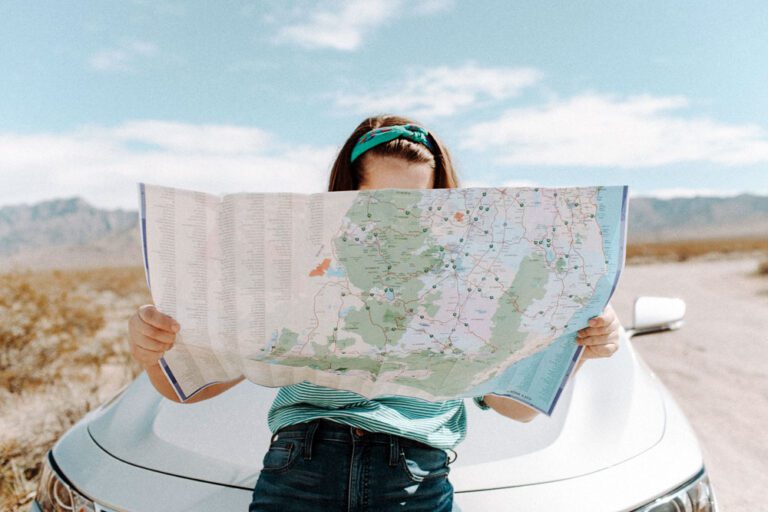
Top Tips for Traveling to Africa on a Budget: Save Money on Your Next Trip
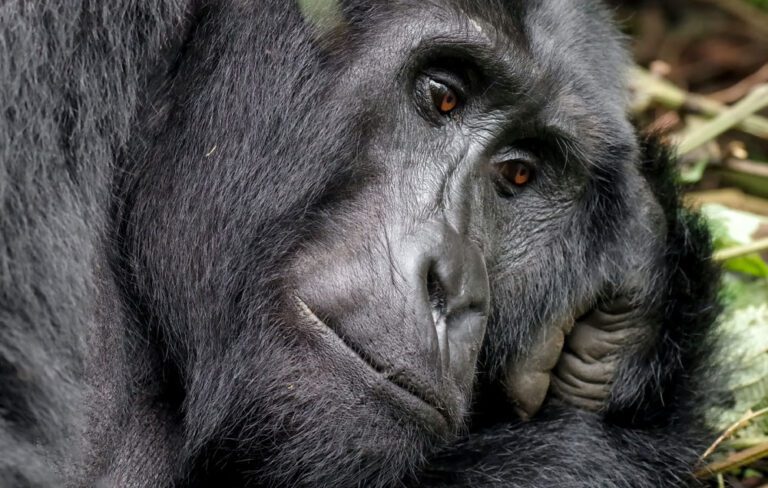
Planning to Visit Rwanda? Packing Tips for Traveling to Rwanda
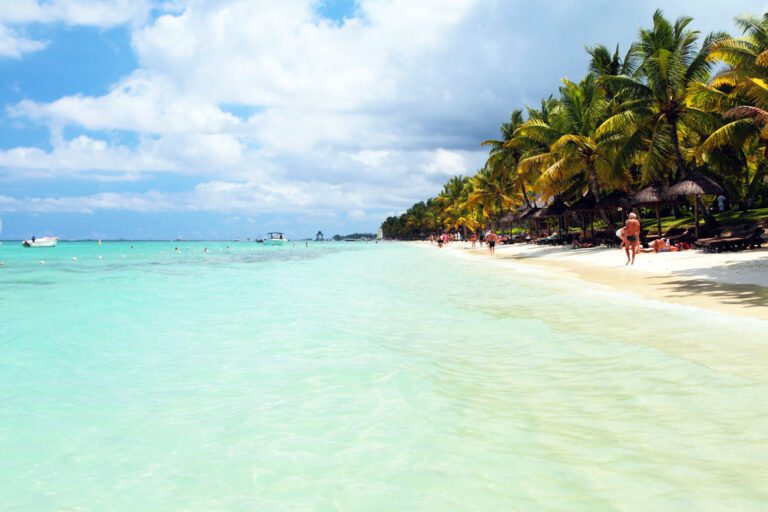
From Festivals to Weather: A Comprehensive Guide to Choosing the Best Time to Visit Mauritius
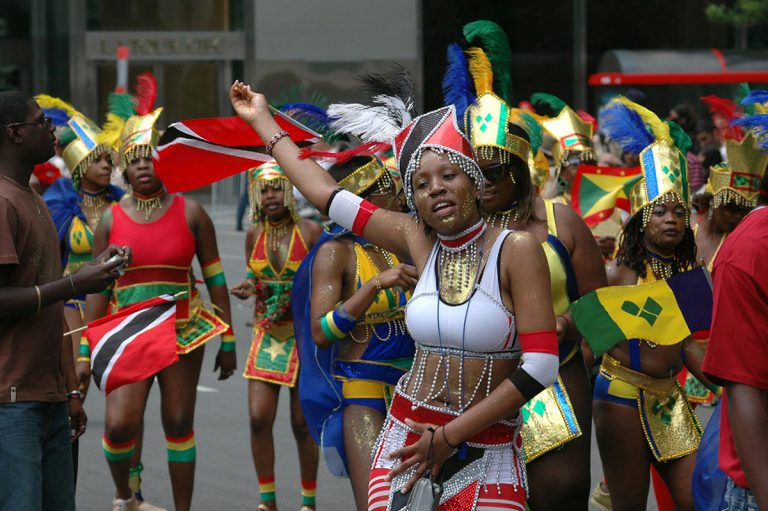
Best Time For Traveling to Africa
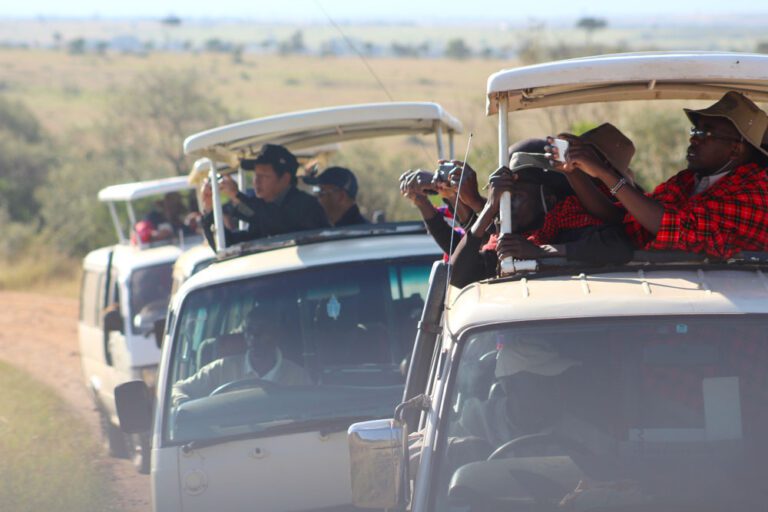
9 Surprising Truths About African Safaris
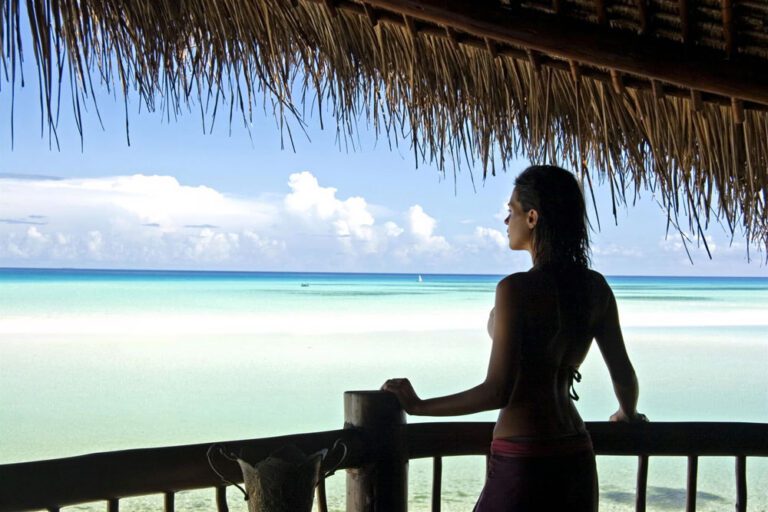
Plan Your Perfect Getaway: Discover the Best Time to Visit Mozambique
Leave a reply cancel reply.
Your email address will not be published. Required fields are marked *
Save my name, email, and website in this browser for the next time I comment.


- Namibia Seasons & When to Travel
- Destinations
- Namibia Safaris
The dry season in Namibia is from April to October, with the rains mainly falling from November to March.
In April/early May, the grasses are still long and foliage quite thick after the rains, making game viewing more challenging. More importantly for regions such as Etosha National Park , water is still available in seasonal waterholes throughout the bush, meaning the animals are still quite spread out.
From June onwards these waterholes dry up and game is forced to start relying on fewer permanent water sources. Game viewing is usually best from late June to October, however the landscape can look harsh and very dry at this time, especially in September/ October, because grasses and foliage have withered or being eaten. Animals will begin to disperse again in November/ December as soon as enough rain has fallen for them to survive away from permanent water sources.
The most challenging time of year for game viewing in Namibia is from December to March, unless you are mainly interested in birds. Migrant birds tend to start arriving in late September, staying until March/April.
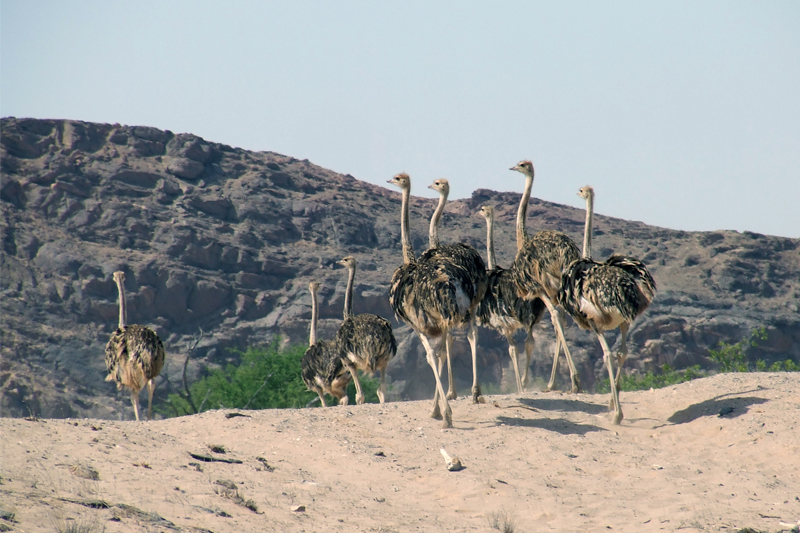
In the desert regions where wildlife viewing is secondary to exploring the landscapes, wildlife can be encountered throughout the year. If your priority in Namibia is purely seeing the landscapes, then you can travel at any time of year, though conditions for travel are not so good between December and March when heavy rains and flooding can damage road surfaces and air transfers can be disrupted by poor weather.
Temperature-wise, Namibia does tend to display typical desert conditions of hot days and cool nights. May to September is the winter period, and whilst day time temperatures can still reach above 30c, it cools down significantly at night. Early mornings can be extremely cold, especially on the coast where cold air is blown in from the Atlantic. From October to April conditions are warmer, and day time temperatures can soar to around 40c, with milder evenings. However, even at the hottest time of year, evenings and early mornings can still be chilly. Humidity is rarely a problem, except along the Caprivi Strip during the rains (November to March).
The weather on the coast is always influenced by the cold Atlantic currents and it is very common for the Skeleton Coast , and coastal towns such as Swakopmund, Walvis Bay and Luderitz, to be shrouded in fog in the mornings.
BEST TIME FOR VIEWING WILDLIFE


Best Time to Visit Namibia

Climate Overview

Geographical location
Climate in namibia.
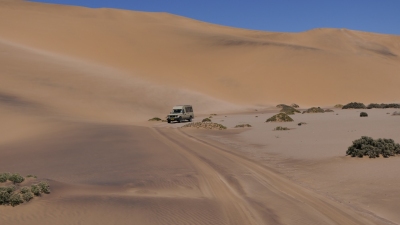
Beach Vacation in February

Best Time to Visit Namibia: Overview
When to travel to namibia, best time to visit the regions, climate charts namibia.
In the following, you will find climate charts for the regions.
Furthermore, there are some charts you can use for quick comparison of climate between the regions.
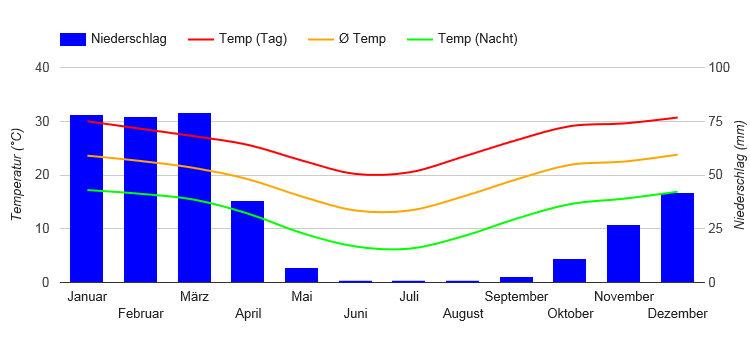
Etosha National Park
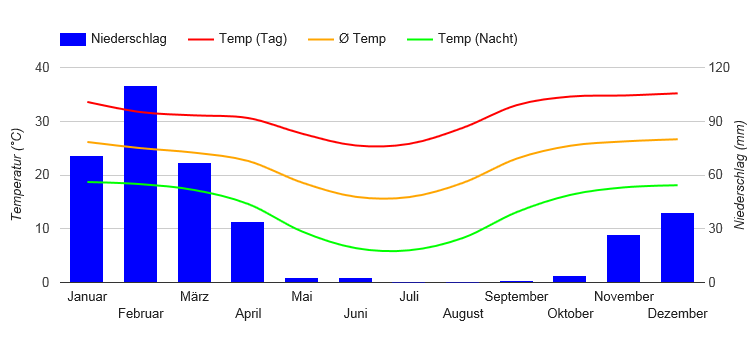
Day Temperatures
Night temperatures, average temperatures, precipitation, hours of sunshine per day.
Source of Data: German Weather Service (Offenbach) and Wikipedia
Climate Tables Namibia
Temperatures, precipitation, sunshine in windhoek (namibia), temperatures, precipitation, sunshine in walvis bay (namibia), temperatures, precipitation, sunshine in etosha national park (namibia), sights and highlights, popular activities, more attractions, current weather and forecast.
Activities and Attractions
Distances to namibia, where’s namibia, continent: africa, namibia: experiences of our visitors.

mostly warm, but not humid – occasional rain showers – at night in the desert rain conjures up great colors!
Weather Rating: 4 stars – Good

Very pleasant dry warm climate. No humidity. Good travel time for a round trip.
Weather Rating: 5 stars – Excellent

Motorcycle tour without rainwear! It was a dreamlike experience and also for not so experienced drivers feasible!
every day a bright blue sky. And a lot of nice people.

At the end of December we were on the road in the north of Namibia, which was called the worst travel time imaginable. In fact, it was extremely hot during the day, but still manageable. When we arrived in Etosha after 8 days, the first heat storms and rainfalls slowly began. However, always in the afternoon, from 3 or 4 pm. Sometimes it rained through the night, the next morning it was clear again. Overall, there were only a few restrictions for us. Overall I would describe the travel weather as good.
Share your Experience and Win
Pride of Namibia
Destinations in the vicinity ….
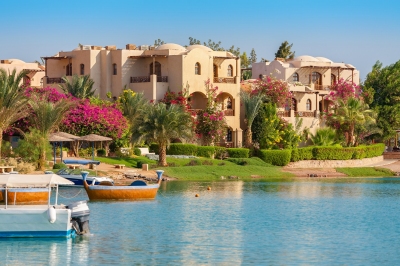
- Imprint / Privacy
- Image Sources
- Destinations
When to Visit Namibia
Discover when you should plan a trip to namibia.
Great weather, friendly people, awe-inspiring views, wildlife, deserts and mountains. It's possible to travel to Namibia throughout the year.
- Namibia's peak season runs from July to October. This has traditionally coincided with 'winter game viewing' in Etosha.
- Travelling outside of these times assures you better availability, lower off season rates and fewer travellers.
- Namibia is a hot country with very little rain; the rain that does fall in the summer takes the form of short sharp thundershowers.
July to October: Namibia's Peak Travel Season Namibia is exceptionally busy and popular between July and October. This is winter and temperatures are more moderate, nights are cool and days are warm and sunny. It's usually the most popular time to visit Namibia because the game viewing in Etosha , Damaraland and the Skeleton Coast and Caprivi is at its best. However, the lodges and hotels are full and availability is exceptionally limited. Booking well in advance is absolutely critical to the success of planning your trip at this time of year.
How it works
- 1 Describe your dream trip
- 2 A Travel Expert will help curate your experience
- 3 Confirm & start packing
Let's plan your trip
Enquire now and a Travel Expert will get back to you within 24 hours.
Ready to start your journey?
ZA Number: +27 21 469 2600
Why book with us.


- Rooms and rates
- Food & Drink
- Etosha day trips
- Farm drives and walks
- Namibia FAQ
- Wildlife FAQ
- Reservations
A guide to the seasons in Namibia
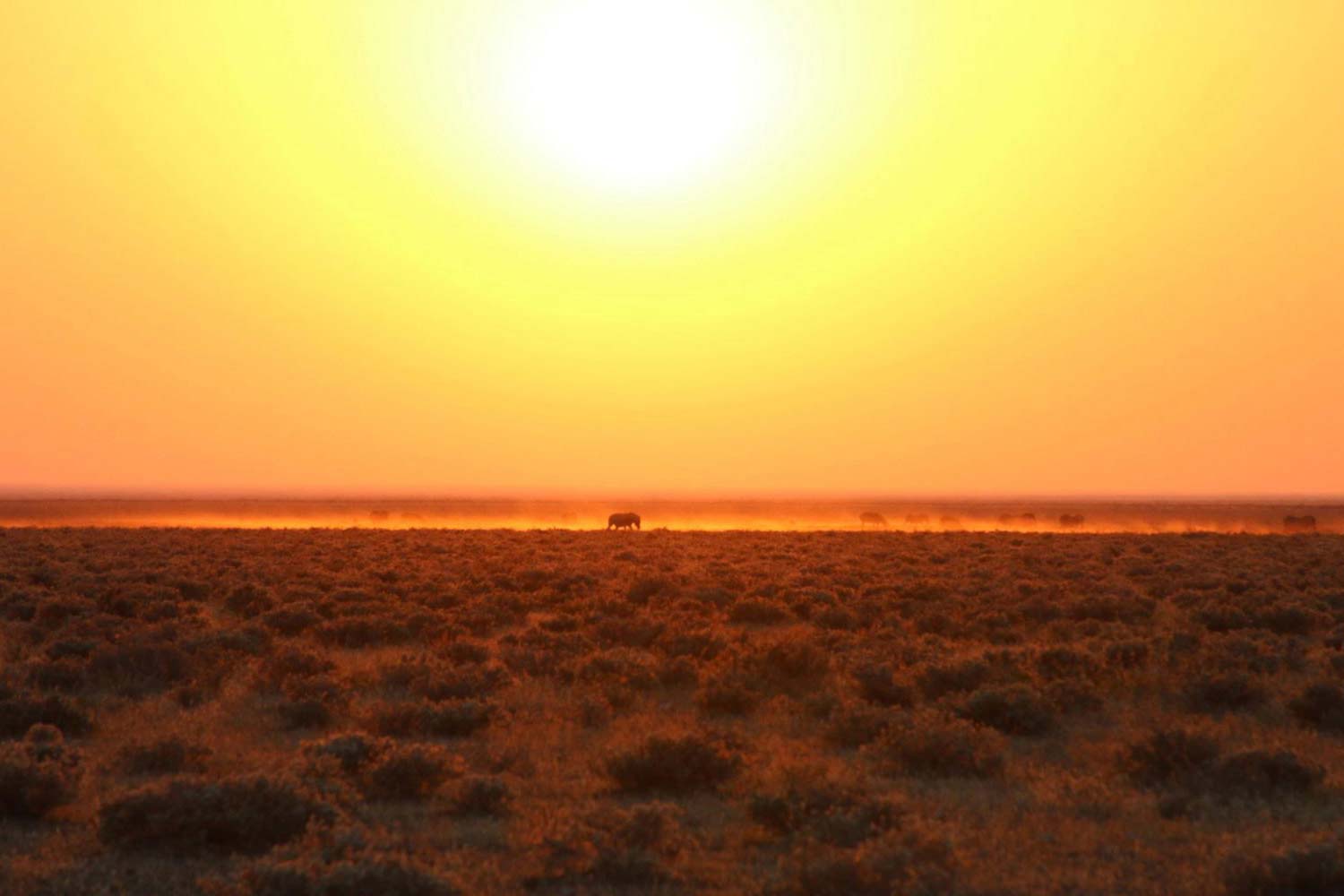
Seasons and weather in Namibia can be confusing. There is a meme about daily temperature in Namibia that goes like this:
“Welcome to Namibia. Winter is at 6am. Spring starts at 10am. Summer is at 2pm, and Autumn around 5:30ish. Please dress accordingly!”
It is very true that when packing for your holiday in Namibia, you need to prepare for all eventualities. While it can be very hot in the summer, often reaching 40 degrees, it can also cool down considerably when it rains. And although our winters are mild and sunny, we can experience both hot days and frost – occasionally both within the same week!
Summer, Autumn, Winter and Spring
Namibia doesn’t really experience the typical three-month seasons of the northern hemisphere.
- Summer is long, running from October to March (6 months).
- This is followed by a short Autumn from April to May (2 months), although most leaves drop from deciduous trees only from late May.
- Winter is relatively short, beginning in earnest in June, and usually ending in August (3 months).
- Then September constitutes a very brief Spring (1 month).
Inland vs coast
Temperatures also vary across the country. Inland areas and more northern parts of the country tend to be milder than the southern and western desert areas.
And then the coast of Namibia has a climate all of its own: Dependent on the cool Benguela current coming up from Antarctica, the Namibian coast is persistently cool, and often misty or cloudy. But beware, even on overcast days at the coast, it is still possible to become sunburnt very quickly.
Rainfall in Namibia
Rainfall in Namibia is normally limited to the summer months of October to March, sometimes extending into April and early May. The heaviest rains fall from January to March. Rainfall also varies across the country from south-west (lowest rainfall) to north-east (highest rainfall). The large majority of the rain falls in the evening and at night, so don’t let it put you off visiting us in the summer months!
Hopefully all of the above helps you both with your packing, and also to help you choose when to go to Namibia.
Check out our FAQs for more info on Namibia and travel advice too.
coast rainfall seasons travel travel advice weather
- Cookie policy
Vreugde Guest Farm
10 ways to travel on a budget in Namibia

Oct 19, 2023 • 6 min read
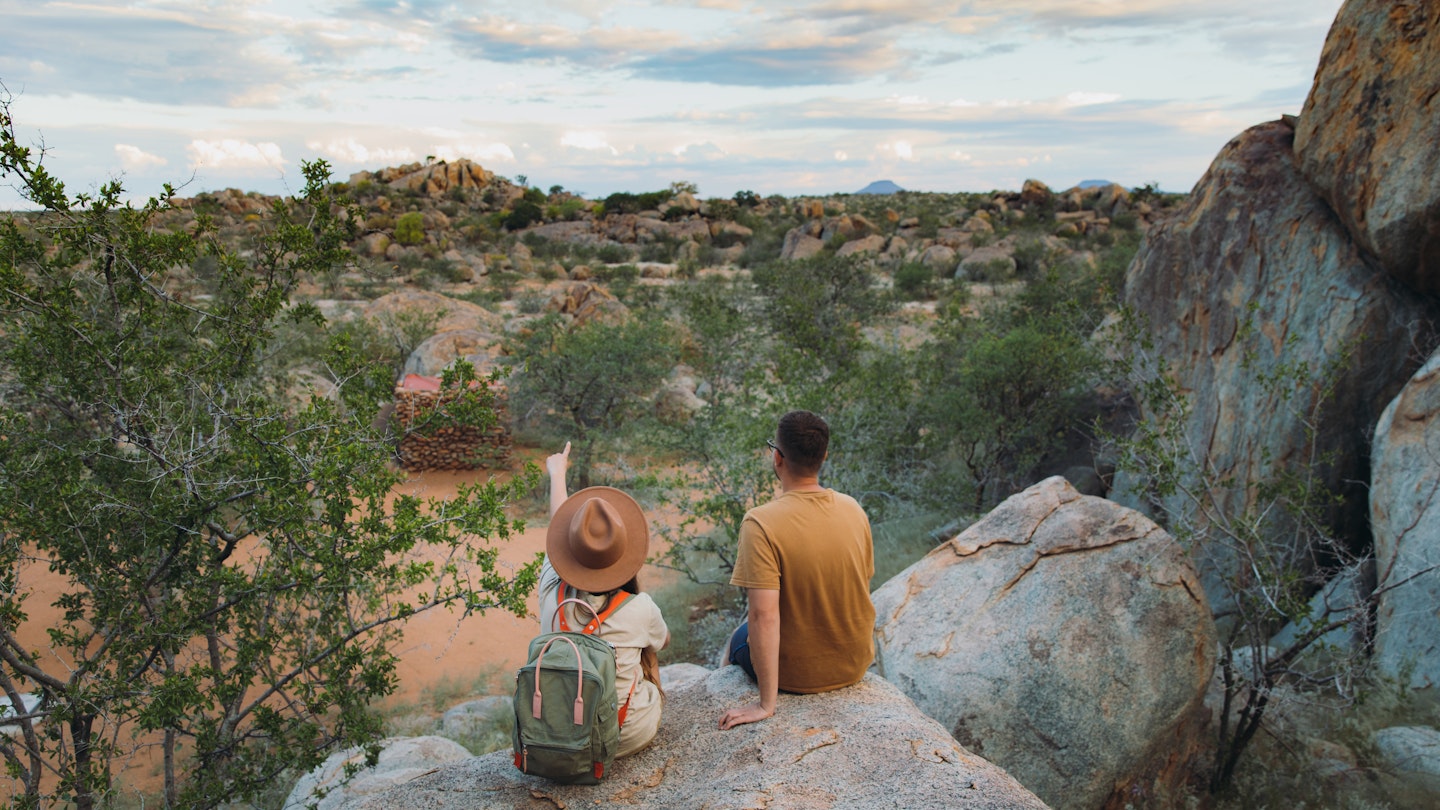
With this guide to daily costs, it is possible to tour Namibia on a budget © Anastasiia Shavshyna / Getty Images
Namibia has magnificent desert vistas, soaring dunes, a long, wild coastline and excellent tourism infrastructure.
Its good road network and multitude of well-outfitted camping sites make it ideal for independent travelers. However, distances are long, lodges are expensive and costs can quickly mount up. The biggest areas to save are transport and accommodation. Here are our top tips for creating an affordable Namibian adventure, along with a guide to daily costs.
Daily costs in Namibia
- Dorm bed in a backpacker’s hostel: from US$20
- Basic room for two: from US$50
- Managed campsite: US$150 per person
- Self-catering apartment (including Airbnb): from US$65
- Coffee: from US$1.50
- Lunch: from US$10
- Dinner for two: from US$30
- Beer at the bar: US$2
- Small packet of biltong: US$2
- 4WD rental vehicle including rooftop tent: from US$100 per day
Average daily cost: US$110–350
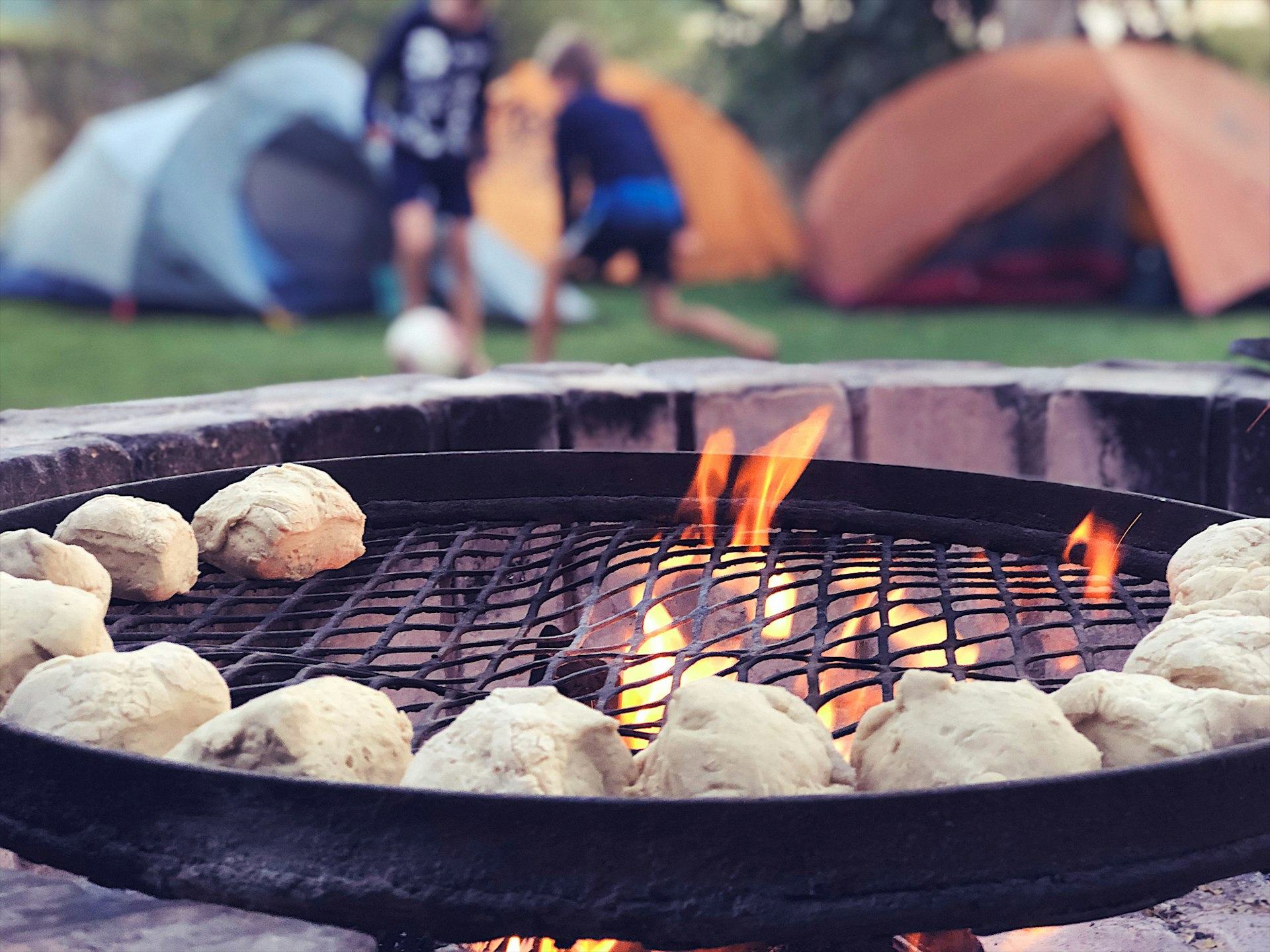
1. Fly to South Africa and take a bus to Namibia
Only a handful of airlines fly into Namibia. While good deals are sometimes available from Europe (Frankfurt, Germany is the Namibia hub), it often works out cheaper to fly into Johannesburg or Cape Town and then continue by bus or plane into Namibia. Intercape has a direct bus between Cape Town and Windhoek , and connecting service between Windhoek and Johannesburg, with prices starting about US$65 one way.
If you’re planning a regional itinerary, there are also buses between Johannesburg and Gaborone ( Botswana ), where a shuttle goes a few times weekly to Windhoek. Flying into Windhoek from either Cape Town or Johannesburg takes only two hours. If you book early enough, you can get tickets from US$150 one-way.
2. Travel during the low season
December through March marks the wet season in Namibia . Once the Christmas–New Year holidays are over, the crowds disappear and many accommodation and tour prices are reduced. Rates for lodge accommodation, in particular, can drop by up to 40% in comparison with in-season prices.
While the wetter months are not ideal for viewing large herds of wildlife, they are an excellent time for birding and seeing newborn animals. Green, wildflower-clad landscapes are another highlight, and you'll have many areas mostly to yourself. Summer rains are typically isolated and brief, mainly occurring in the form of heavy afternoon thunderstorms. By timing your excursions in the morning, you’ll still be able to get around and can relax and enjoy the welcome rain. The main exception to this is in the far north, where rains are heavier and some areas can become inaccessible.
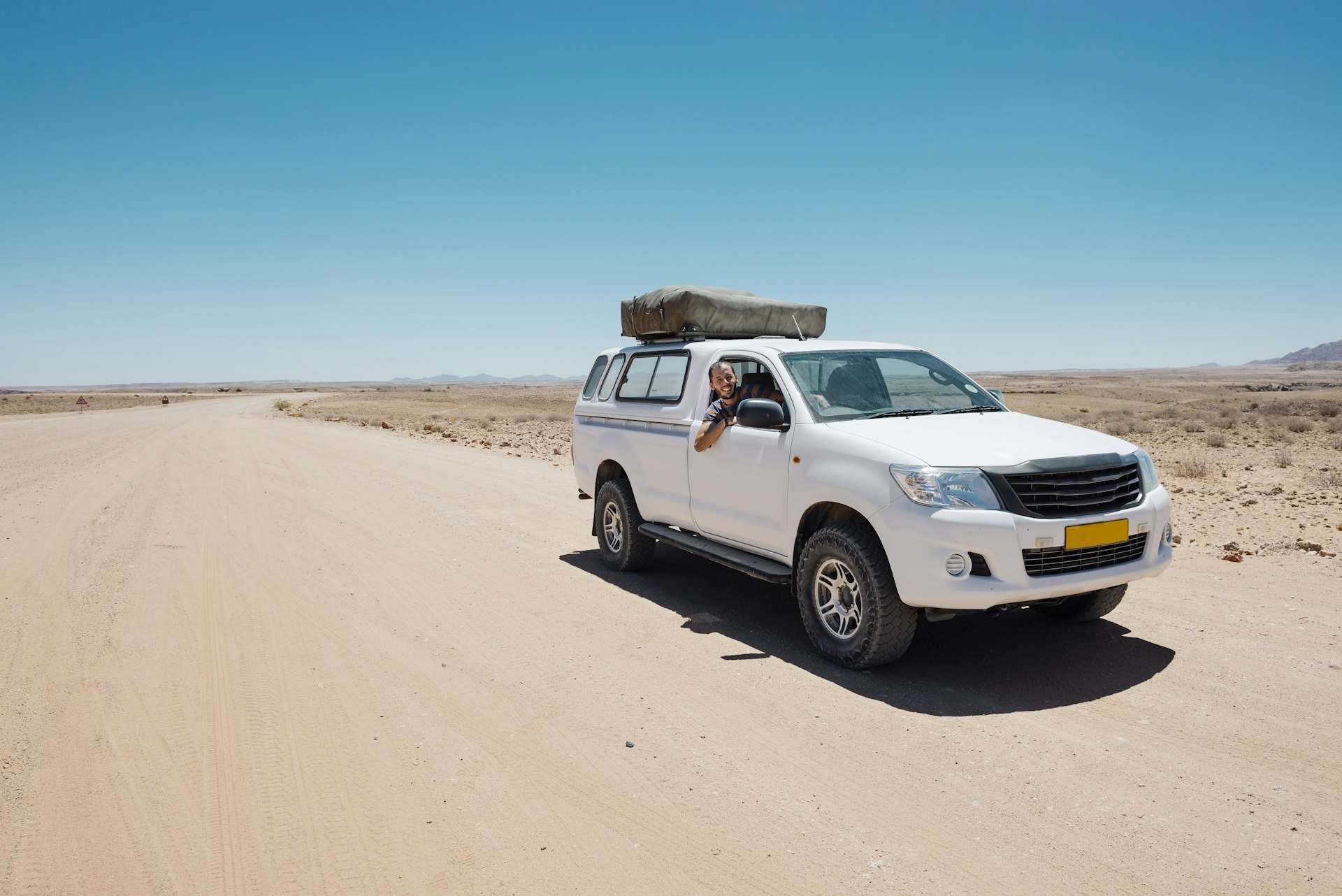
3. Self-drive your way around the country
If you’re traveling in a group, self-drive is a safe and economical alternative to a fully guided experience, and Namibia’s good road network makes it easy. A week-long scheduled group tour starts at around US$1,500 per person, while a 4-person 4WD vehicle outfitted for camping will cost from about US$650 for this same period plus the cost of fuel. Fuel costs are currently about US$1 per liter; plan on about US$50 per day or more, depending on your itinerary.
Namibia is easy to navigate and clearly signposted. Though only about 25% of the roadways are tar, the gravel roads are well-kept and generally more scenic – some are spectacular. Flat tires are the most common driver issue, so your vehicle will come with two spares. You'll want to make sure you know how to change one before your trip, and seriously consider the tire and windscreen insurance offered by rental companies.
4. If you’re traveling solo, try out Namibia's shuttle service
Born out of the COVID-19 pandemic and the global shortage of rental cars, the Gondwana Collection launched a shuttle service called Go2 Traveller Transfers . It stops at nine different areas of interest : the Kalahari, Fish River Canyon , Sossusvlei , Swakopmund , Etosha and Damaraland . At each designated stop, lodges will arrange for pick-ups and returns. At about US$45 per leg, the service offers travelers a reliable, affordable, safe, and more environmentally friendly alternative to self-driving.
The drawback is that you'll need to stay in lodges and tented camps and pay for their excursions. But with the rising cost of fuel and high demand for rental cars, this option may work out to be more affordable for solo travelers.
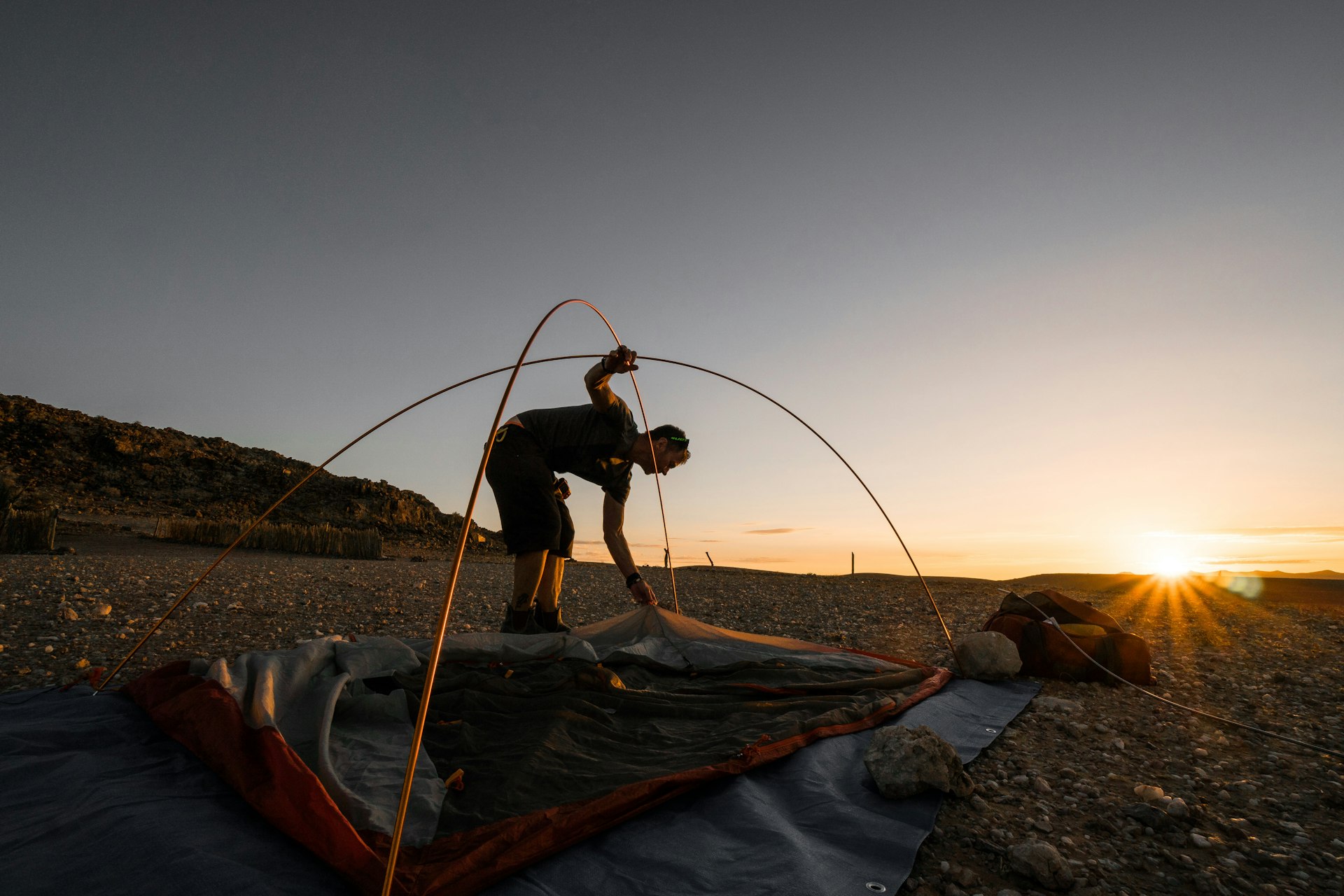
5. Join a scheduled camping tour
It’s also possible to join a scheduled guided camping program, such as those offered by Chameleon Safaris . Durations vary from three to 15 days and start at around US$500 per person. They typically include everything apart from drinks and water.
This is also a great option for solo travelers and those interested in meeting others and sharing experiences. Because the logistics are taken care of and food and fuel are included, you won’t be hit with surprise costs.
6. Stay at Namibia's vast network of campgrounds
Namibia has an abundance of organized campsites throughout the country, which are clean and affordable with good amenities. Not only will you save a ton on lodging, but it's also an excellent opportunity to meet like-minded people, exchange stories and travel tips and really get a feel for the country’s wild, empty spaces and clear night skies.
The average site costs US$30 (or US$10 per person) and has shared bathrooms, hot showers and fire pits with grills at each spot. Some camps even have shops selling food, water and other basic provisions.
7. Mix it up by staying in budget lodges and self-catering apartments
Budget lodges are plentiful in Namibia. They're located all across the country and are clean, some with refreshing pools, starting at just US$25 per night for a room with a shared bathroom. Self-catering apartments and homes average from US$65 per night for the entire place. These types of accommodations are ideal for spending a night or two between campsites. A nice hot shower and some air conditioning can help you reset and get ready for the next leg of your adventure.

8. Spend your days in Namibia’s affordable national parks
Namibia's national parks are exceptionally diverse: expansive sand dunes, vast deserts, plunging canyons, ancient salt pans and dramatic coastlines. While the country currently doesn’t offer a national park pass, entry fees are nominal. The government has added a small conservation fee to each park, bringing the total to about US$7 per person per day at most parks. Children aged eight and below enter parks for free.
9. Stock up on groceries at the beginning of your trip
Namibia's roads offer few opportunities to stop for a bite until you reach your destination, so it’s essential to shop for necessities like snacks and water before you head out. Some self-drive vehicles are equipped with a small refrigerator, allowing you to stock up and save on more than just the basics.
If you're camping or staying in an apartment, you'll have everything you need to prepare your own meal upon arrival instead of going to a restaurant in town, saving time and money. Braai (barbecue) facilities are everywhere, and sitting under the stars with dinner grilling nearby is a fabulous Namibian experience.
10. Take advantage of child and "pensioner" discounts
Children’s (generally 12 and under) and pensioners’ discounts (for those 60 years of age and older) are available almost everywhere in Namibia for accommodation and entry fees, so always ask if these categories apply to you. Some places also offer student discounts.
This article was first published Sep 21, 2022 and updated Oct 19, 2023.
Explore related stories

Budget Travel
Nov 30, 2023 • 9 min read
You don't have to break the bank to explore the incredible landscapes in Kenya – you just need our top tips to squeeze every penny out of your budget.
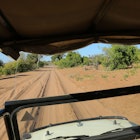
Oct 27, 2023 • 8 min read
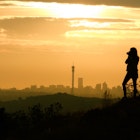
Sep 11, 2023 • 6 min read

Apr 22, 2023 • 5 min read

Jan 29, 2020 • 9 min read
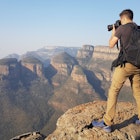
Mar 19, 2024 • 6 min read

Mar 10, 2024 • 5 min read

Feb 20, 2024 • 17 min read

Jan 31, 2024 • 11 min read
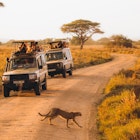
Dec 8, 2023 • 4 min read

COMMENTS
April, May and November are best for shoulder-season discounts and exploring away from the crowds. April and May are lovely times to be in Namibia. Much of the country is covered in shades of vivid green, the rains have washed away the late dry-season dust and the air is exceptionally clear. Daytime temperatures range from 24ºC to 28ºC (75ºF ...
Poor. The best time to visit Namibia is in the Dry season from June to October, although it can be visited throughout the year. Wildlife viewing in all parks, but especially in Etosha, is best in the Dry season. The climate is generally dry and pleasant. Between December and March, some days will be humid and rain may follow, often in localized ...
The best time to visit Namibia falls between May and October when temperatures range from 68-82°F, creating perfect conditions for safaris, hiking, and wildlife viewing. During these months, the weather is comfortable for exploring the outdoors, and the reduced water sources draw animals to waterholes, enhancing the safari experience.
The best time to visit Namibia for game viewing is the May - Oct dry season but the summer rains dramatically transform desert landscapes - find out more. Int Toll Free Numbers 1-866-438-8677 1-888-360-2392
May in Namibia is characterized by dry weather, clear skies, and moderate temperatures, usually between 10 and 28°C (50 and 82°F). This period is among the best times to visit Namibia for wildlife watching and landscape photography due to its good visibility and comfortable temperatures. However, mornings and evenings can be quite cool, and ...
Best time to visit. The best time to visit Namibia is from July to October, when the temperatures are just above 70°F and the chance of rain is low. This is also the best time for wildlife viewing, making it peak travel season — you will need to plan well in advance. The Northern Hemisphere summer is warm and sunny, albeit with cold nights ...
Best time to go to Namibia: Regions and months. Namibia is a beautiful country to visit, regardless of the season and popular with visitors arriving into Namibia from the U.S, U.K, Germany, Switzerland, Italy, South Africa and beyond. Some visitors may require a Namibia visa to secure their entry.. The country has a subtropical desert climate characterised by great differences in day and ...
The best time to visit Namibia is the dry winter season (June to October), when wildlife clusters around waterholes, leading to thrilling encounters with predators. Yet as our guide to the best time to travel to Namibia explains, in a country that enjoys 300 sunny days annually, the December to March rainy season brings relief, baby animals and ...
It's an especially ideal time to visit the iconic Skeleton Coast, one stop on our thrilling two-week Green Season Safari, which comes with a savings of more than $1,500 per person compared with safaris in the busy season. April. This month ushers in the end of the rainy season. It also marks the slow start to peak safari season.
The rainy season in Namibia is not the same as in South-East Asia it does rain but not as much and the rainfalls are not as heavy. In fact, the rainy season has very little impact on the south of the county it's always hot and dry in the desert. So if you decide to visit Namibia during summer you still will be able to enjoy the country.
The climate is generally dry and warm with little rainfall. Many regard the dry season between June to October as the best time to visit Namibia as temperatures are not too hot and wildlife viewing in Etosha National Park is at its best. The sand dunes of the Namib are worth a visit any month or the year, the only difference will be hotter ...
January: a rainy month with high humidity levels. February: one of Namibia's wettest months of the year; great for bird-watching. March: the third and last month of the rainy season is wet and humid. April: a very fresh, green month; some rain but also lots of clear weather. May: a favourite month: the landscape is usually beautiful and green ...
Best time to visit Namibia by season. April -May/June: This is a great time to travel in Namibia.Expect crisp, fresh air, green landscapes and increasingly dry weather conditions. June/July - August: The Namibian "Winter" season is a comfortable time to travel with cool and dry conditions.Rivers and water sources recede creating good game viewing opportunities as wildlife congregates ...
The best time to visit Namibia is from May to September. This is the country's dry season. Known for its mild daytime temperatures and clear, sunny skies, it's the perfect time for long days spent out on an African safari. During these dry, or 'winter' months, it will be slightly cooler than the humid summer season, with nights getting a little ...
Dry season -May to October - Winter. May - It is the end of summer. The rains have stopped, but the scenery is still lovely and green. …. June - The nights are getting cold and can drop below 10°C/50°F. …. July & August - The average maximum temperature is 21-25°C/70-77°F. …. September & October - September is a lovely month.
Off-season travel to Namibia. If you're drawn to the idea of avoiding the peak travel months and prefer a more relaxed pace, visiting Namibia during the off-season presents its unique charm. Namibia's off-season corresponds to its wet season, which spans from November to April. This time of year might be the cheapest time to visit Namibia ...
The dry season in Namibia is from April to October, with the rains mainly falling from November to March. In April/early May, the grasses are still long and foliage quite thick after the rains, making game viewing more challenging. More importantly for regions such as Etosha National Park, water is still available in seasonal waterholes ...
The months of September and October before the rainy season begins are particularly ideal. Determining the best time to travel in Namibia is a luxury problem, however, as every month has its own special charm. Best Time to Visit the Regions Find the best time to visit the regions (Namibia) in the following overview.
July to October: Namibia's Peak Travel Season. Namibia is exceptionally busy and popular between July and October. This is winter and temperatures are more moderate, nights are cool and days are warm and sunny. It's usually the most popular time to visit Namibia because the game viewing in Etosha , Damaraland and the Skeleton Coast and Caprivi ...
Summer, Autumn, Winter and Spring. Namibia doesn't really experience the typical three-month seasons of the northern hemisphere. Summer is long, running from October to March (6 months). This is followed by a short Autumn from April to May (2 months), although most leaves drop from deciduous trees only from late May.
November is the start of Namibia's long, hot, wet summer. It's low season for travel, but that's great news if you don't mind hot weather: bird-watch in the Caprivi Strip, seek out migrating whales off Walvis Bay, and spot seals (and a lot of shipwrecks) along the Skeleton Coast. Read on to learn more about where to go and what to do in Namibia in November.
2. Travel during the low season. December through March marks the wet season in Namibia. Once the Christmas-New Year holidays are over, the crowds disappear and many accommodation and tour prices are reduced. Rates for lodge accommodation, in particular, can drop by up to 40% in comparison with in-season prices.
No official start date has been announced yet. The nationals from the 31 countries will need to fill out an online visa application prior to travel or be issued a visa upon arrival in Namibia ...